background and routing
NH currently only operates 3x daily service between these 2 important economic hubs (NRT-PVG, HND-PVG, and HND-SHA). SHA is of course our preferred arrival airport in Shanghai, but the HND-SHA flight leaves at 10:05, and we didn't want to deal with getting to HND at peak rush hour so we settled on the easier access to NRT from our hotel and decided to deal with the longer commute in Shanghai that a PVG arrival requires. The other bonus of taking the NRT-PVG flight is that it is operated on a long-haul configuration B787-900 versus the ex-HND options that use regional configuration B787-800s.
This report will cover the flight from Tokyo-Narita to Shanghai-Pudong. As a reminder, the routing for this series:
Flight routing
- 1
- 2NH919 – Tokyo (Narita) ⇒ Shanghai (Pudong) – Boeing B787-900 – Business
- 3
- 4
- 5
- 6
- 7
pre-flight
At the time of booking, our plane was shown as a high-density B789 with an international configuration of 246 seats (J40, W14, Y192). I opted to select seats in the rear mini-cabin since it should be quieter. As before, we picked the two middle seats in the last row and an aisle seat adjacent.

On the day of departure, we took the free 6:40am shuttle from our hotel to NRT, which departed with Japanese punctuality.
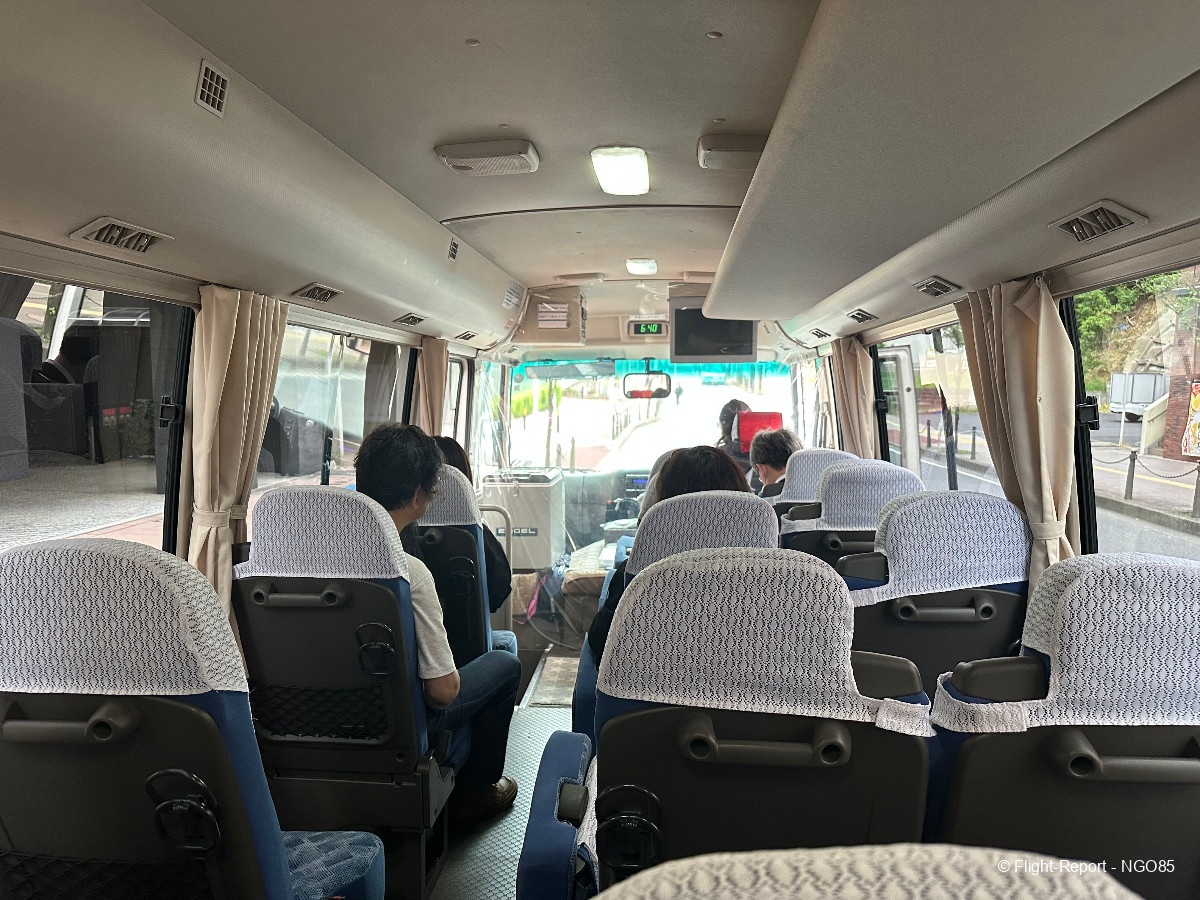
After a quick stop at T2/T3 to let off one passenger, we crossed the JL and NH buildings before arriving at T1 at 7:00am.

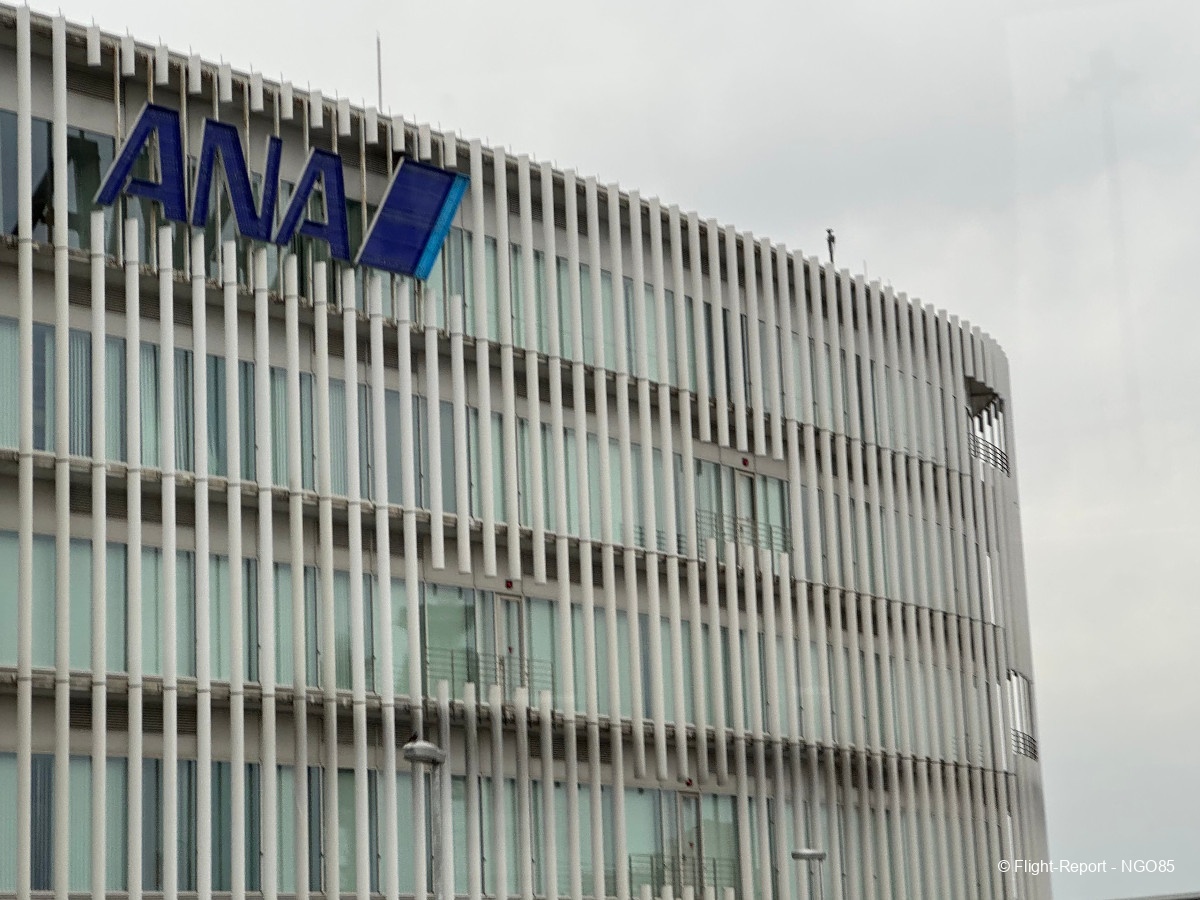

Heading in to T1.
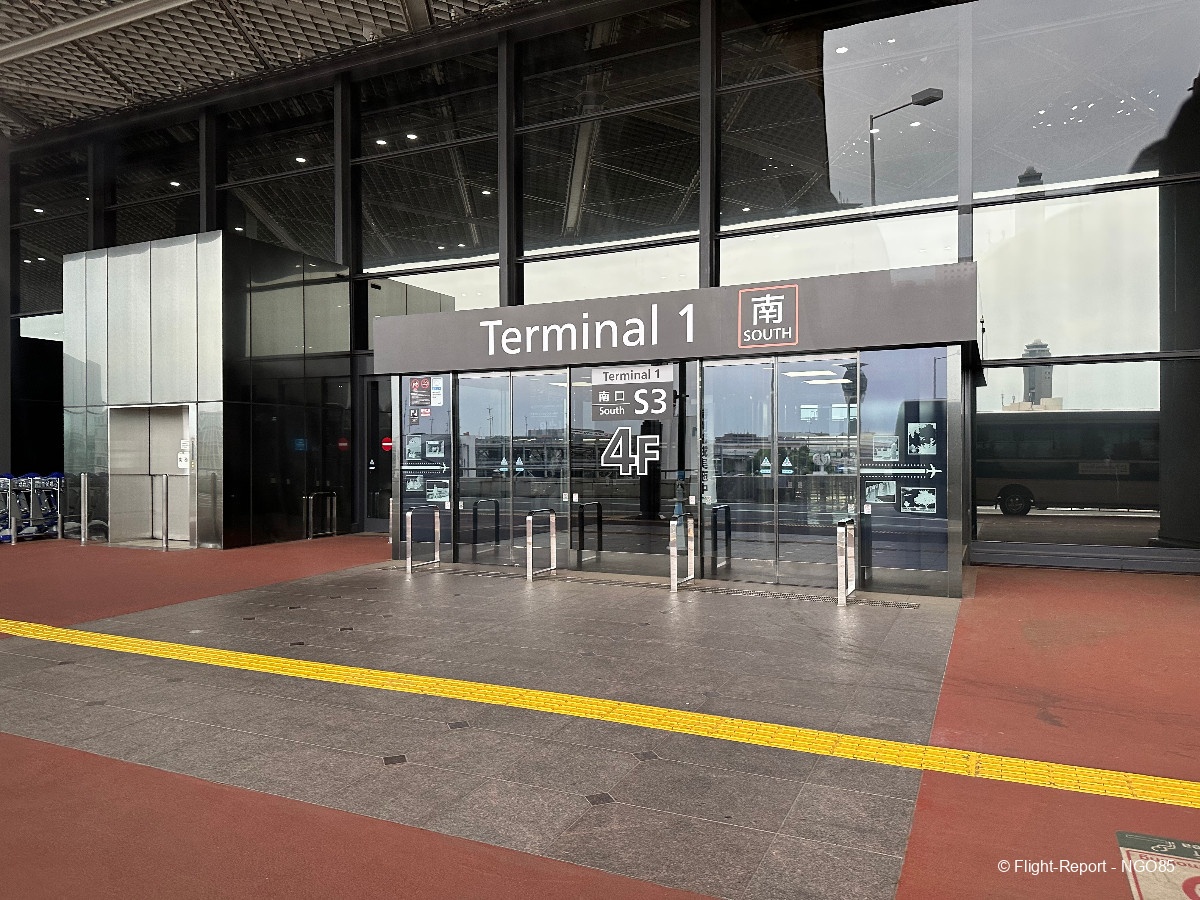
FIDS showing our flight was on time and departing from Gate 32. We are the 4th flight of the day.
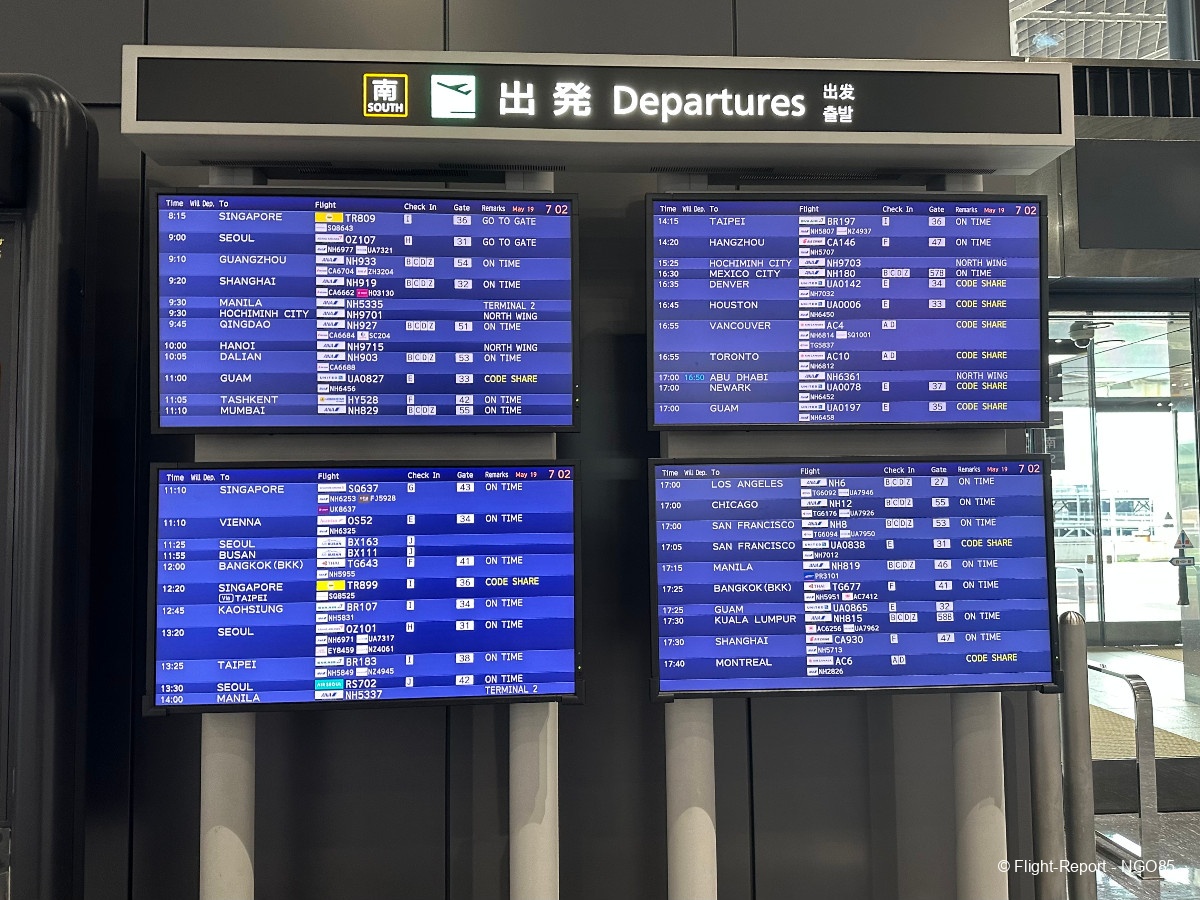
Our bags were already checked through to PVG and we had our boarding passes from SFO, but we headed over to the business class check-in area to confirm the China entry requirements before proceeding to security. The agents confirmed our seat choices and confirmed our bags were scanned for loading to PVG. They then wanted to see our QR codes for China health declaration (negative antigen result no more than 48h prior to departure) and directed us to a quarantine zone to complete the online registration. We quickly had to re-complete the registration through WeChat and obtain our QR codes. The whole process is pretty absurd since they allow the test to be completed 48h before departure, but only provide QR codes valid for 24h so our QR codes obtained in SFO were already invalid even though the tests were still valid.
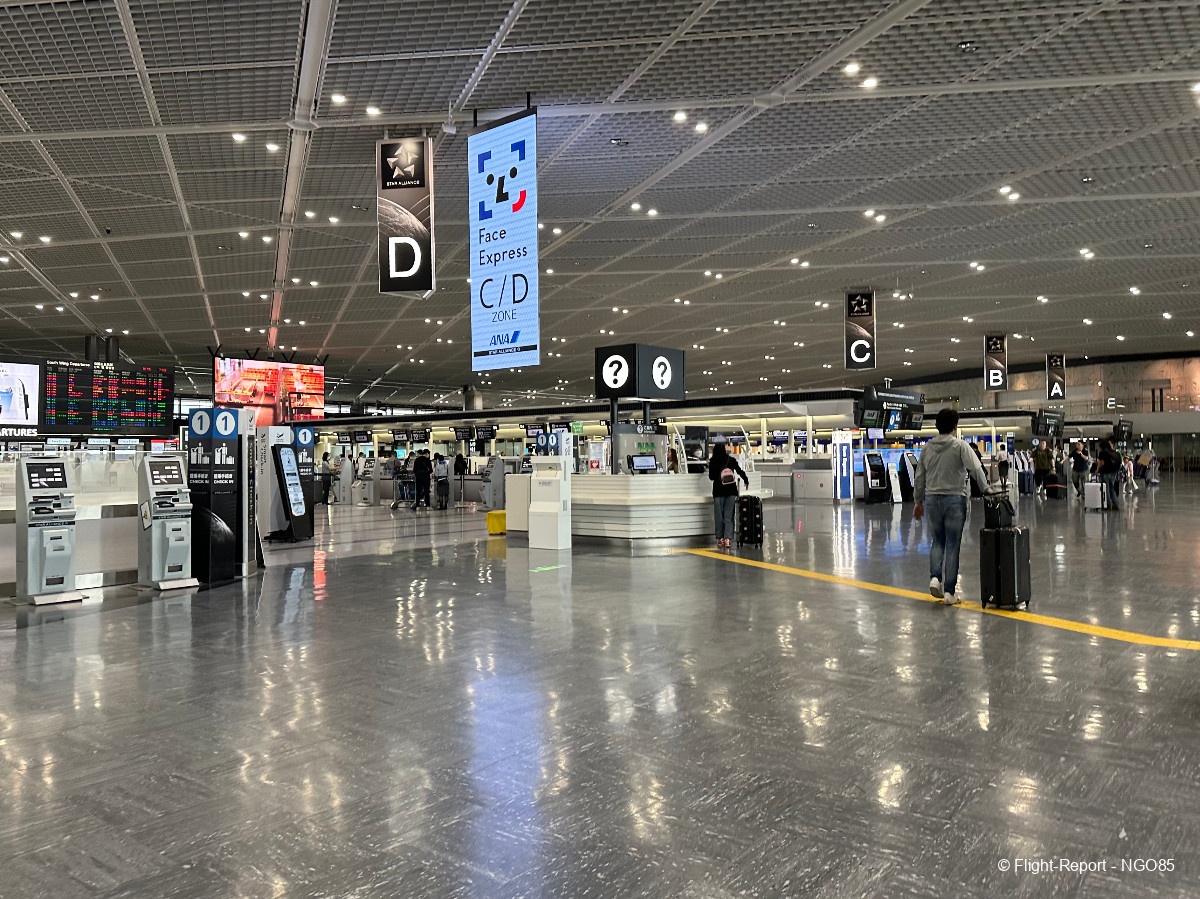
Once we showed our valid QR codes, we were escorted out to the Gold Track line. Security was empty and immigration was empty and we were deposited downstairs into the terminal air side.
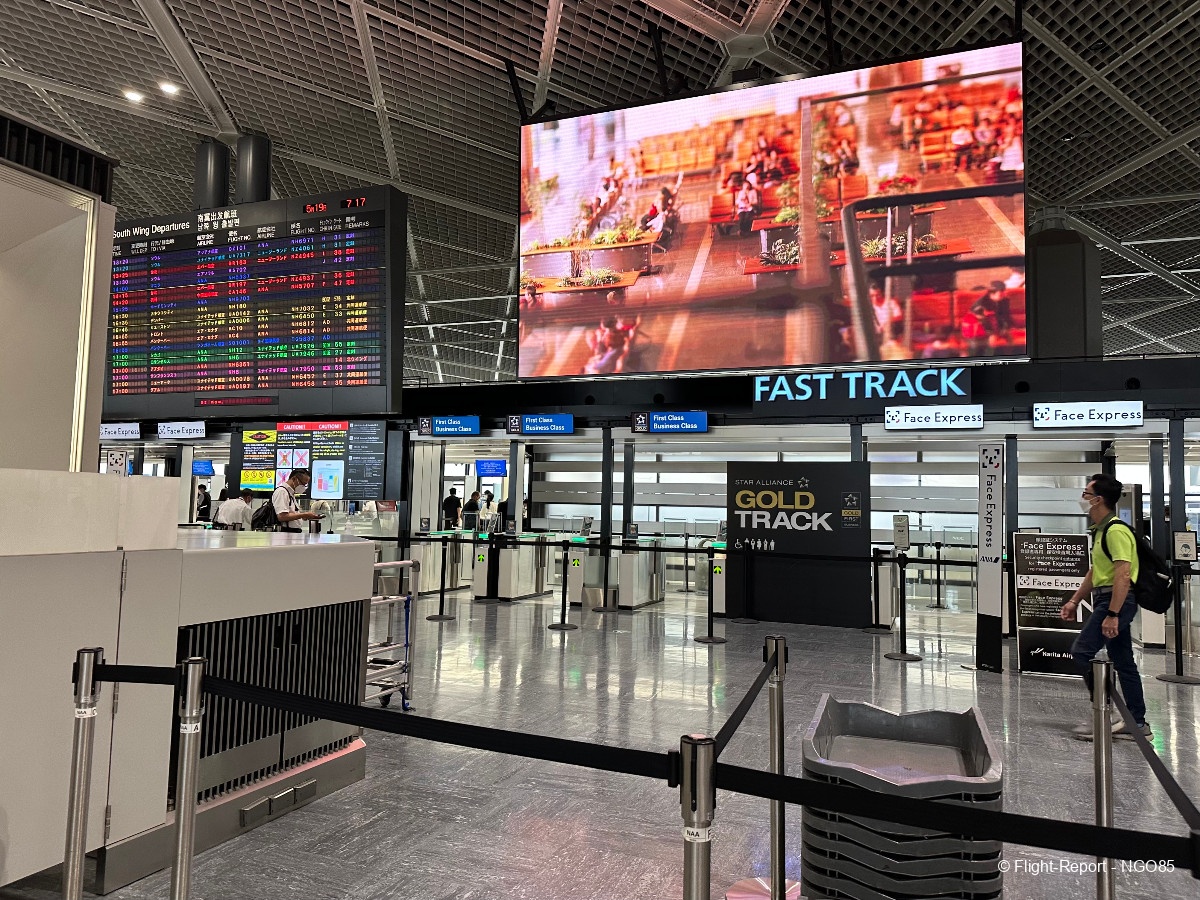
NRT is great for plane spotting (including an observation deck) and the first thing we see is our NH B789 to PVG and a TR B788 to SIN.
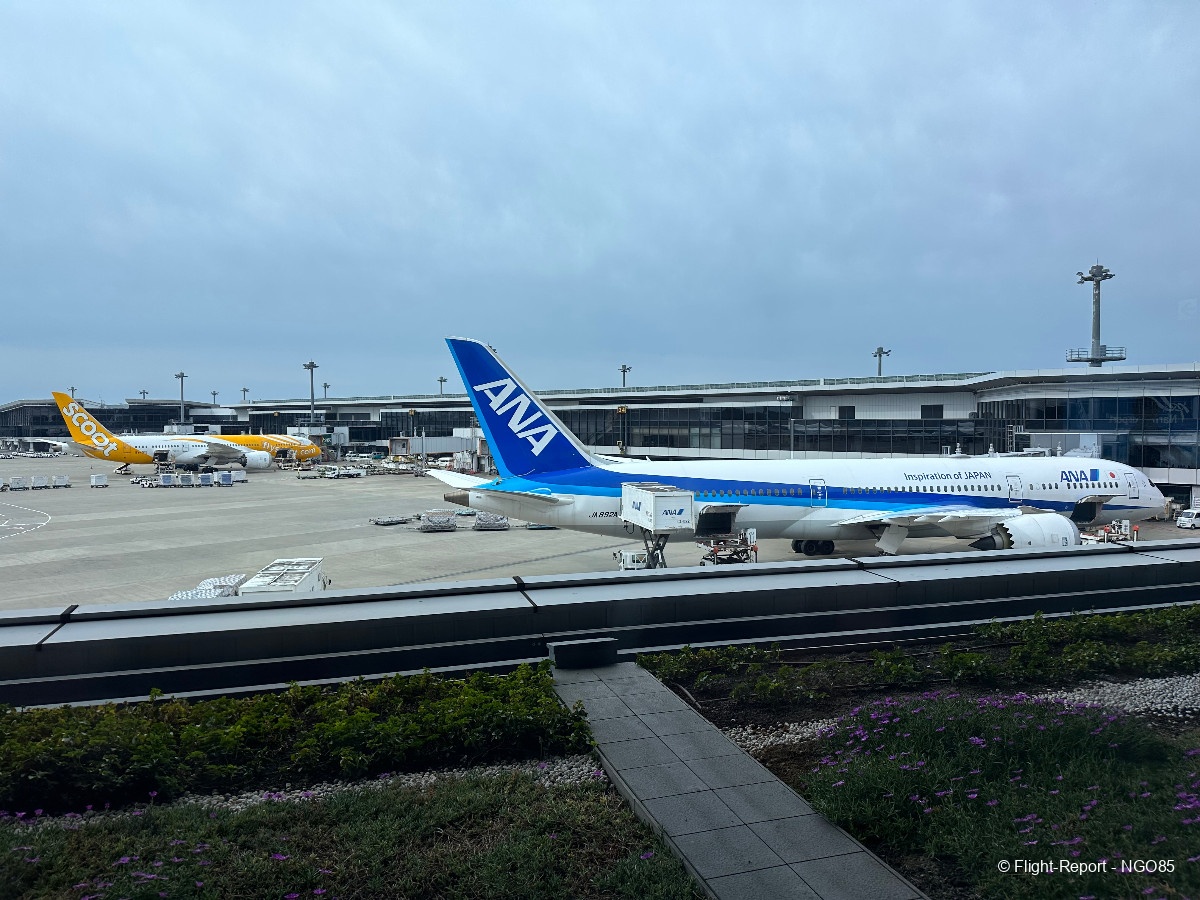
After a quick look at our plane, we started our trek to the NH lounge near Satellite 4 since it was closer to our gate.
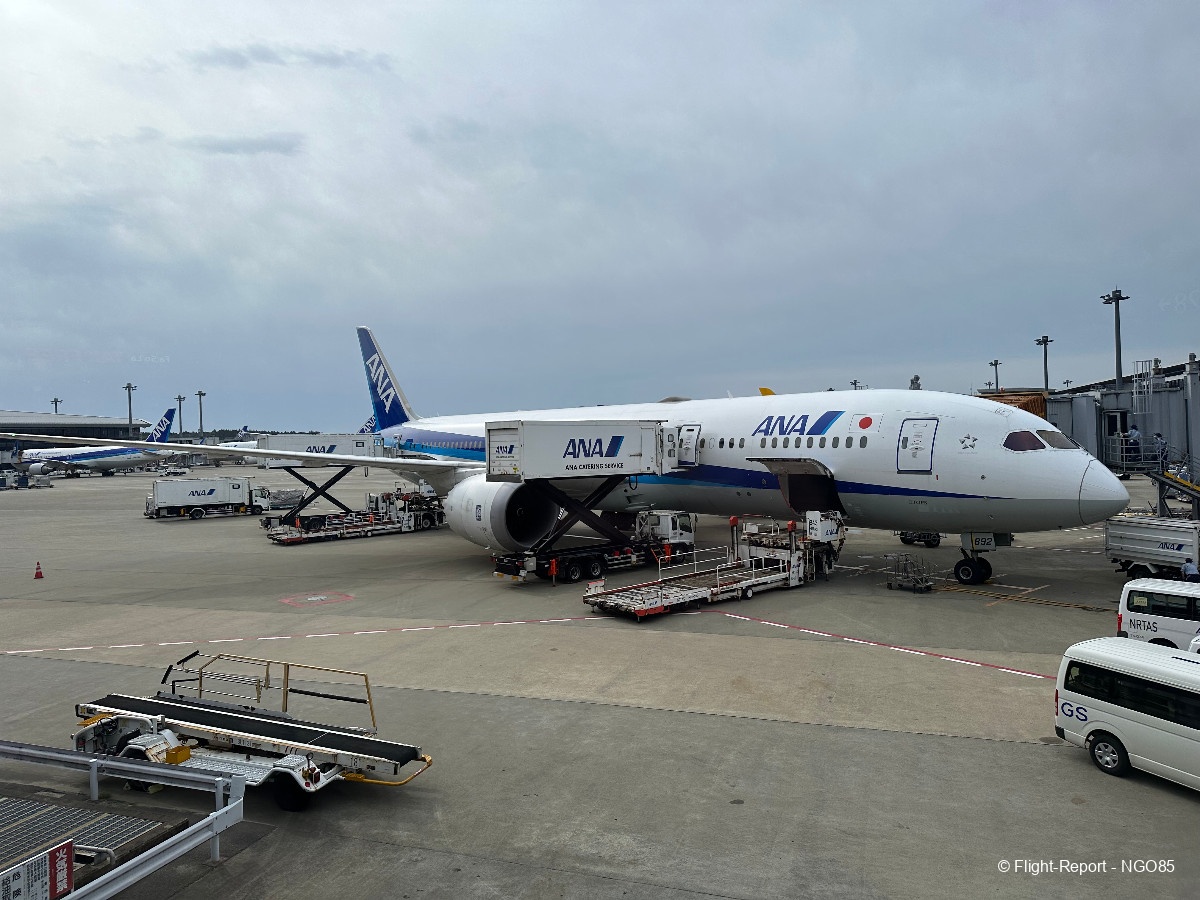
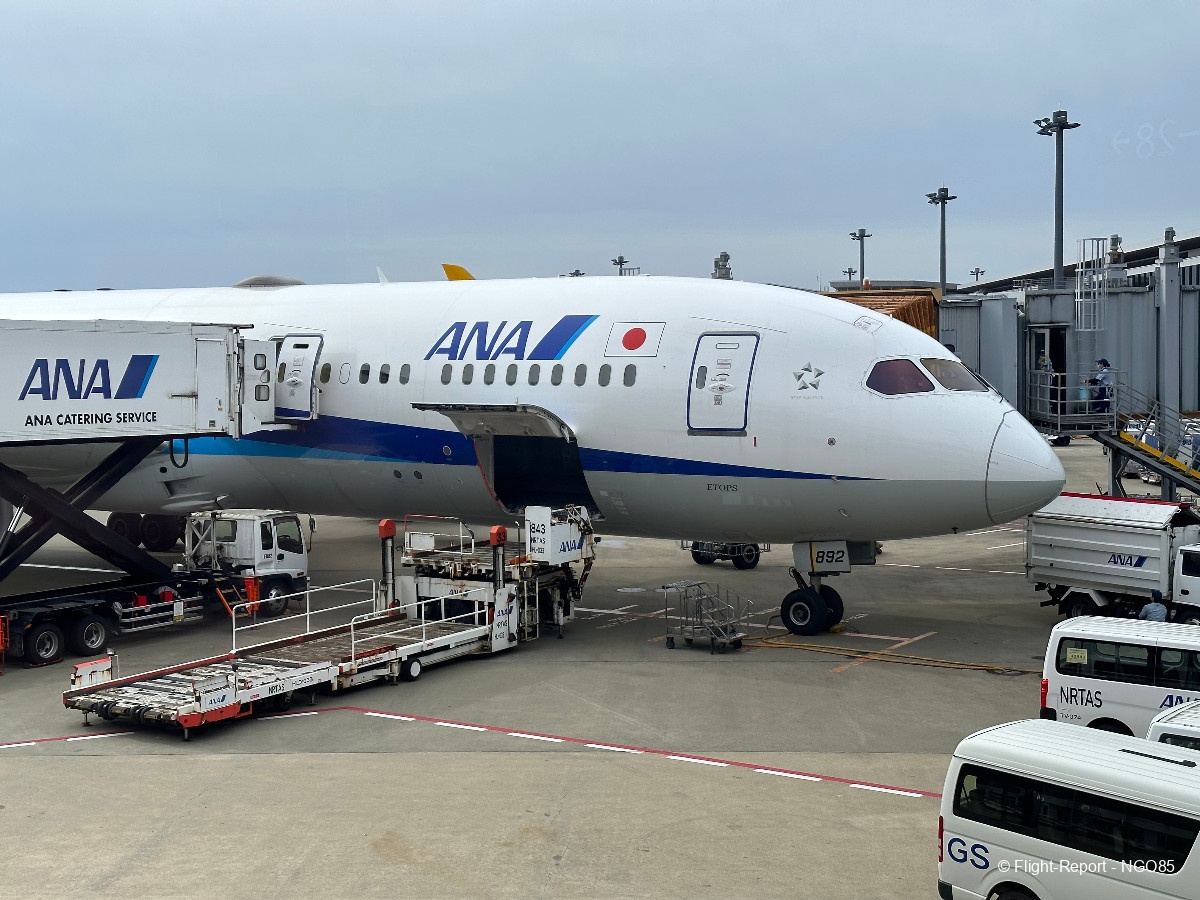
Attempt 1 was a fail since the NH Lounge by Satellite 4 doesn’t open until 13:00.
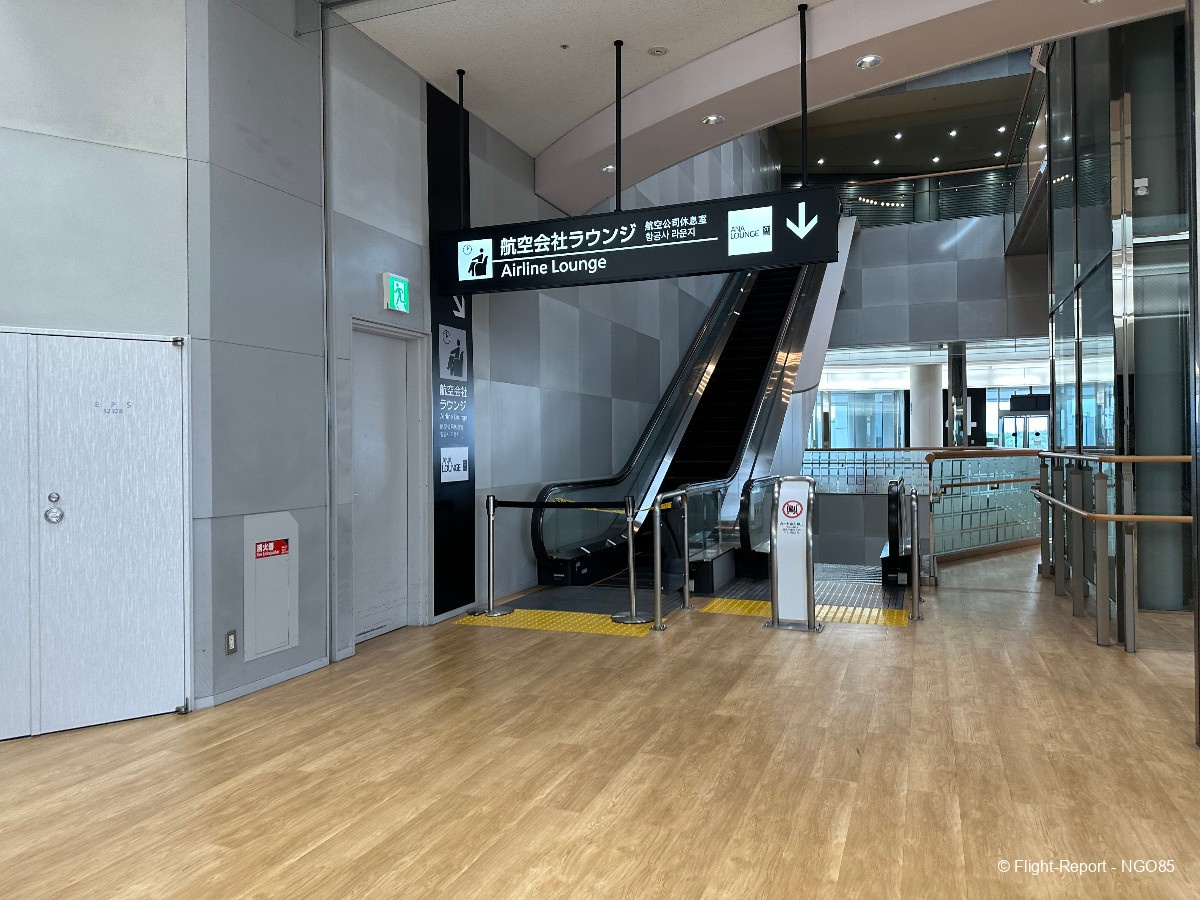
We instead walked back to the UA Club that is near our gate. Attempt 2 was also a fail since the UA Club doesn’t open until 8:45. We decided not to walk all the way to the other side of the airport to use the other NH Lounge since we only had ~45 minutes until boarding so we just grabbed some snacks and did some shopping in the close vicinity. In hindsight, we should have just gone to the KE Lounge with PriorityPass since KE has an early morning flight to ICN leaving from T1 so their lounge opens early.
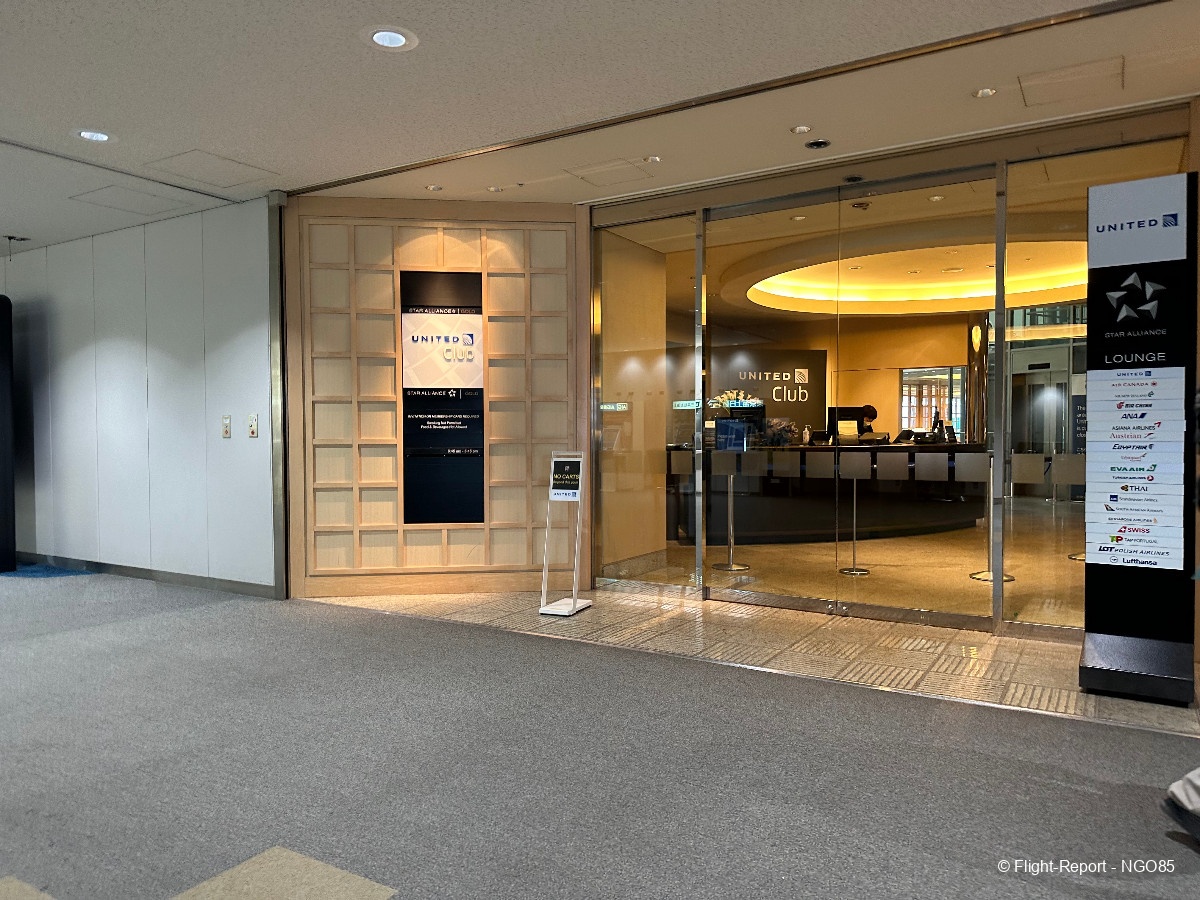
At 8:40, we headed over to our gate passing a nice looking ZG B788 to ICN. Interesting that ZG uses T1 instead of T2 like parent JL.

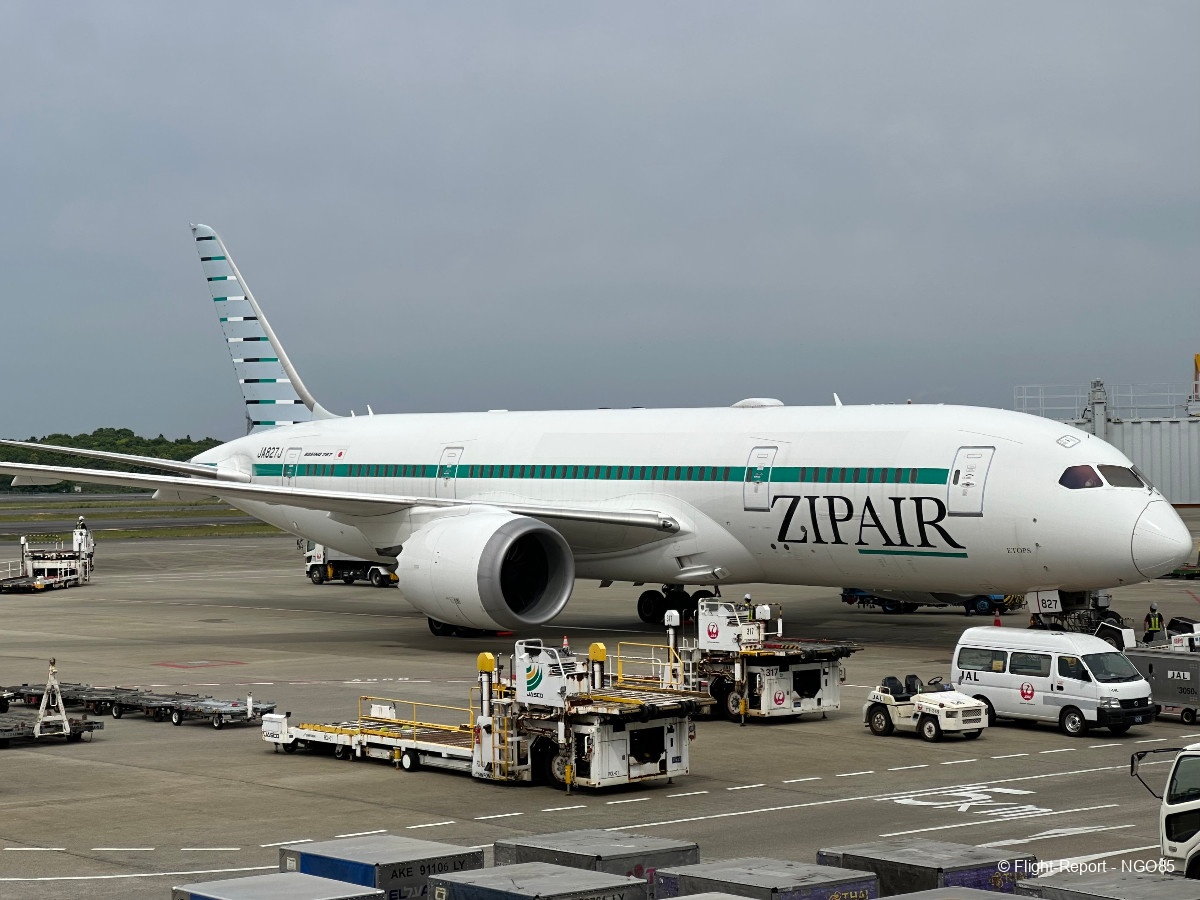
Back to our gate, our plane is under final preparations. Our B789 today will be JA892A, which is in the low-density international configuration with 215 seats (J48, 21W, 146Y). I didn't notice this change when our boarding passes were issued, but it appears that they kept my original seat preferences of being in the last row, but they flipped me over to the other side of the plane to ensure I had a close adjacent aisle seat to my son. This plane had arrived late last night from Hanoi after doing LAX-NRT-HAN-NRT the previous 24 hours. It’s crazy to think that their B789s have more seats than their B77Ws, which only have 212 seats these days (which is also less than W6's A321neos^^).

Reaching our gate, there was a long line already forming, but we took a seat by the window since an announcement was made as we arrived to the area that boarding would be delayed.
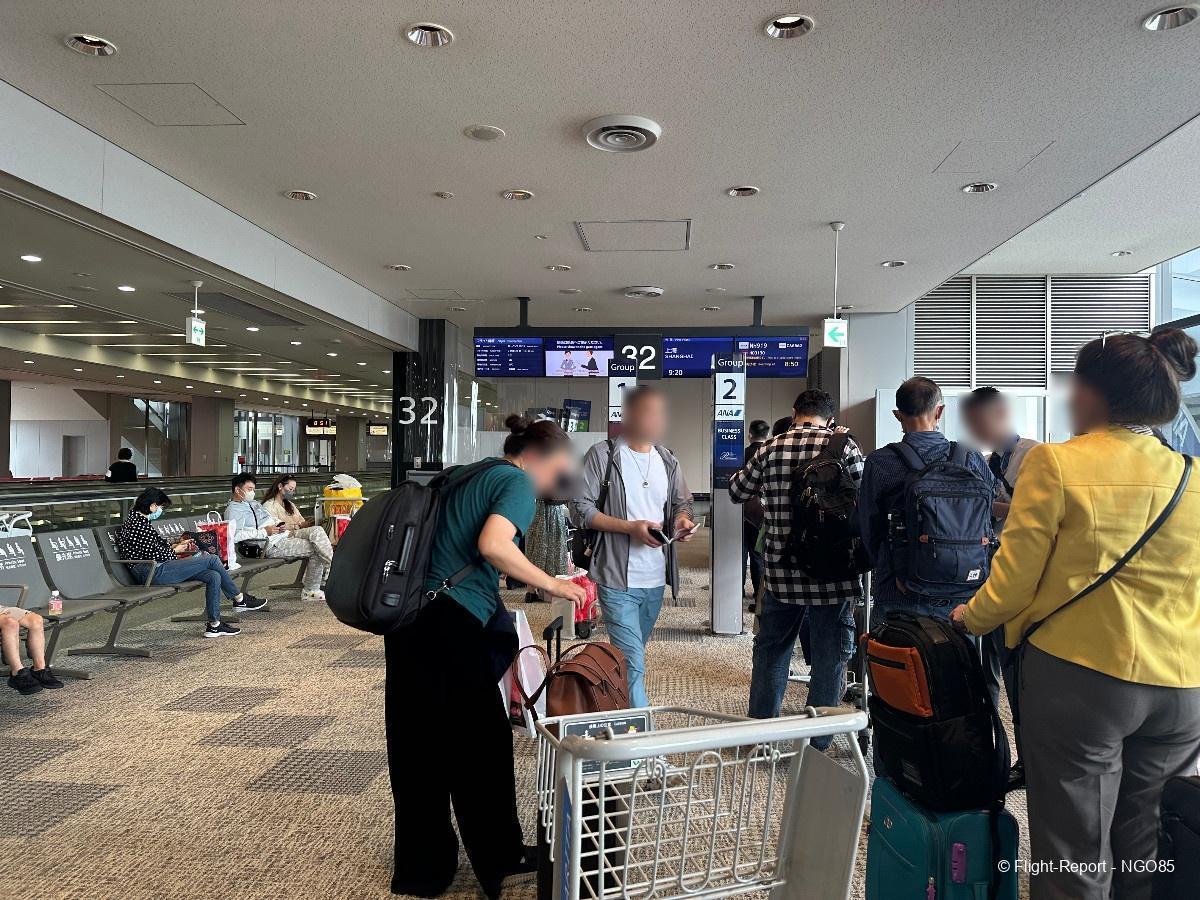
OS B772 arriving from VIE next door.

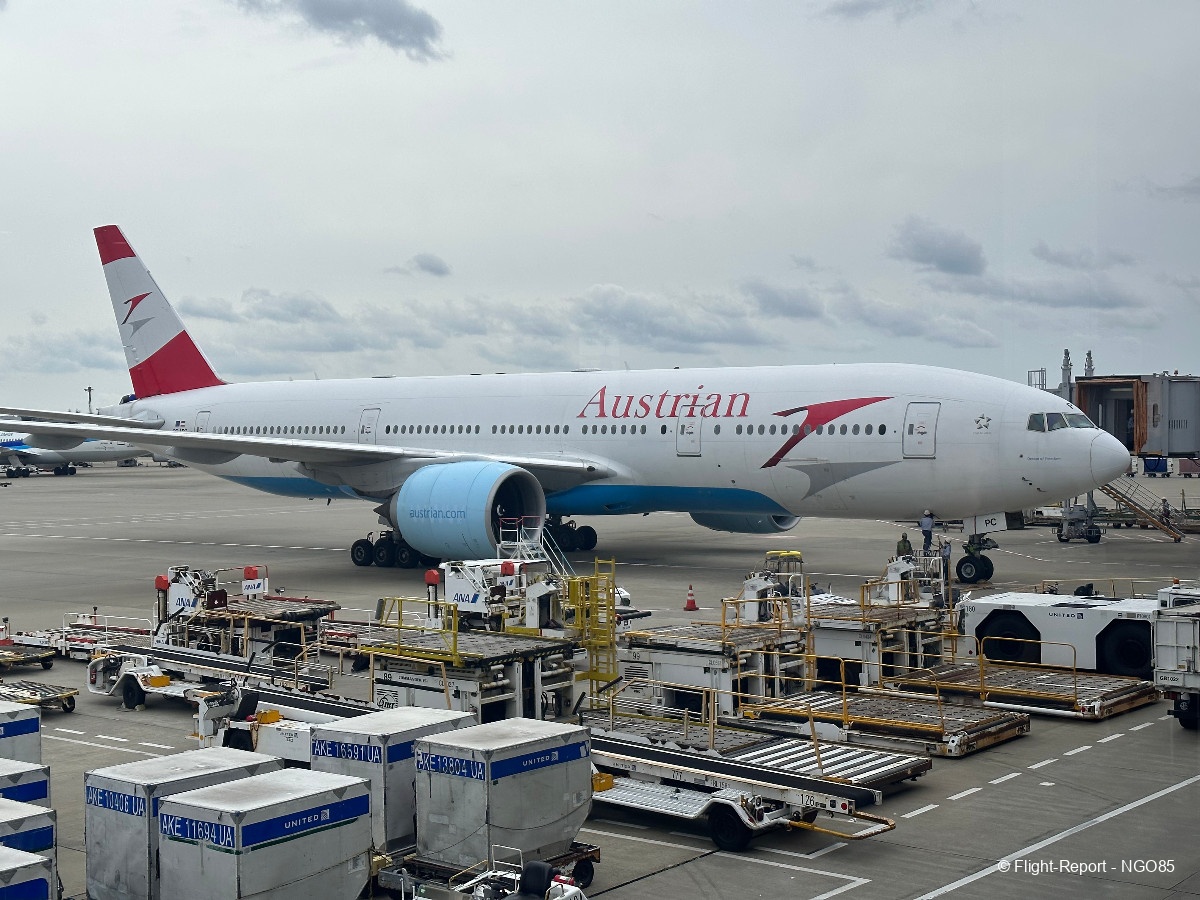
flight
All Nippon Airways, NH919
Equipment: Boeing B787-900 [JA892, delivered June 2017]
Departure: 09:20 (ATD: 09:40)
Arrival: 11:40 (ATA: 11:25)
Flight time: 2:46
Boarding finally started at 9:00 with pre-boarding as the agents tried to organize the horde into their designated boarding groups while performing document checks. We boarded with Group 2 and headed into the jet bridge.
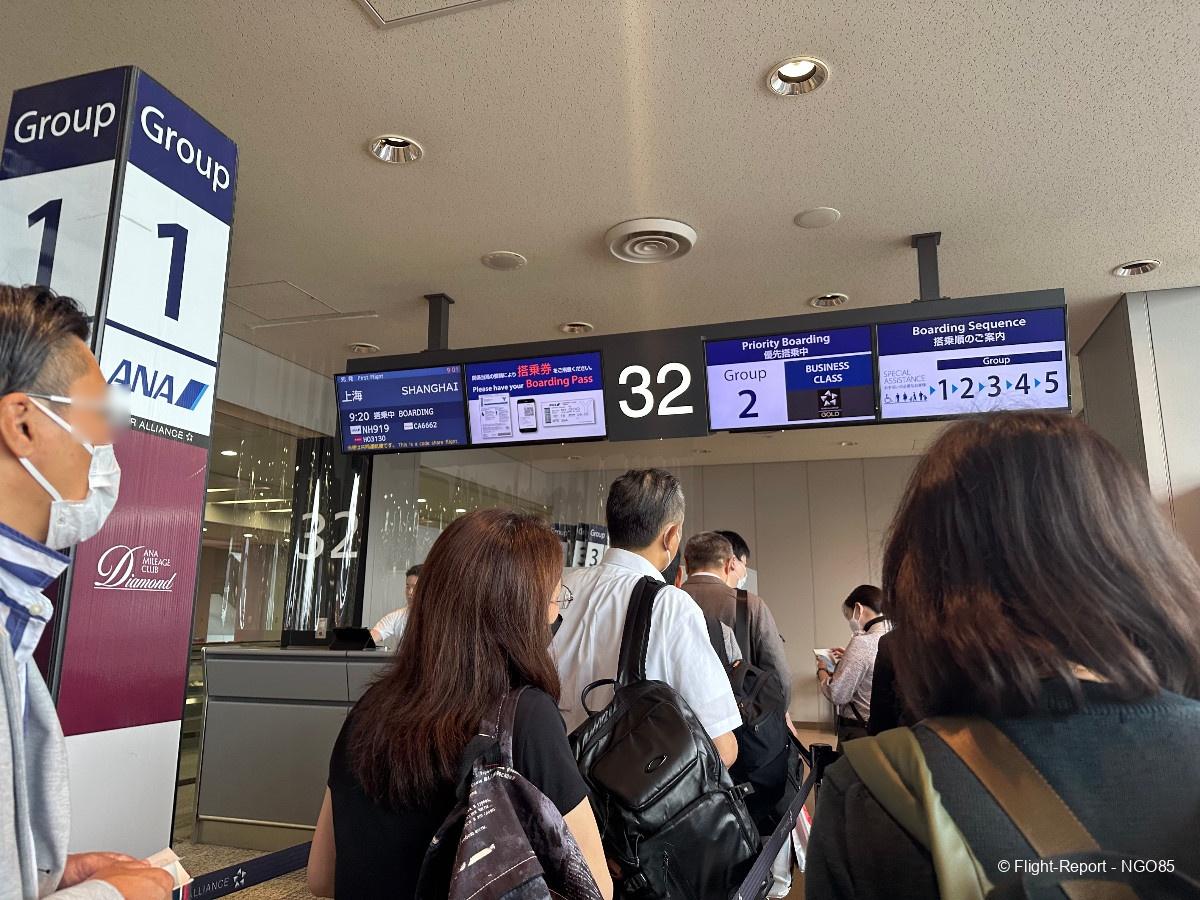
Even though we are in the rear J-cabin, we were directed to board through L1. Joystick and L1.

The greeting was warm and we were direct through the galley and to the right. A chance to log R1 as well.

We passed through the main J cabin, which has 26 seats across 7 rows. Then we reached the rear “mini” cabin, that has 22 seats across 6 rows.
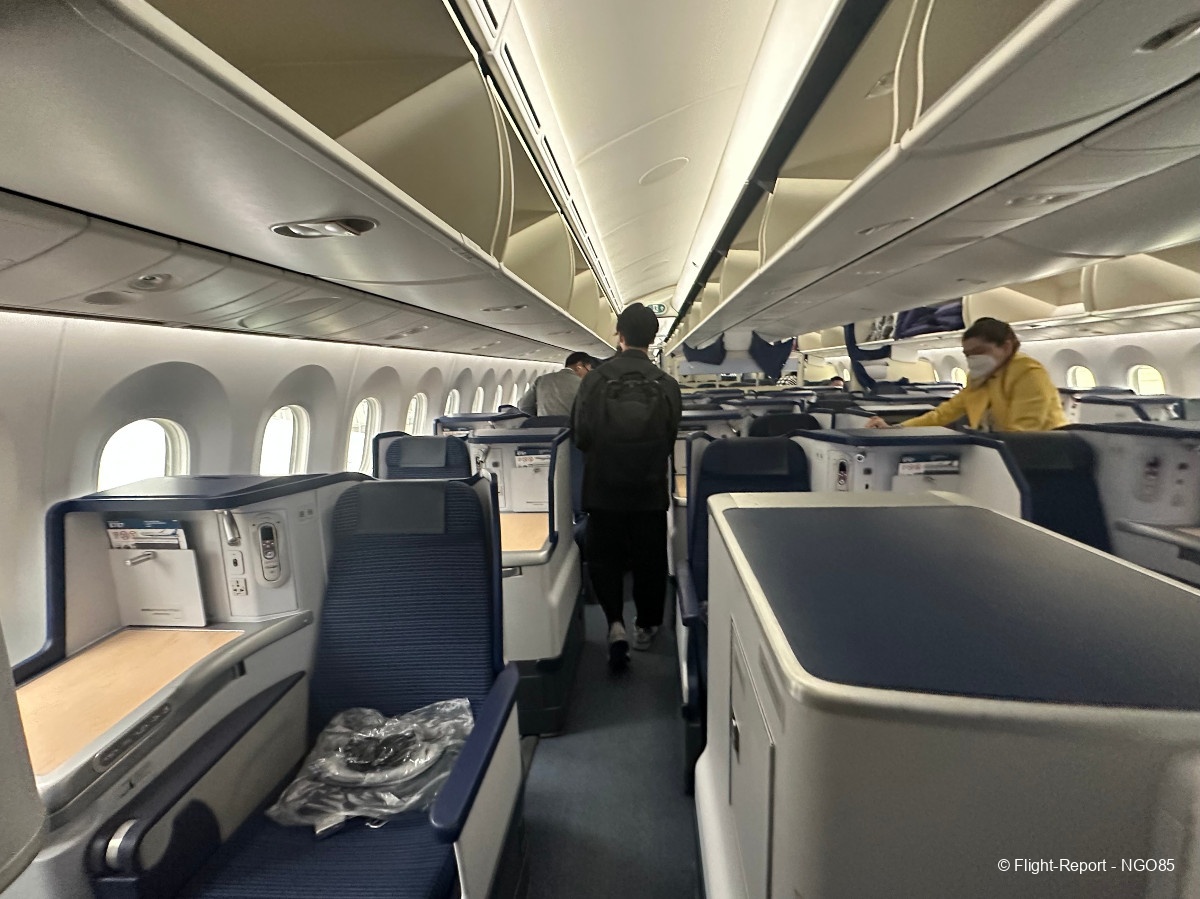
A picture of 8H in the bulkhead.

My wife and son’s seats in Row 13, the last row of the rear cabin.
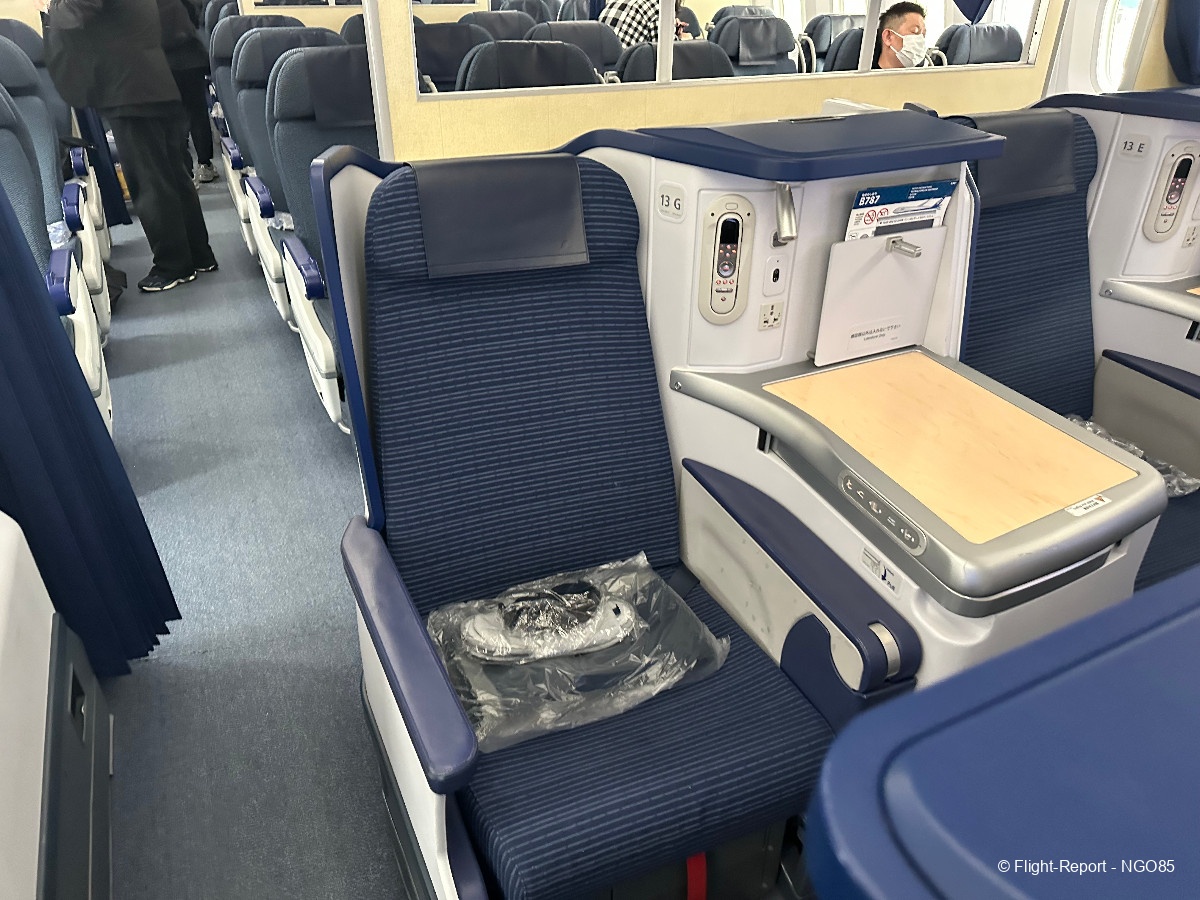
My seat, 12H.
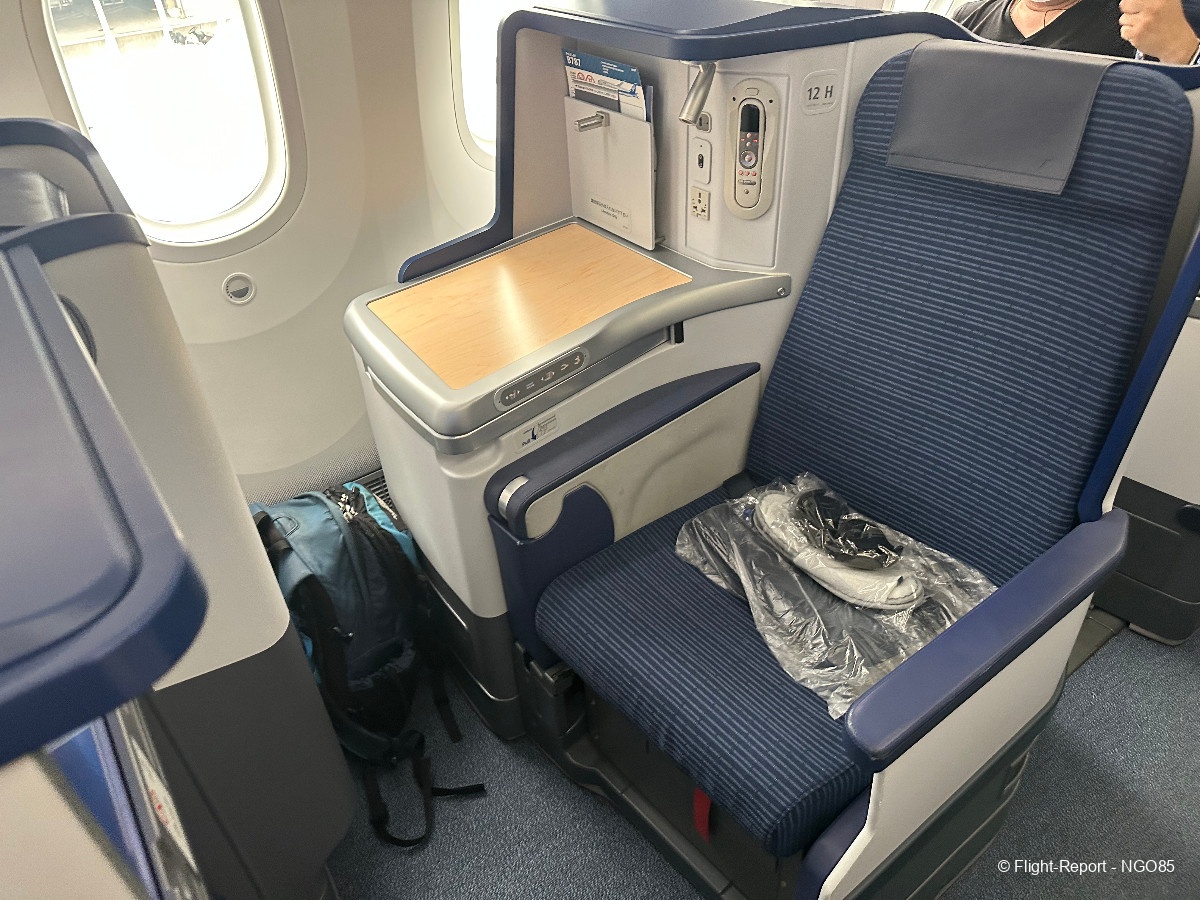
Pre-placed in the seat were headphones, slippers, and blanket. No pillows at the seat, but they were offered by the crew from the overhead bins.
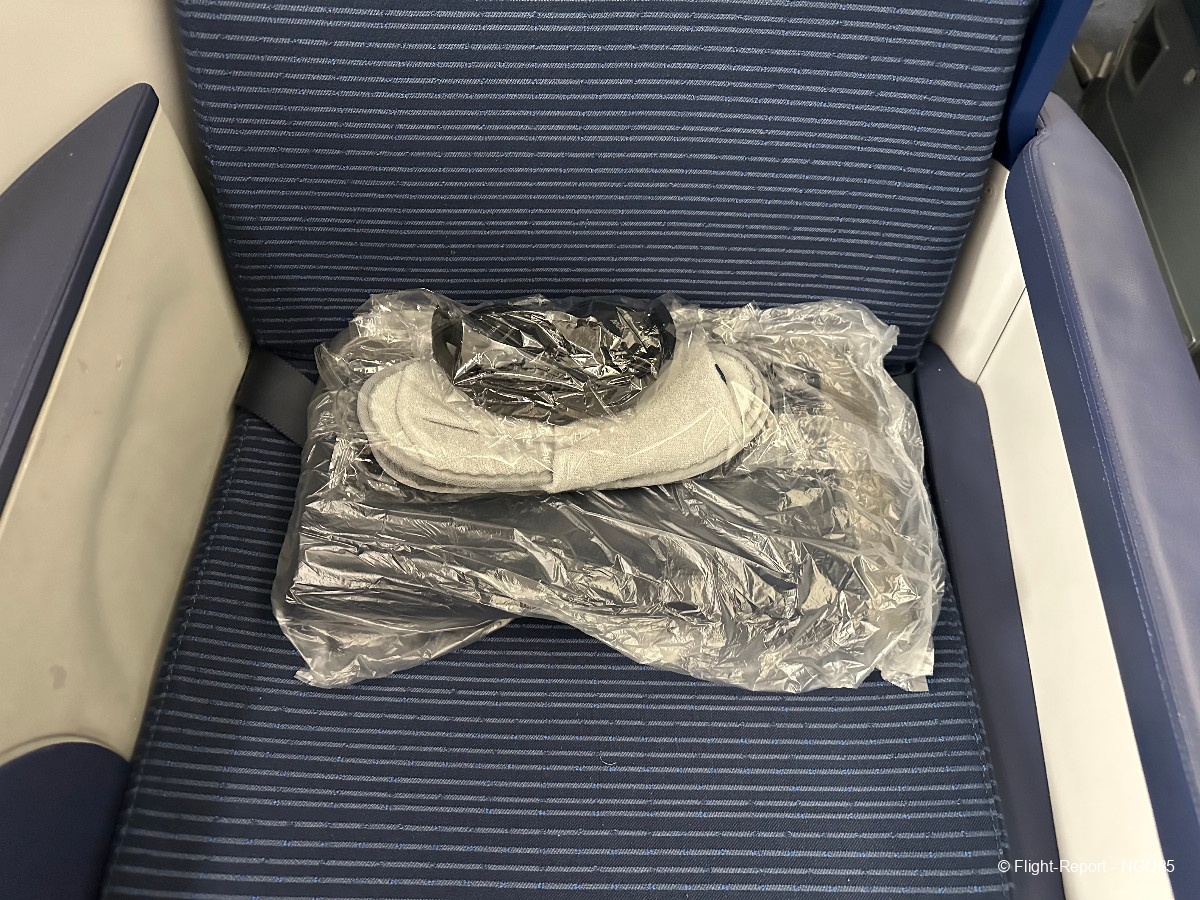
The seat pitch is good and the same as the B77W’s version of this cabin. The width, however, is noticeably narrower than its big sister’s version. The B787 has a cabin width of 5.5m and the B77W has a cabin width of 5.9m. With the same number of seats across the cabin, the compression of the cabin feels very obvious having spent the previous flight on the wider product. These seats are also less private with smaller privacy partitions between the seats, particularly in the center section where on the B77W there is a vertical barrier enclosing the side table of every seat. Considering this plane had done NRT-BRU and NRT-LAX the couple days previous, this factor should be considered when booking flights where there are options between aircraft types.
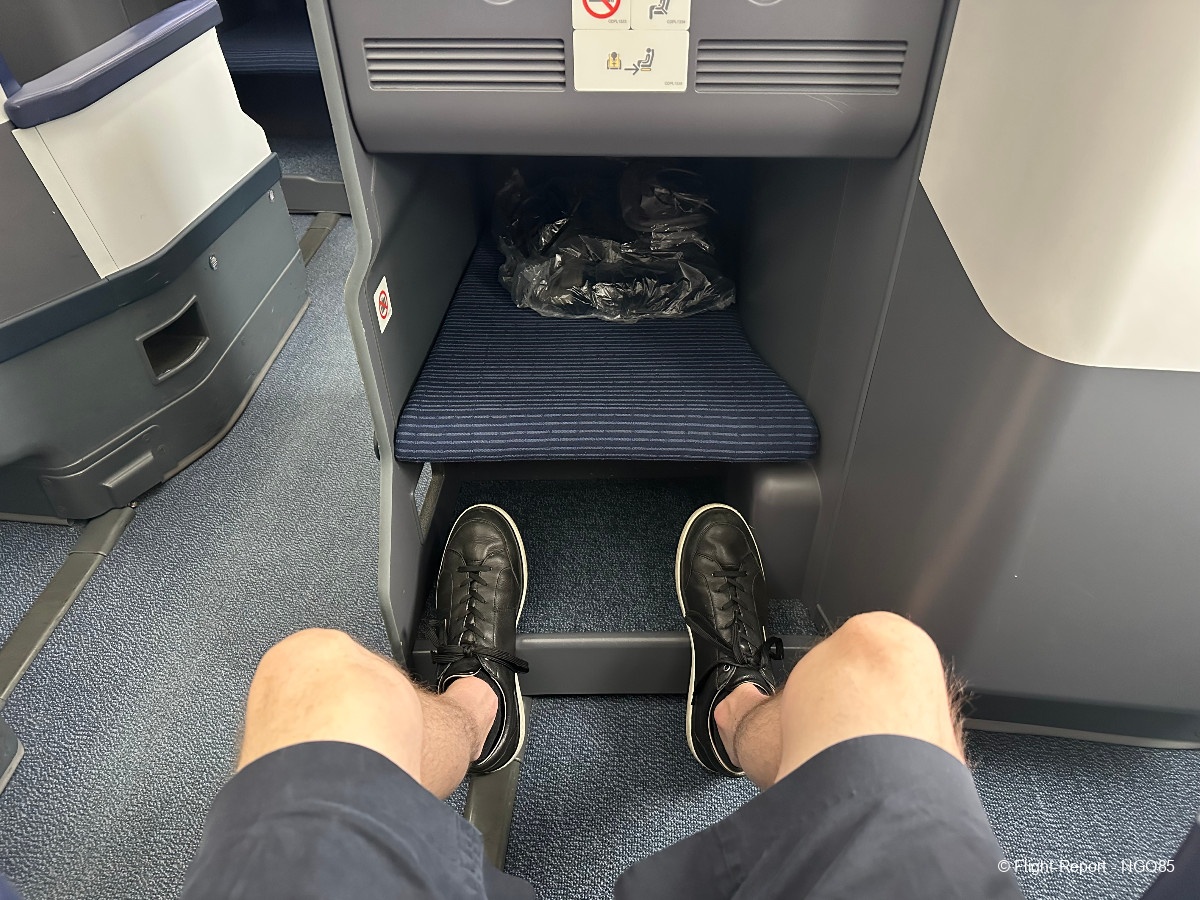
Pictures of the cabin during boarding. The load in the J cabin was ~40% so it’s still some time before demand picks back up into China from 3rd countries that are more likely to transit through NRT vs HND (handles more of the business travel from intra-Asia).

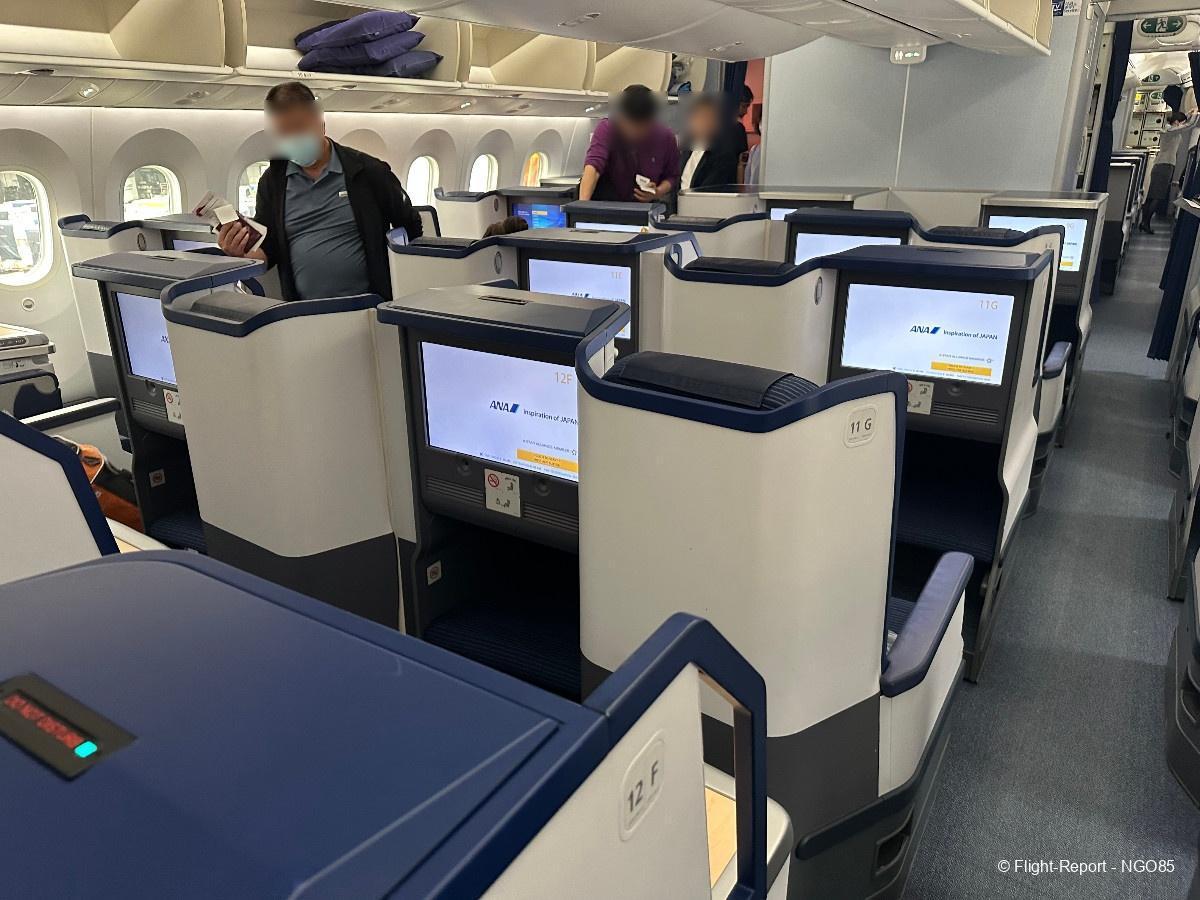
A look back at the W cabin, the load would only be ~20%. The W product retains the older product with blue cup holders whereas the J product was refreshed to wood tones.
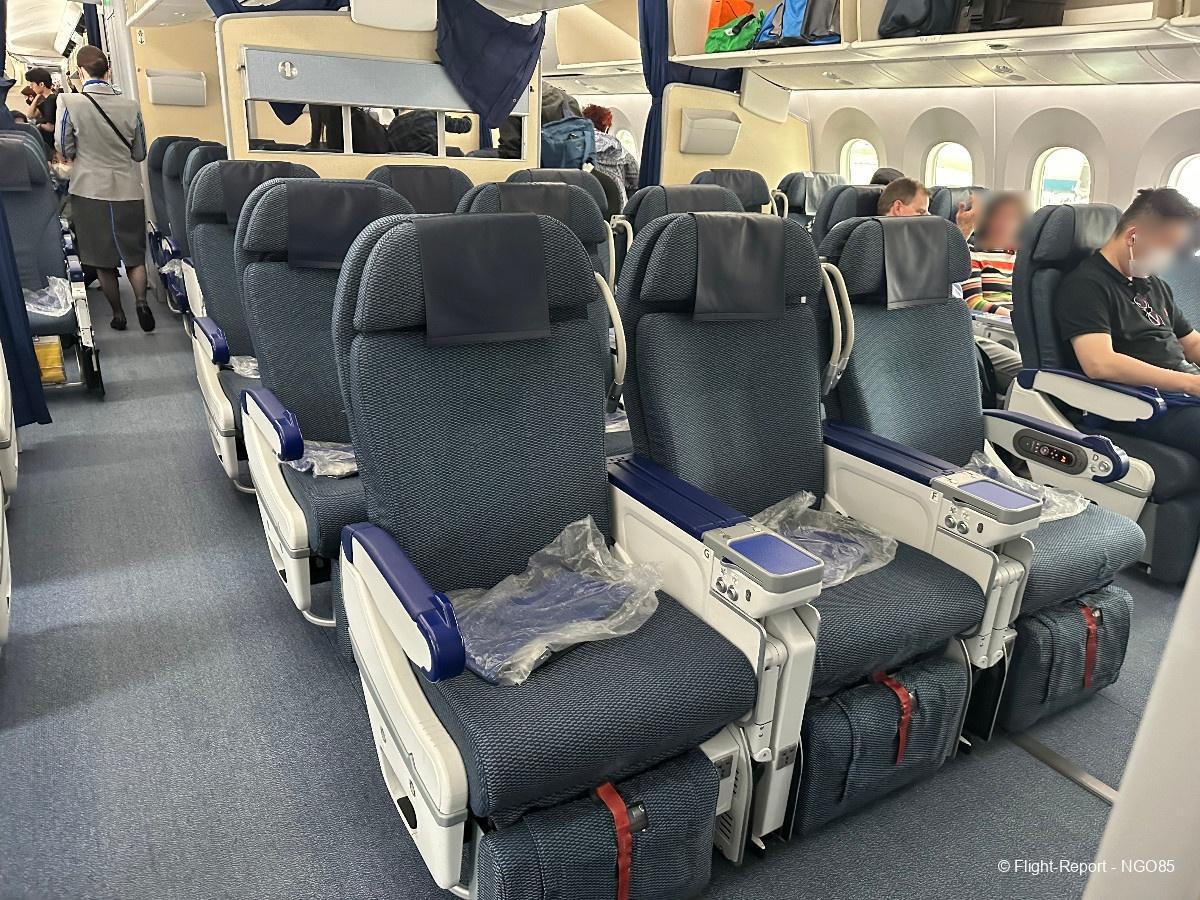
The seat controls are along the lip of the side table and the tray table is housed inside.

The IFE remote, charging outlets, headphone jack, literature compartment, and reading light are housed on the wall of the side table. There are no storage compartments. Also, there are no non-slip surfaces since they opted for a faux-wood finish that looks sleeker, but is less functional.

The foot well is long but tapered making it narrow at the end. It is definitely less roomy than in the B77W’s seat.

The storage compartment under the foot well is about half the size of the B77W’s seat and can only accommodate a pair of shoes.

The literature contents include a barf bag, safety card, and menu.

Safety card on the B789.
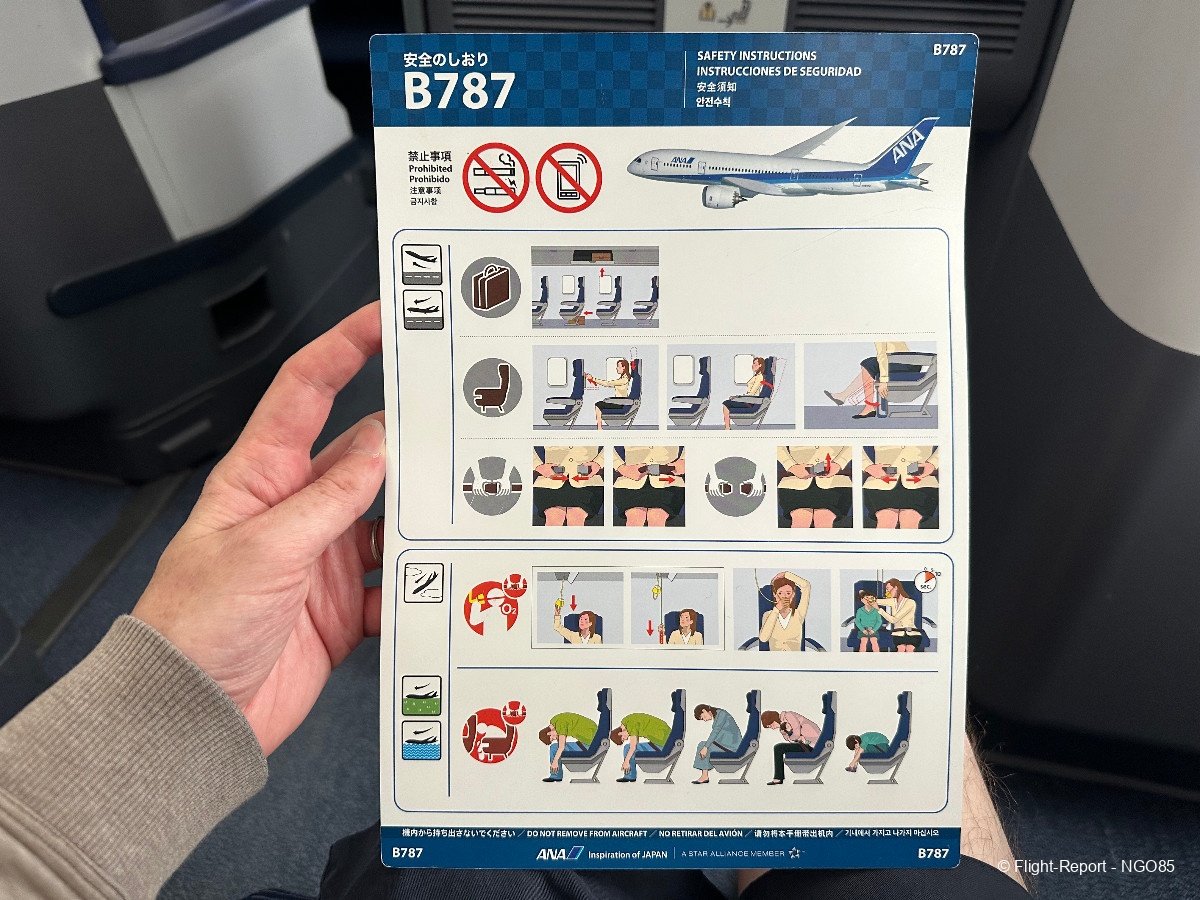
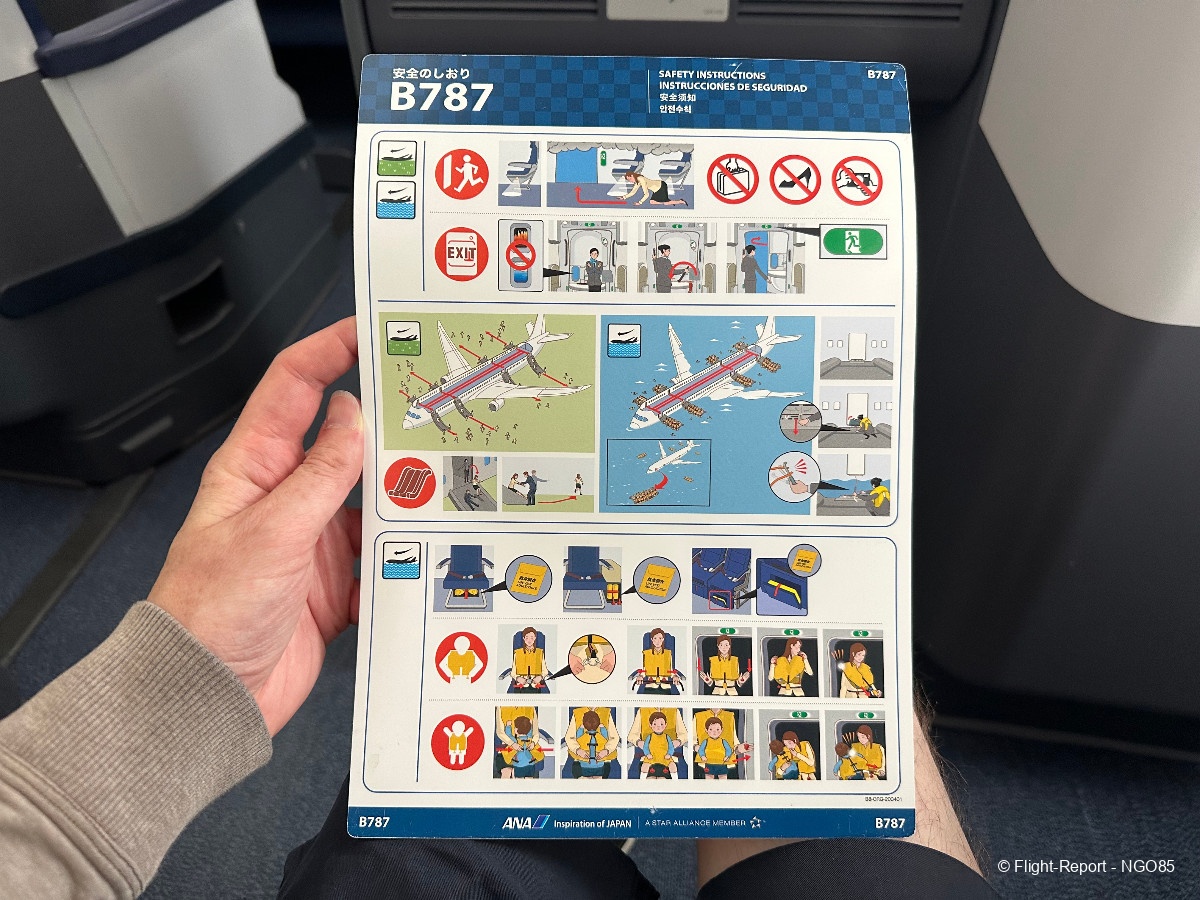
The regional blanket is functional, but completely unnecessary since the cabin is very warm.
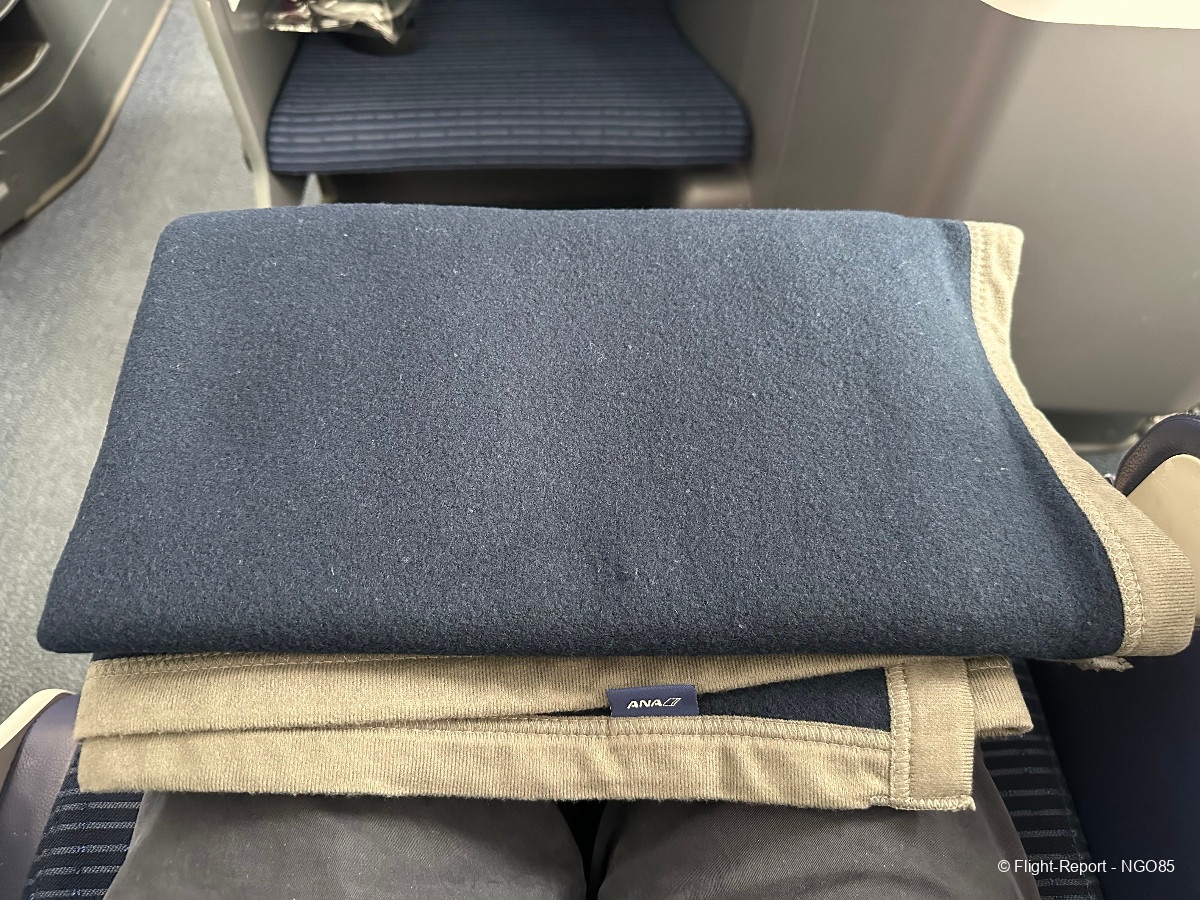
No individual air vents in this cabin either to help with the temperature.

The slippers are good quality with shoe horn and storage bag.

The Panasonic headphones are not noise cancelling and of mediocre quality.

Boarding completed at 9:15 and the jet bridge was retracted. They boarded the entire plane in 15 minutes with Japanese efficiency. It is worth noting that there are no PDBs offered on regional flights and there are no water bottles offered at the seat so make sure you are well hydrated before boarding.

All announcements are done in 3 languages, which takes forever. There were both native Japanese and Chinese speaking FAs on this route. Immigration documents were handed out as final departure preparations were completed.

We pushed back at 9:23 to start our taxi out.
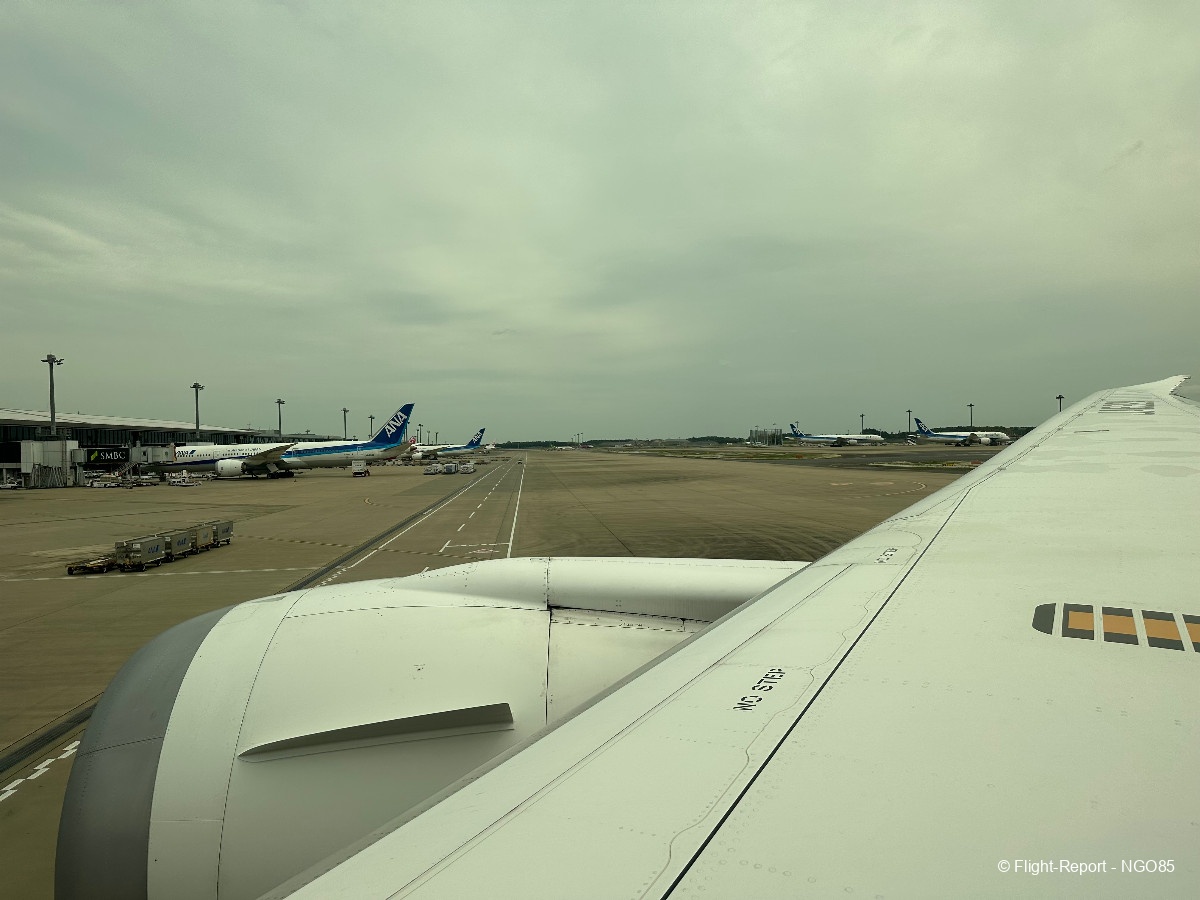
We taxied out behind a KJ A333 heading to BKK.
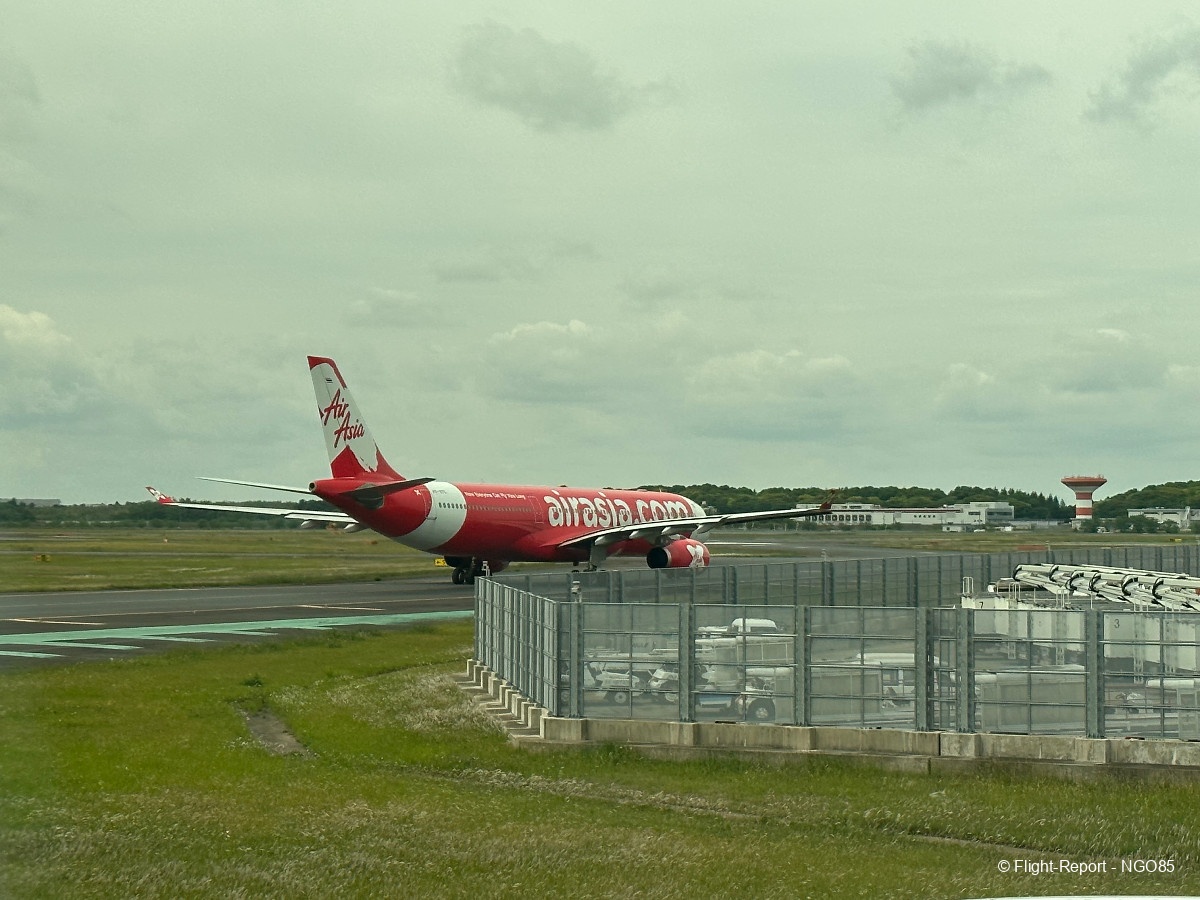
Looping around T1, we see some *A friends: SQ B787-1000 and TG A350-900.
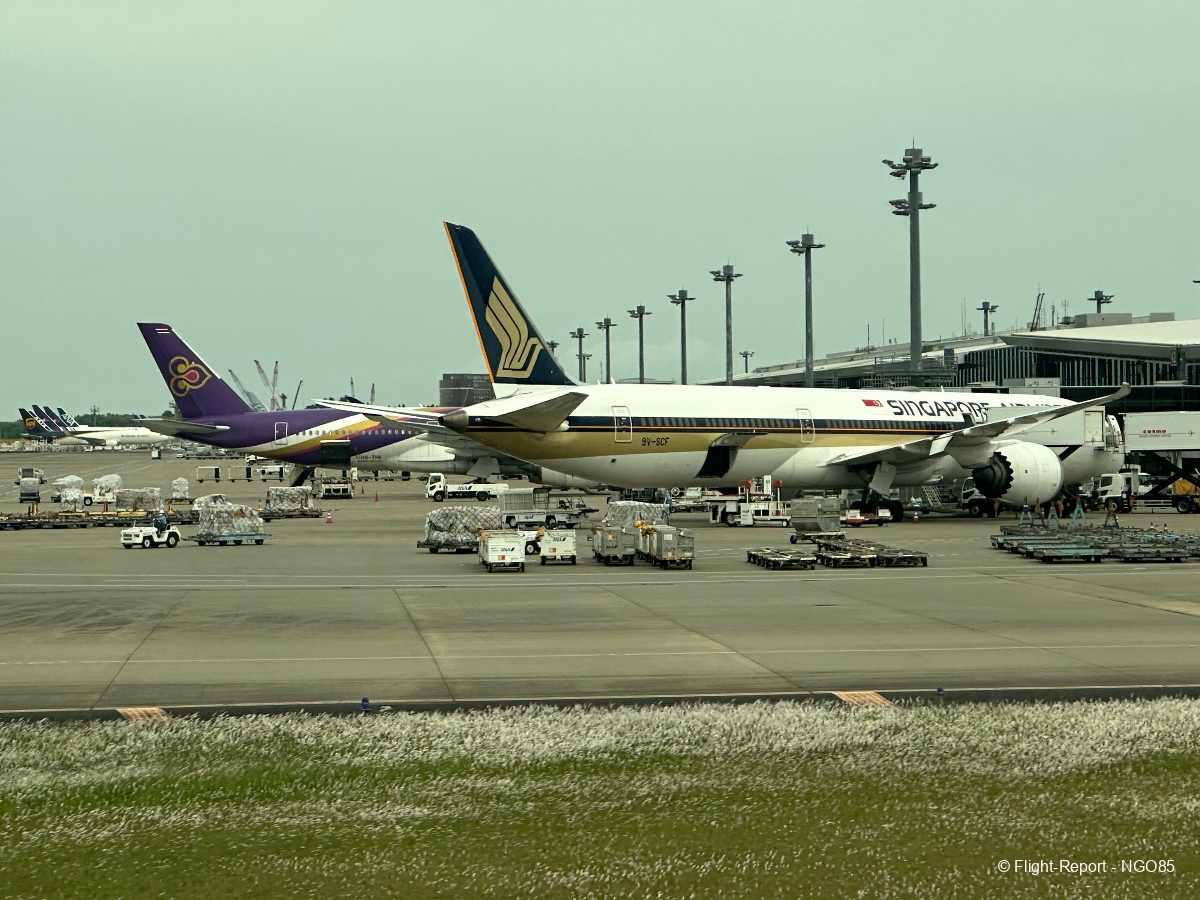
The ZG B787-800 is still waiting to leave to ICN. OZ and KE are already gone.
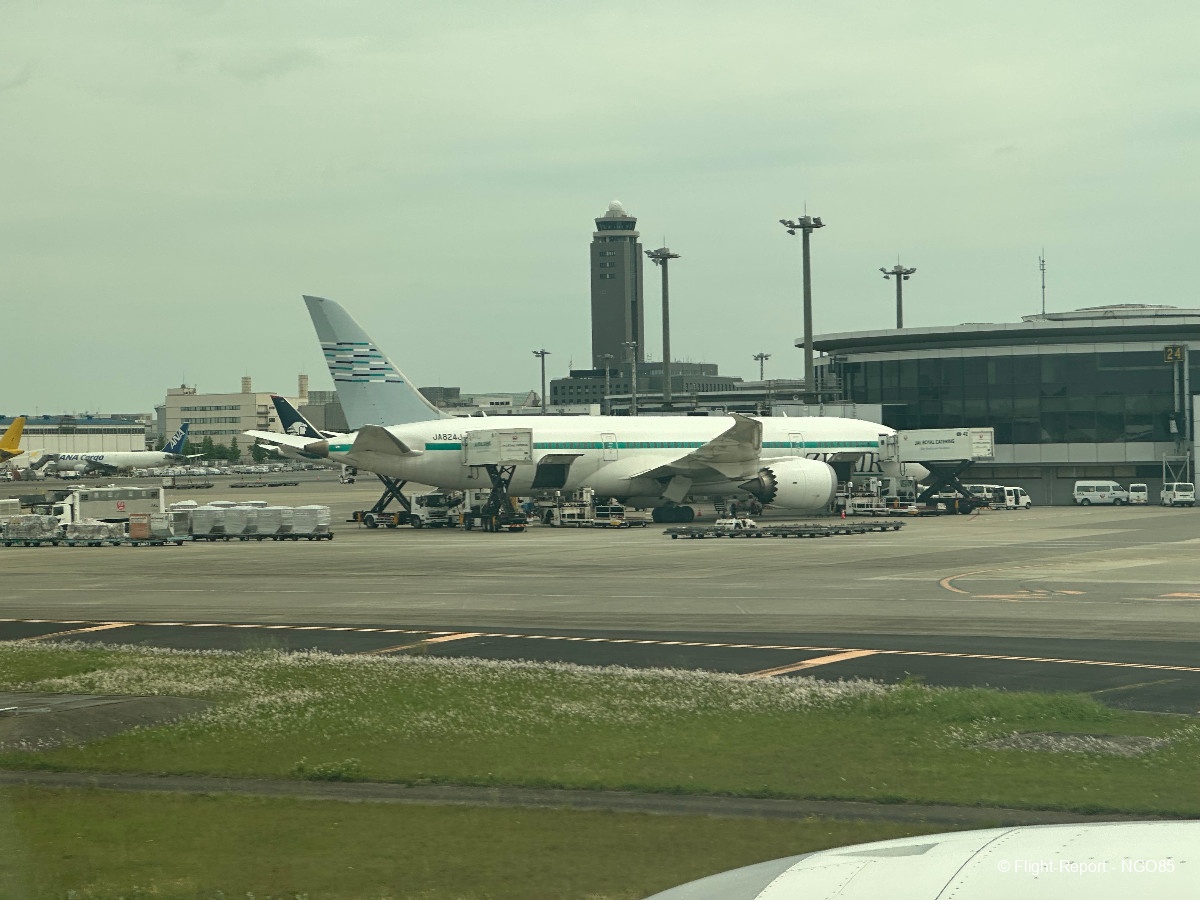
ST operations are a AM B787-800 and a pair of VN A321s.
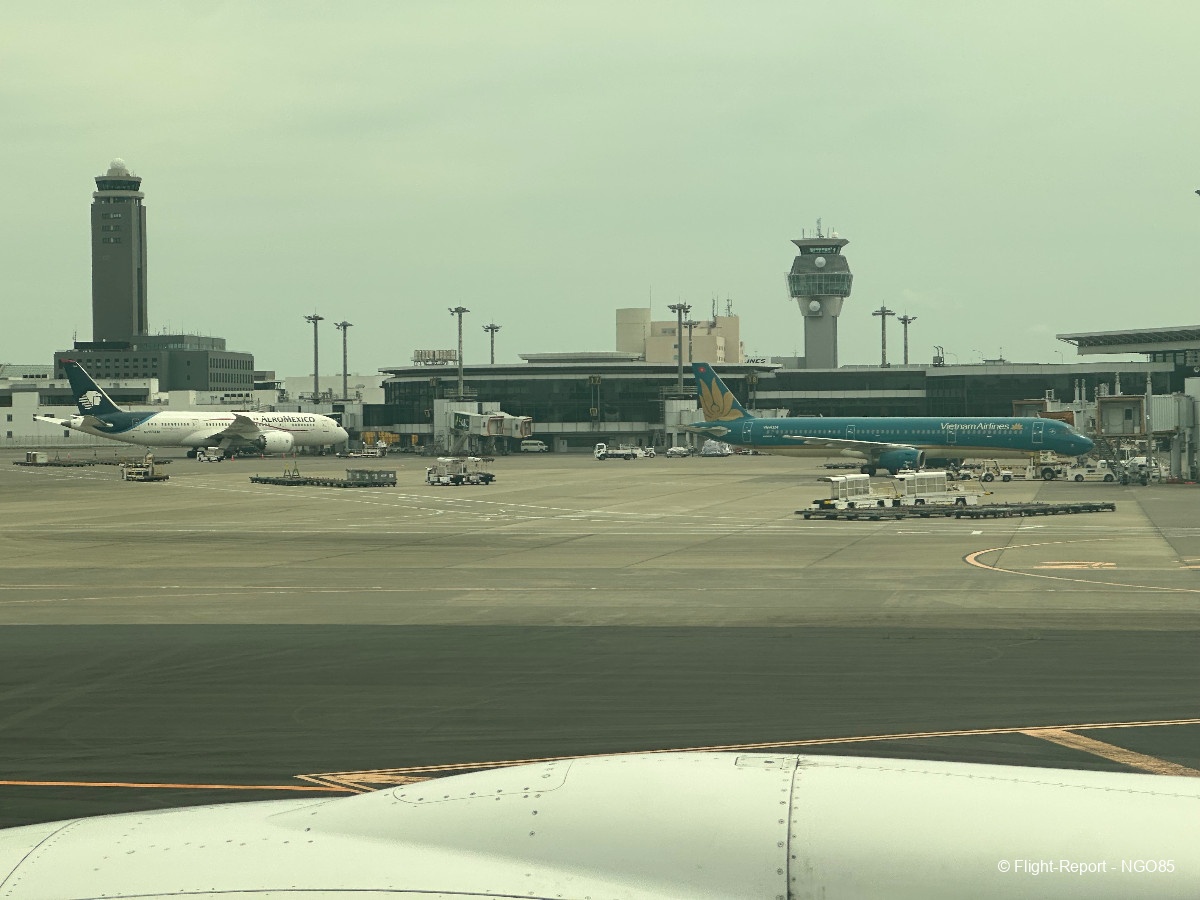
The sea of cargo operations.
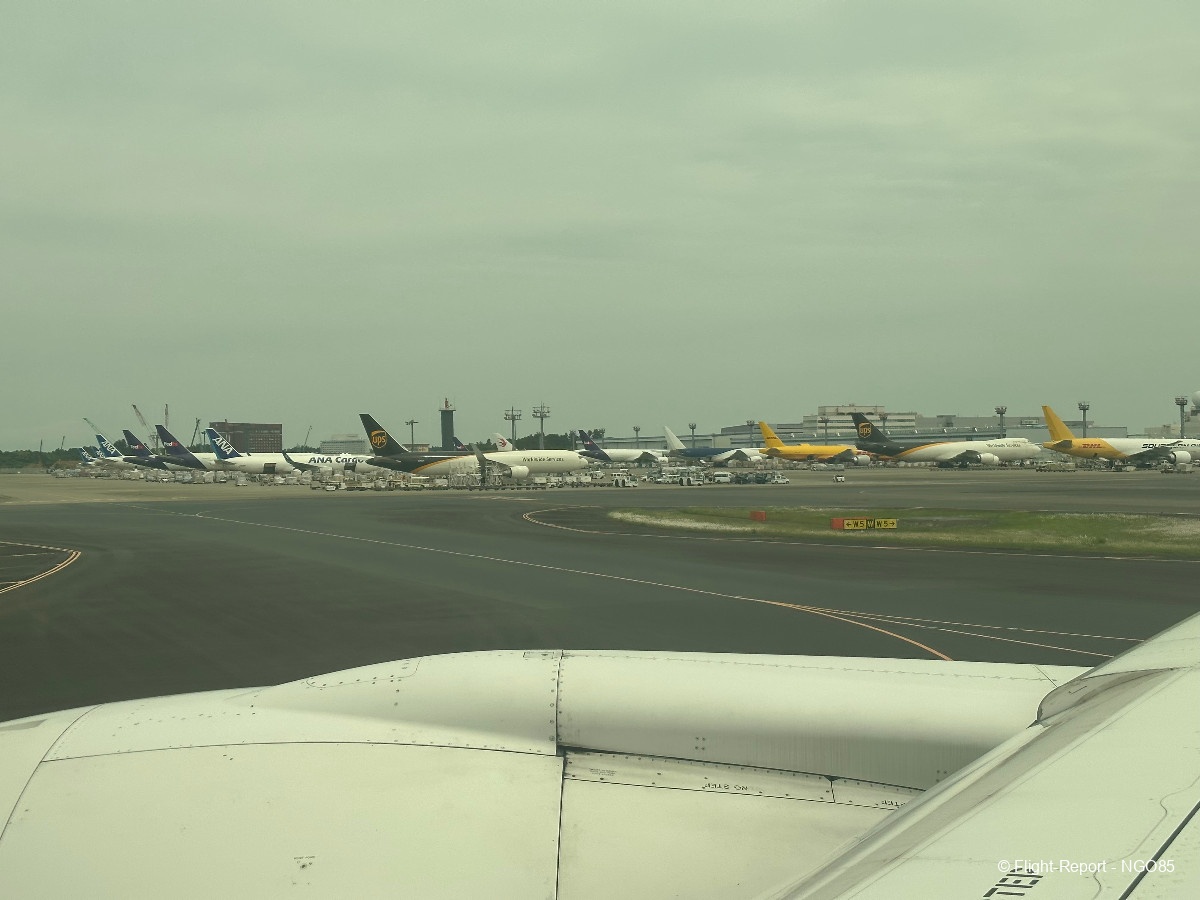
We turn to align on Runway 16R and took off to the southeast with the subdued roar of our Rolls-Royce Trent turbines. We took off about 20 minutes behind schedule.
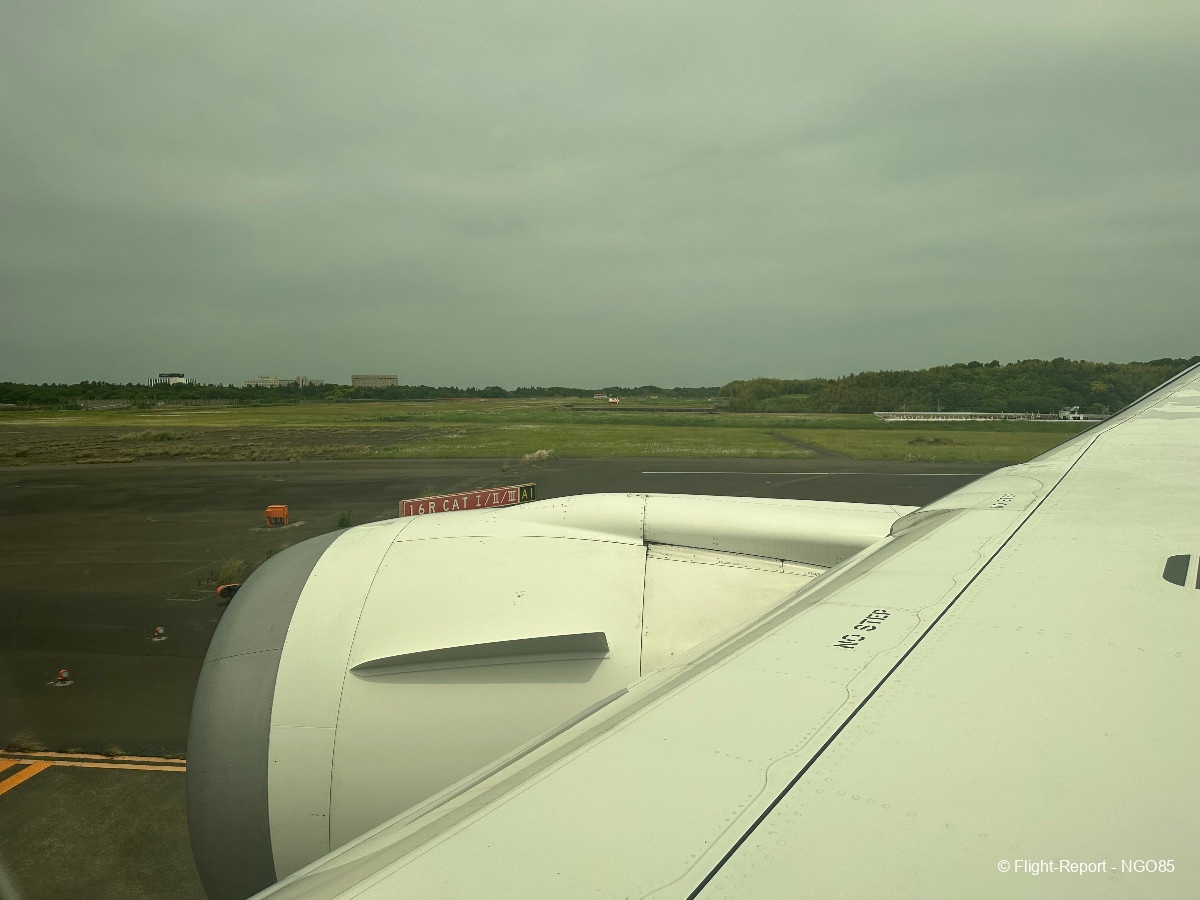
Brief glimpses of Chiba before turning to start our run down the eastern coast of Honshu.

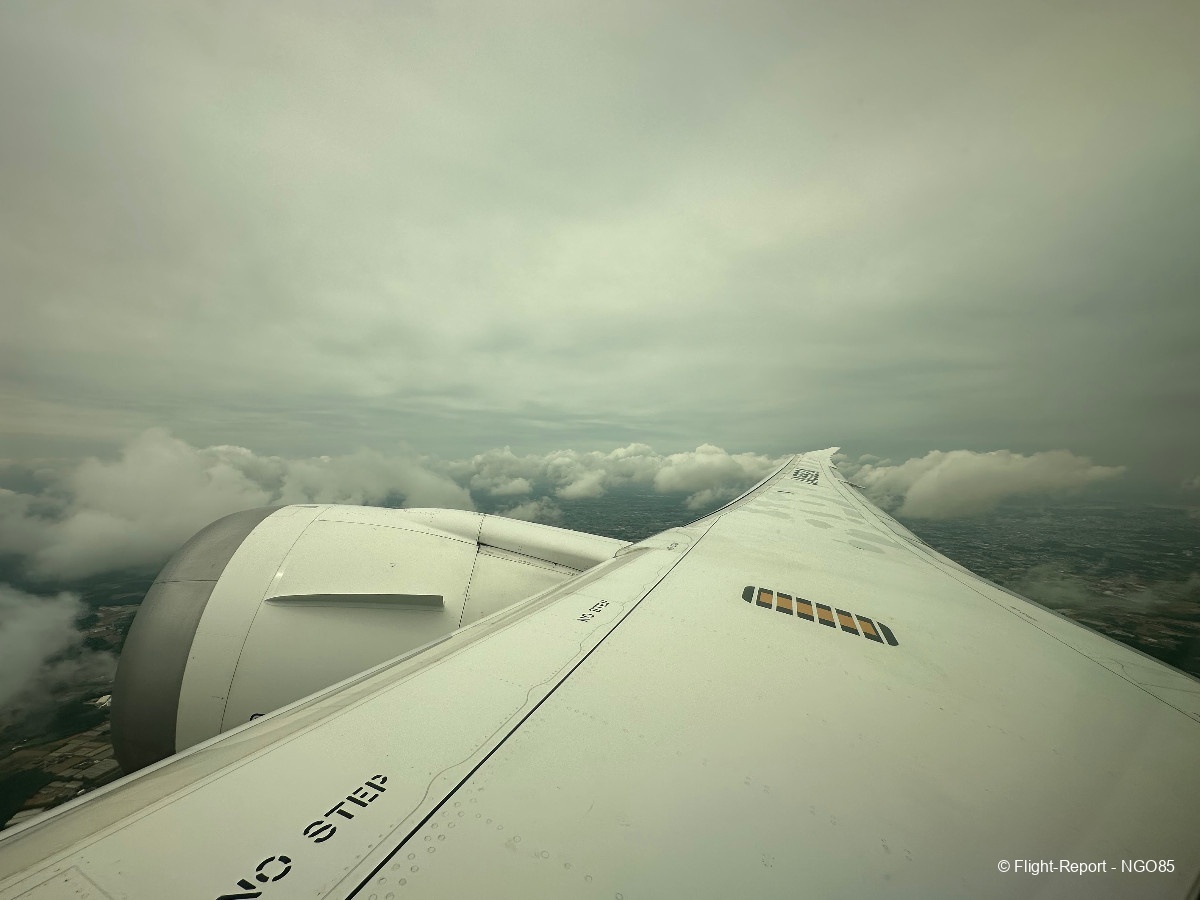
Reaching the tip of Boso Peninsula.
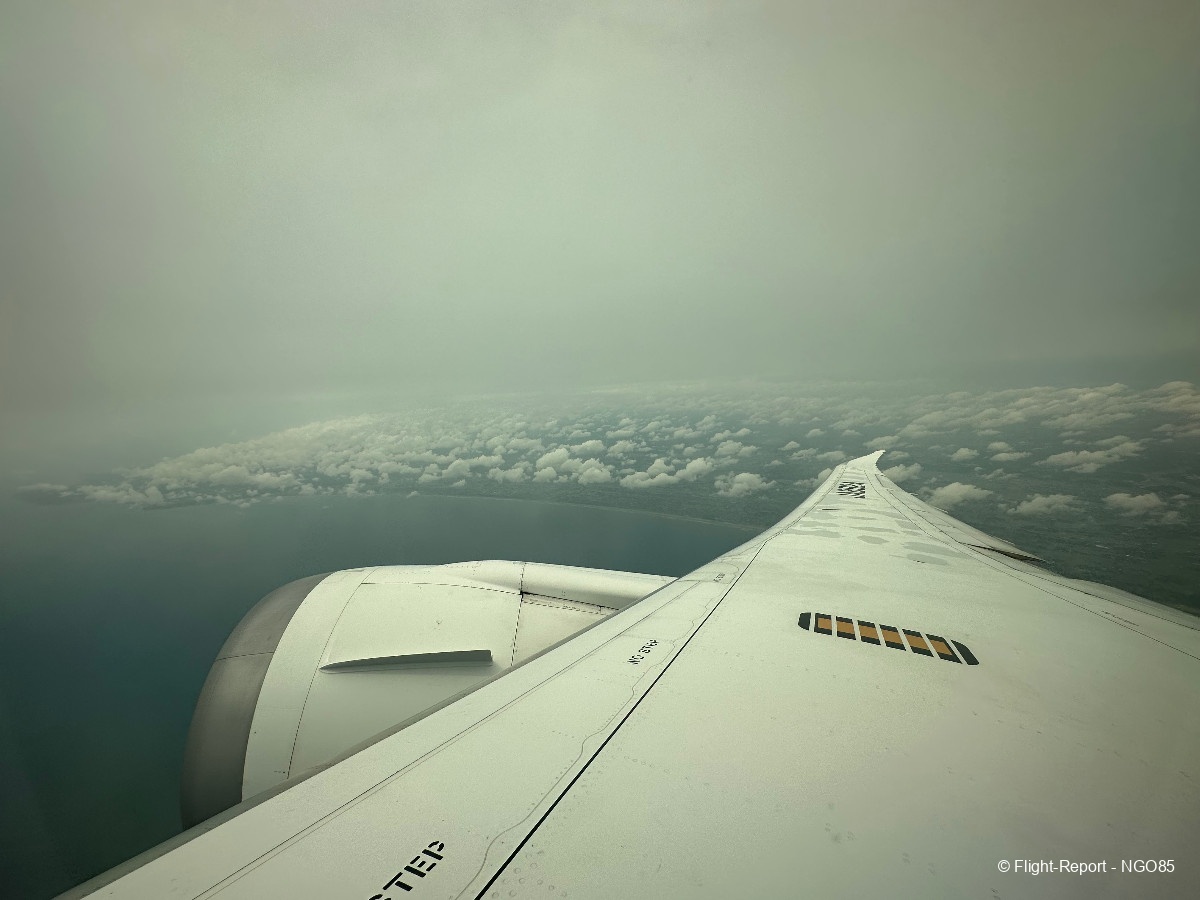
Cloud coverage soon started as we started our run down Honshu so I'll introduce the IFE.
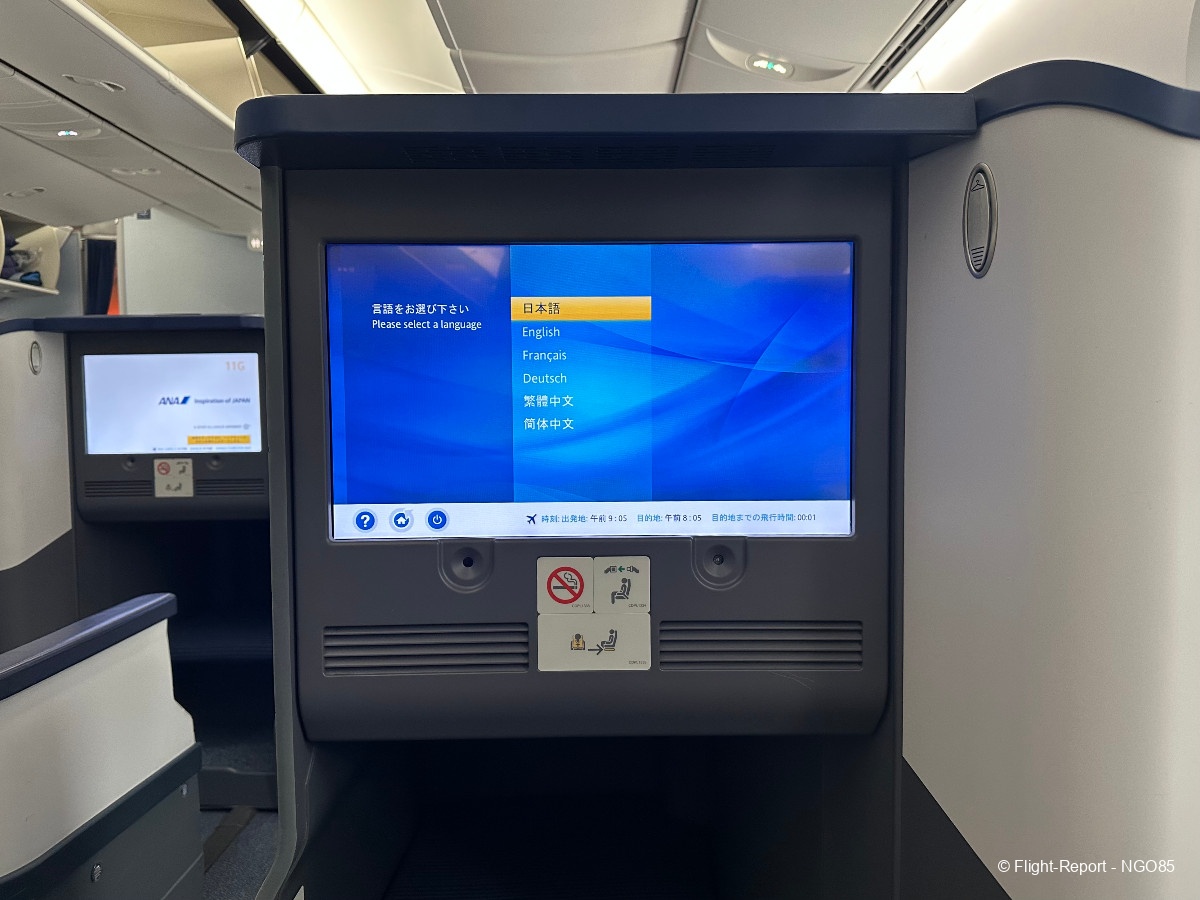
The IFE is larger, higher resolution, and more responsive than on the older staggered B77W product, but still a shadow of The Room's IFE. The video content is the same as the last flight with the only addition being SKY LIVE TV that lets you stream some domestic and international channels. This plane was WiFi enabled, but it was not available on this flight to China. I won't fully introduce the content, you can refer back to the NH7 report for the content/interface details. For a regional flight, the ~120 movies they have is more than sufficient.
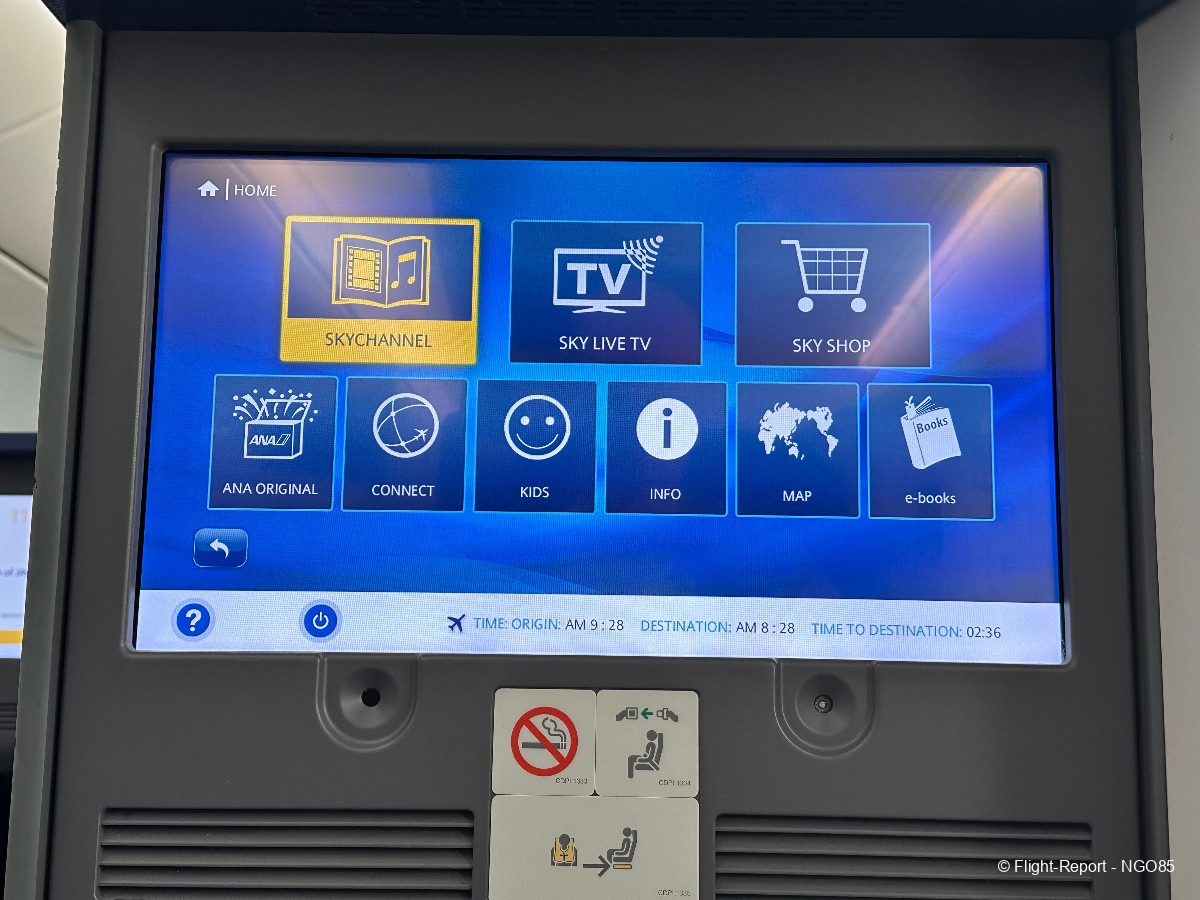

The moving map is the most recent version and showed a projected flight time of 2h36m, which was a little aggressive. We would need some extra time with headwinds and turbulence over the East China Sea.
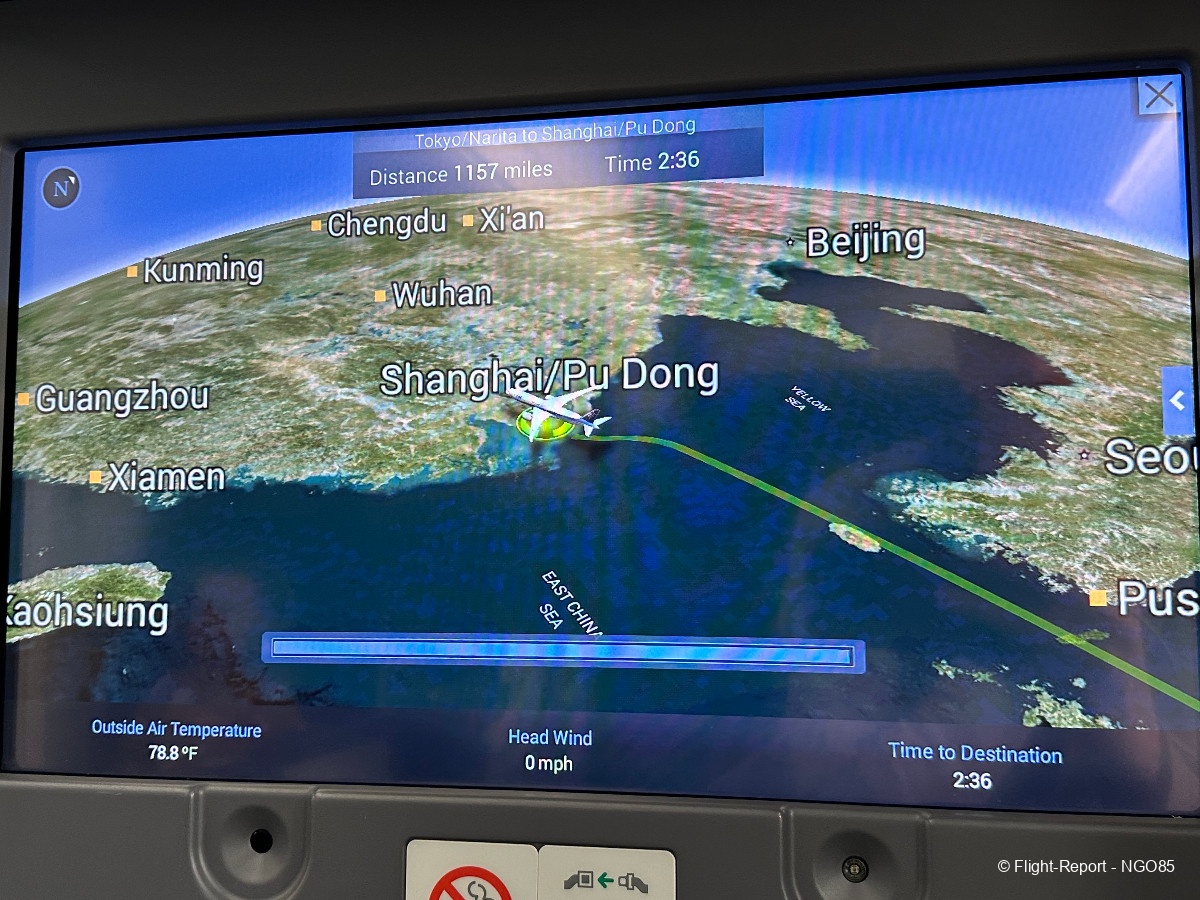
The menu on this flight contains information on all NRT/HND/PVG/SHA permutations. Our flight's offering is:
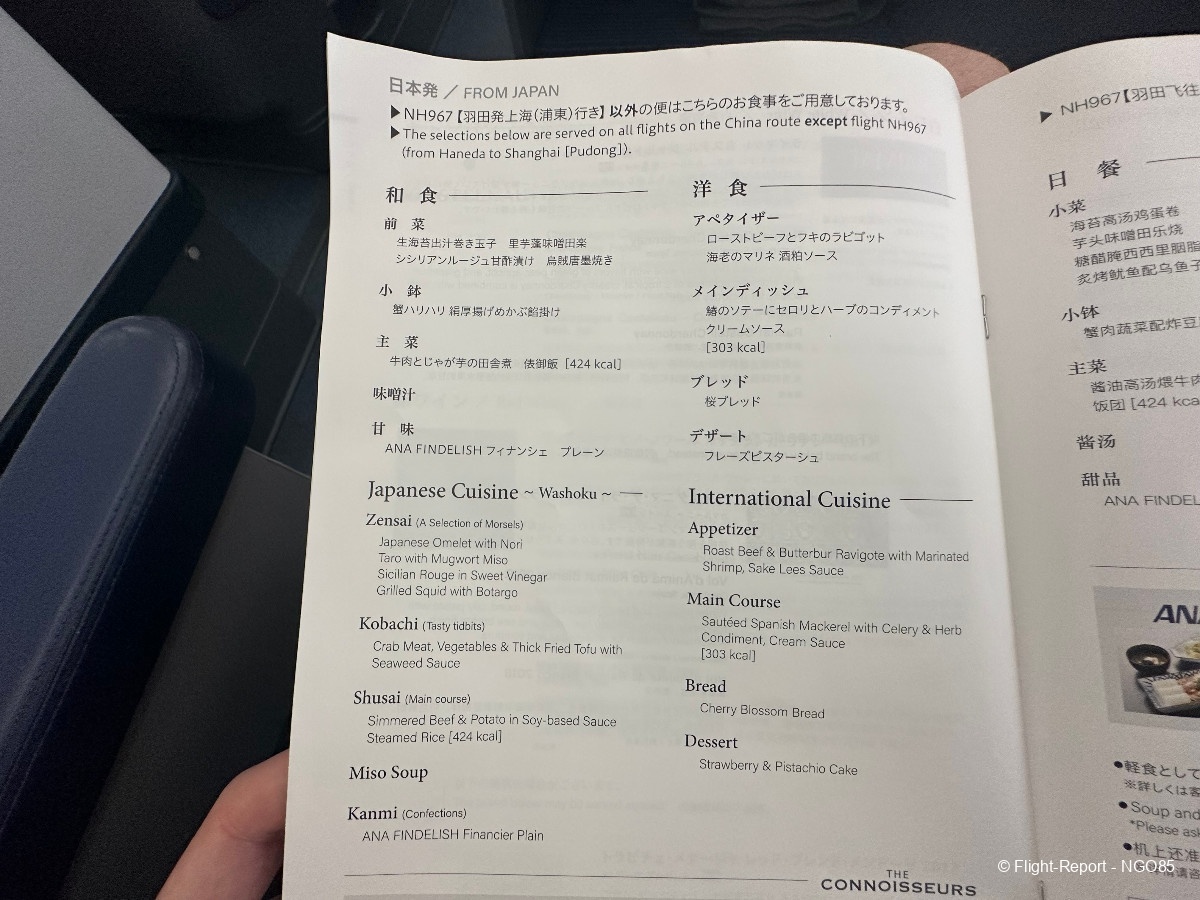
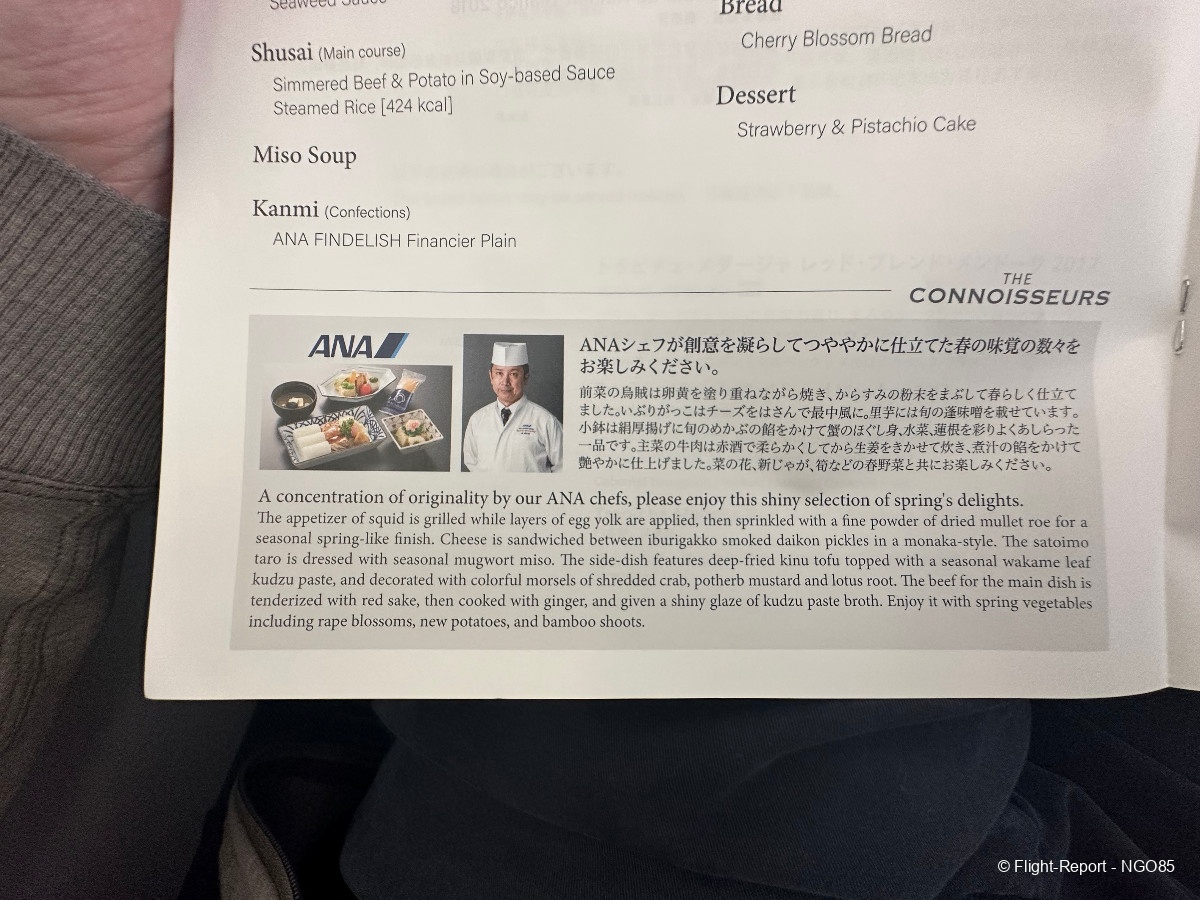
Drinks menu. NH's wine selection is weak, but it is well supplemented by good domestic offerings of sake/shochu. The non-alcoholic options are also quite substantial for regional flights.
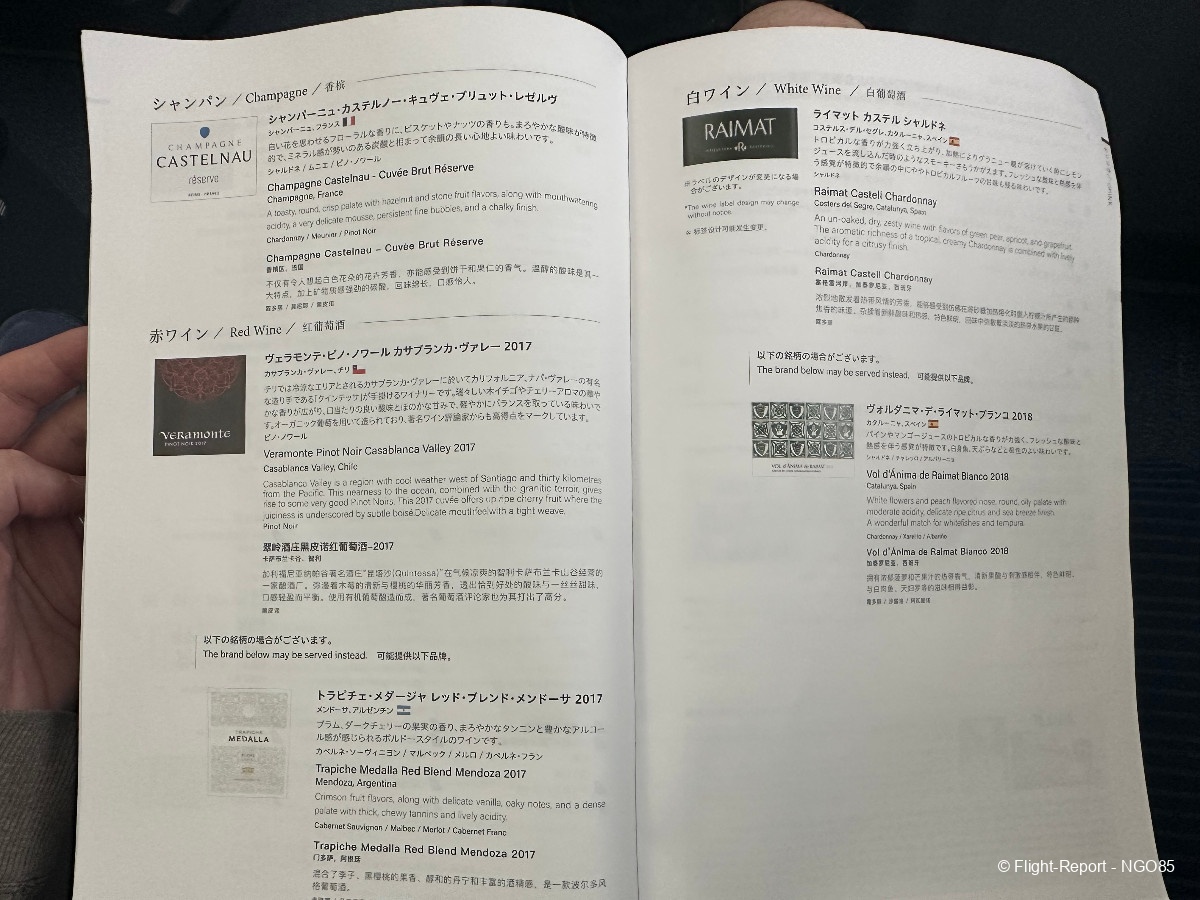
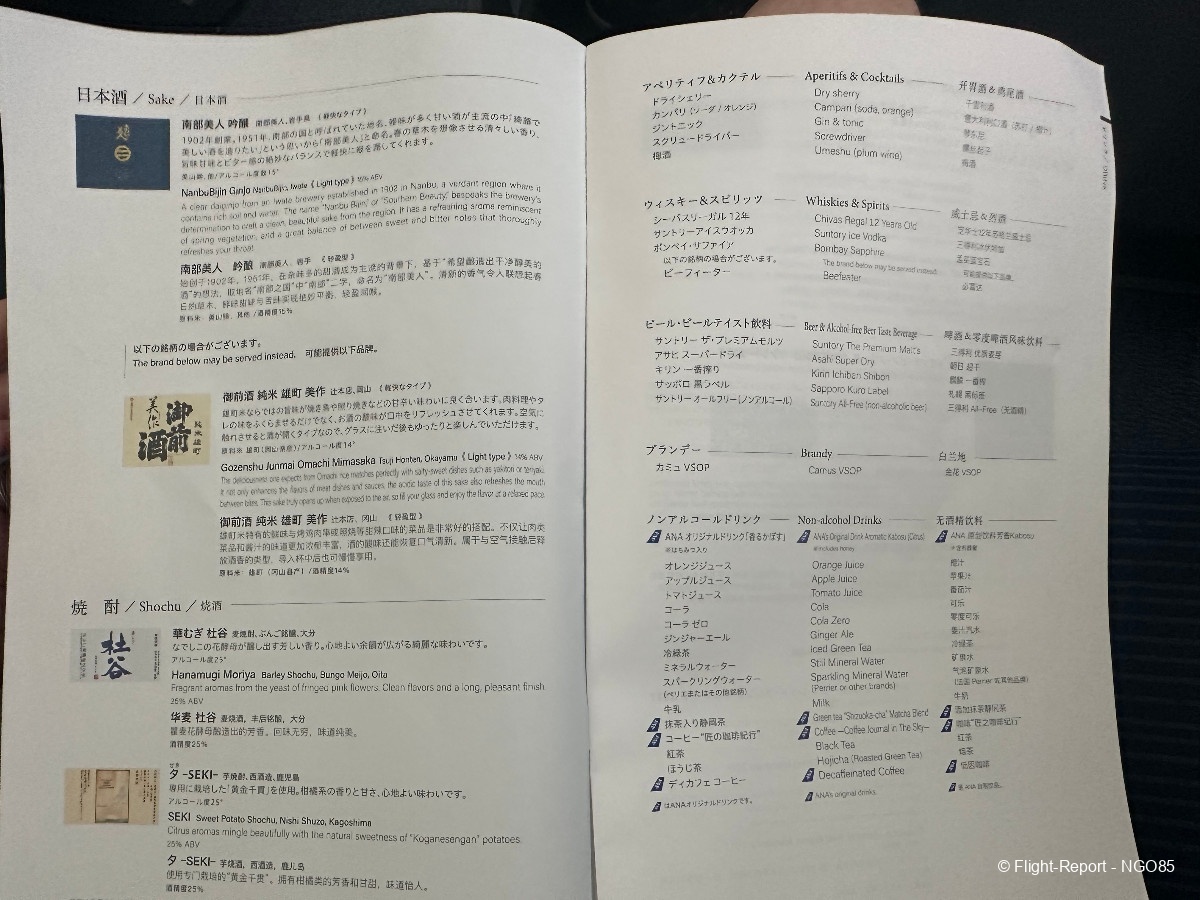
For those that are interested, the menus on NH967 (HND-PVG) and all flights from China.
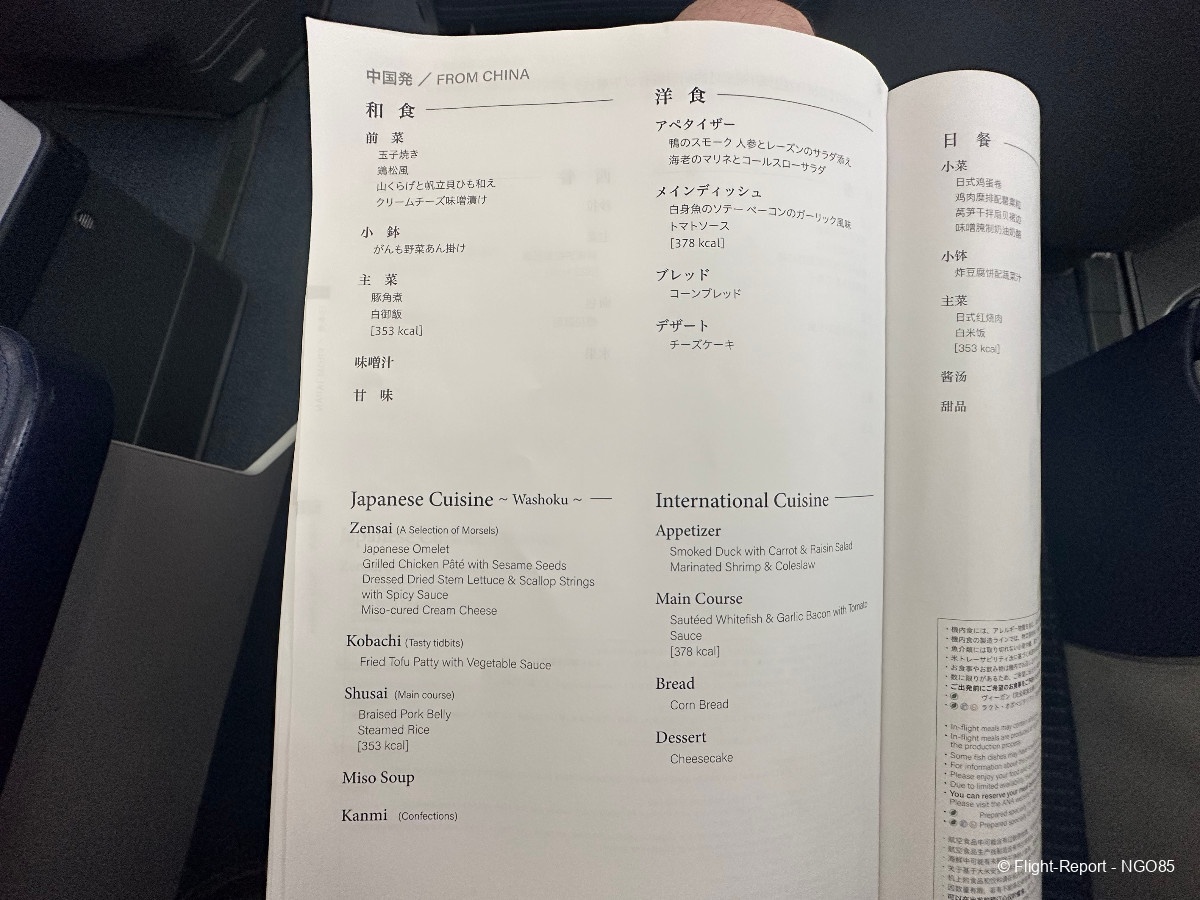

As we pass the clouds above Nagoya, the service starts with a packaged oshibori. Meal orders were taken at this time, but since we pre-ordered Japanese meals online the FA simply confirmed our preferences and that the CHML was on-board. I requested it to be served first.

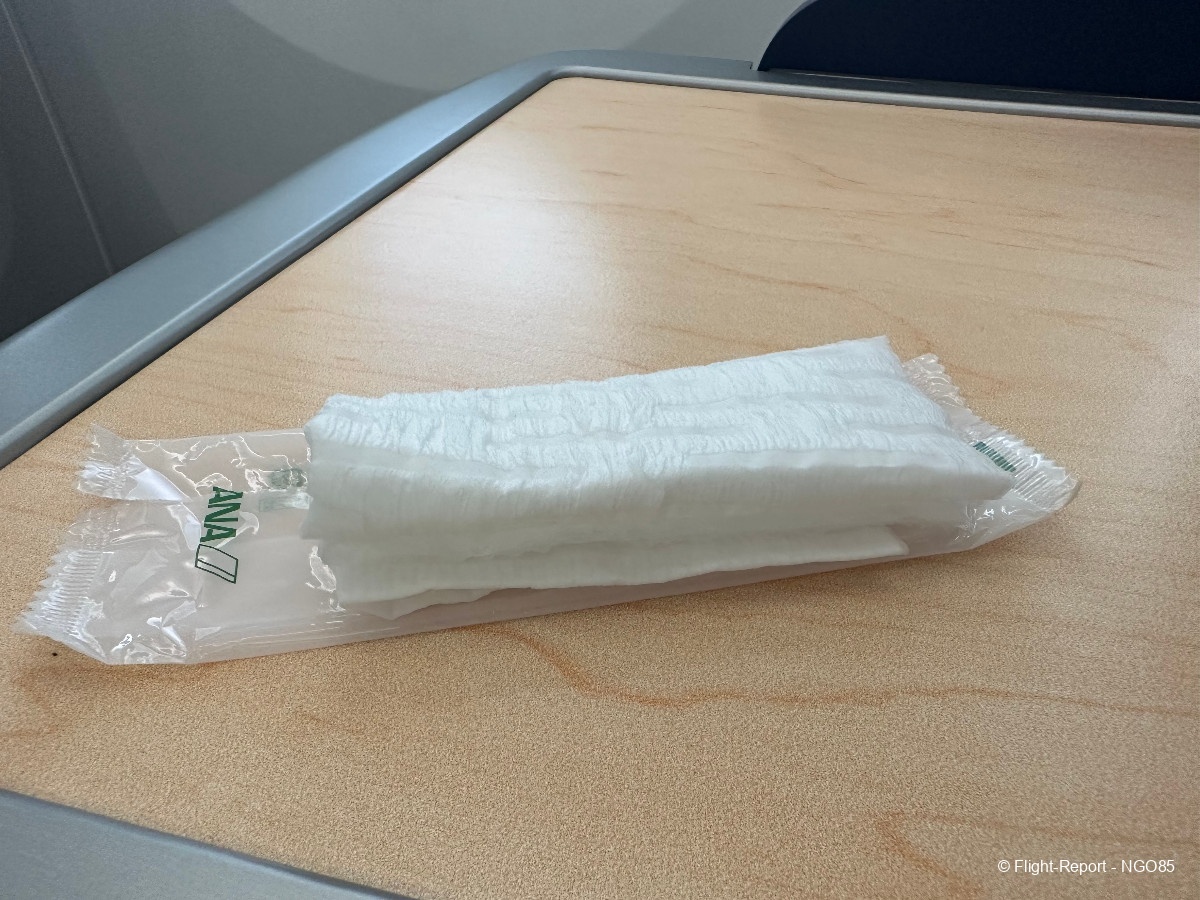
The FA’s then proceed down the aisle folding out tray tables and laying “linens” (a disposable blue sheet). The tray table folds out from the side table and is large and sturdy, but does not allow one to leave the seat easily since it folds into the side table when turned so you cannot leave a meal tray on top.
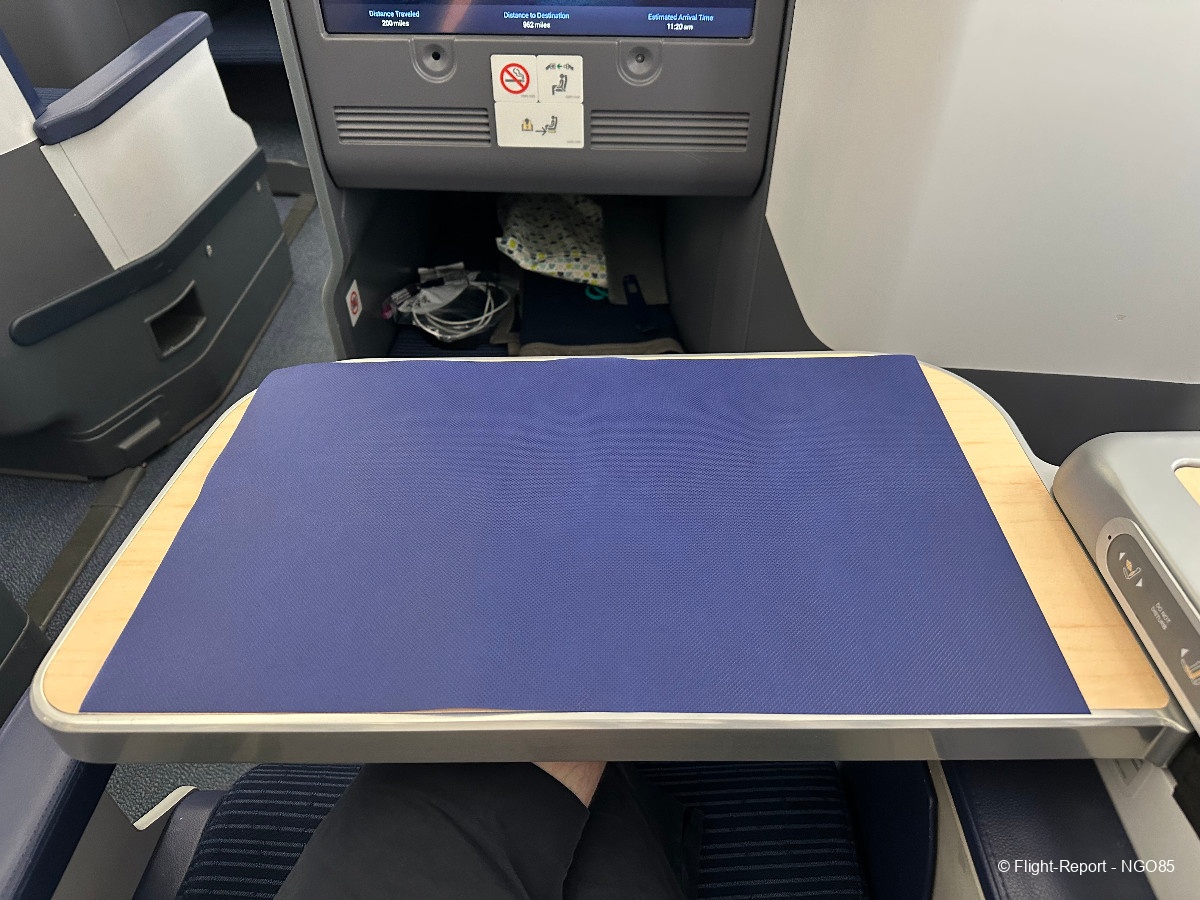
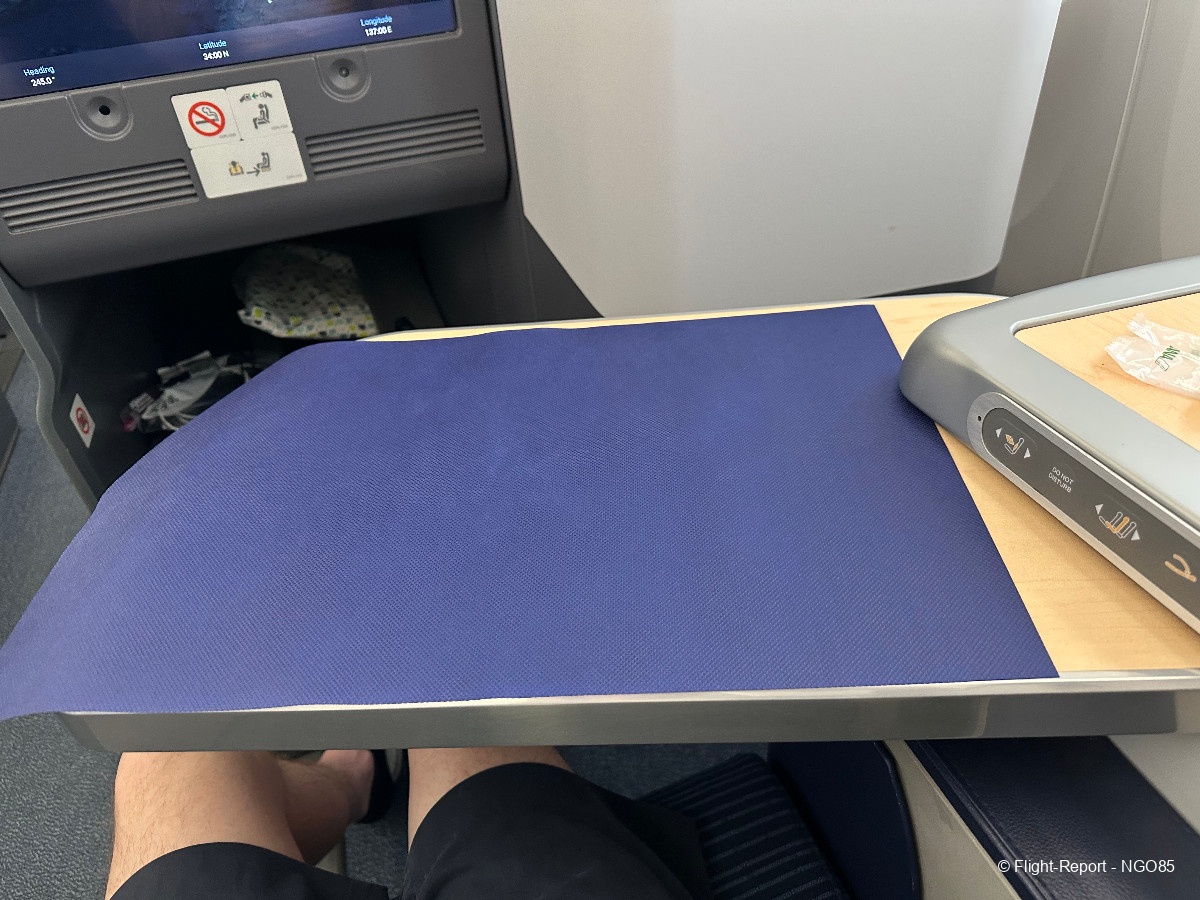
Our son’s kid meal was served first, which is quite substantial in portion, even larger than what was served on the TPAC leg. The crew was less experienced on this route and was not very interactive with our son and lacked some personal touches. All questions were directed to me and his meal tray was served to me and I had to set up his tray table.

The starter was potato salad, a meat patty, and some packaged cheese cubes.

The main was a chicken nugget, fish nugget, half an egg, and a rice decorated with a face.

The other items were standard Japanese packaged kids snacks and fruit/carrot jelly. Also note the stack of 3 small dishes, which are supposed to be for butter, salt, and pepper. None of which were provided, so had no reason to be left on the tray.

Aperitif is done by cart. I opted for kabosu, which is served with packaged otsumami.
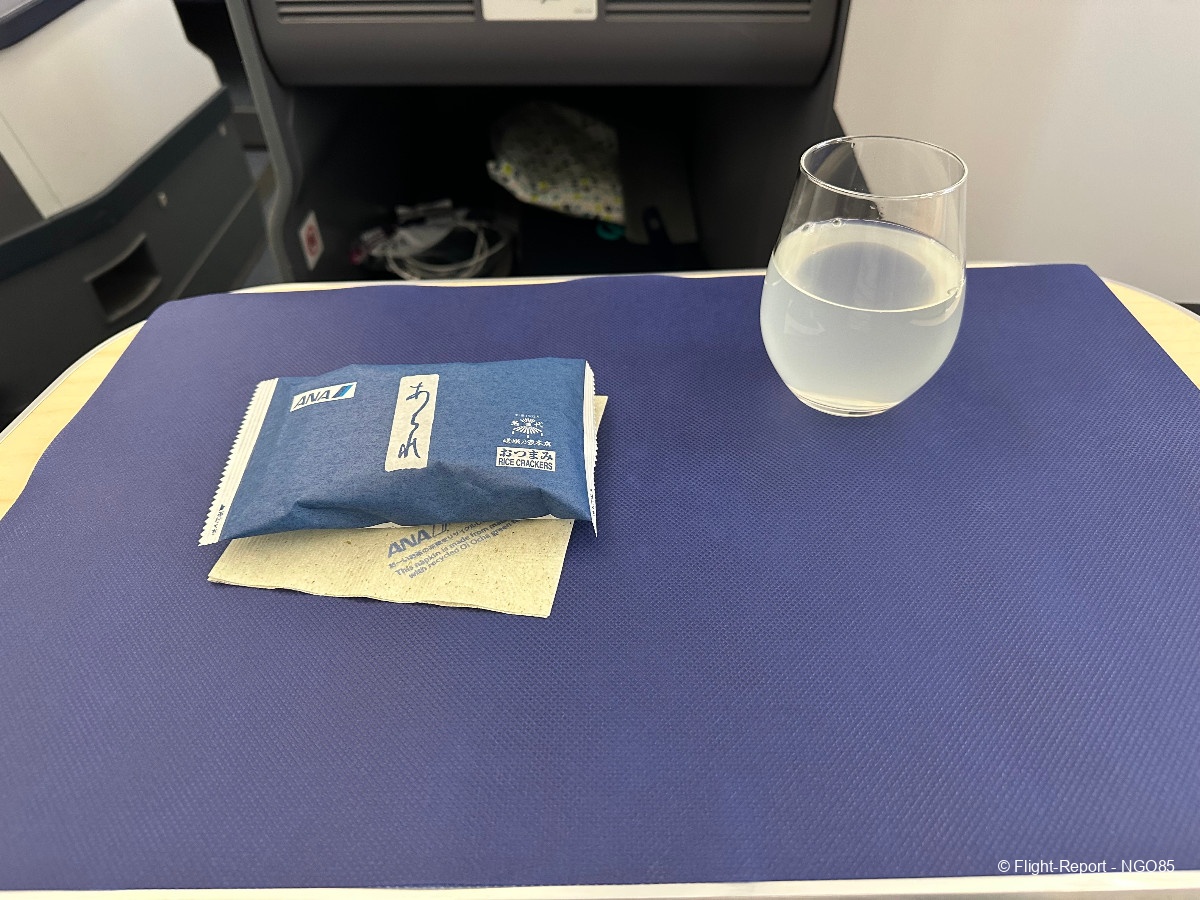
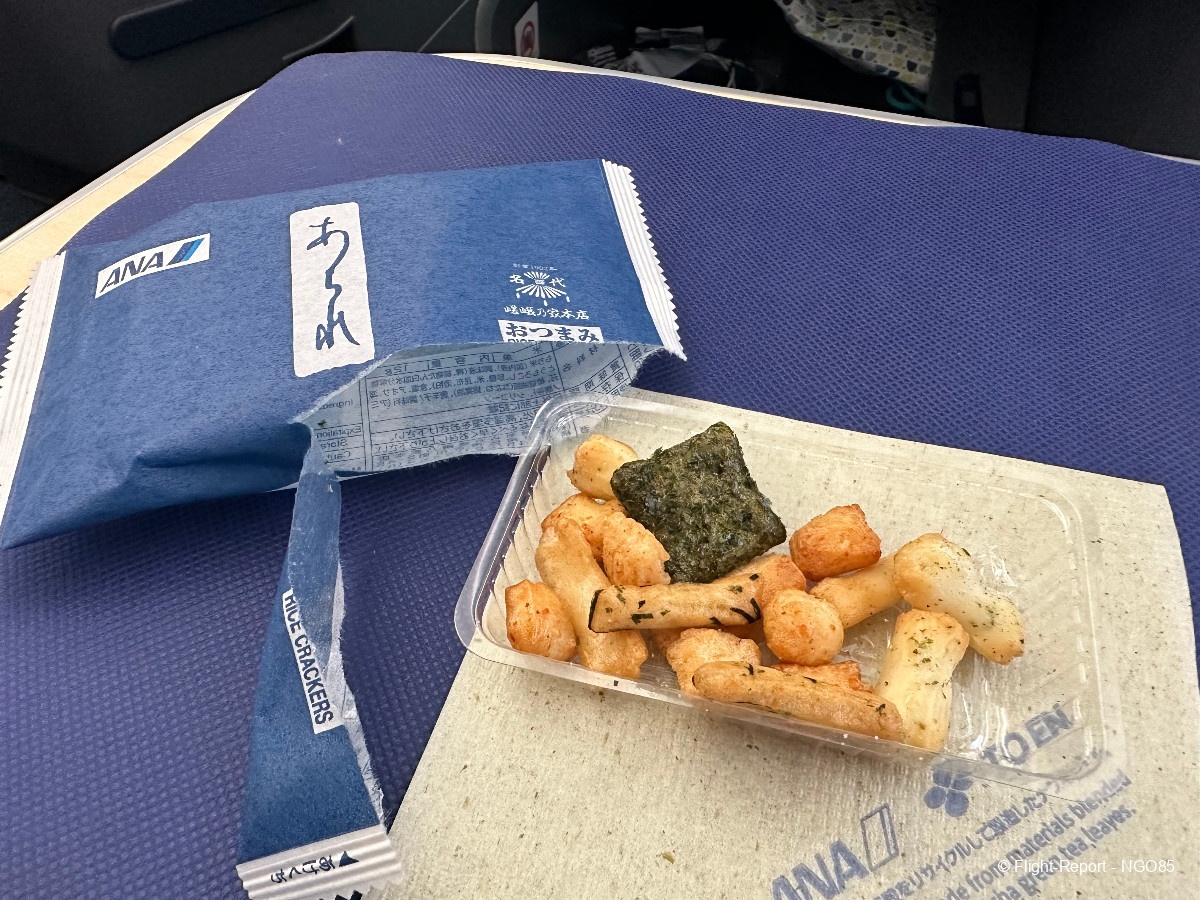
The meal tray was then served as we crossed over a cloudy Osaka.
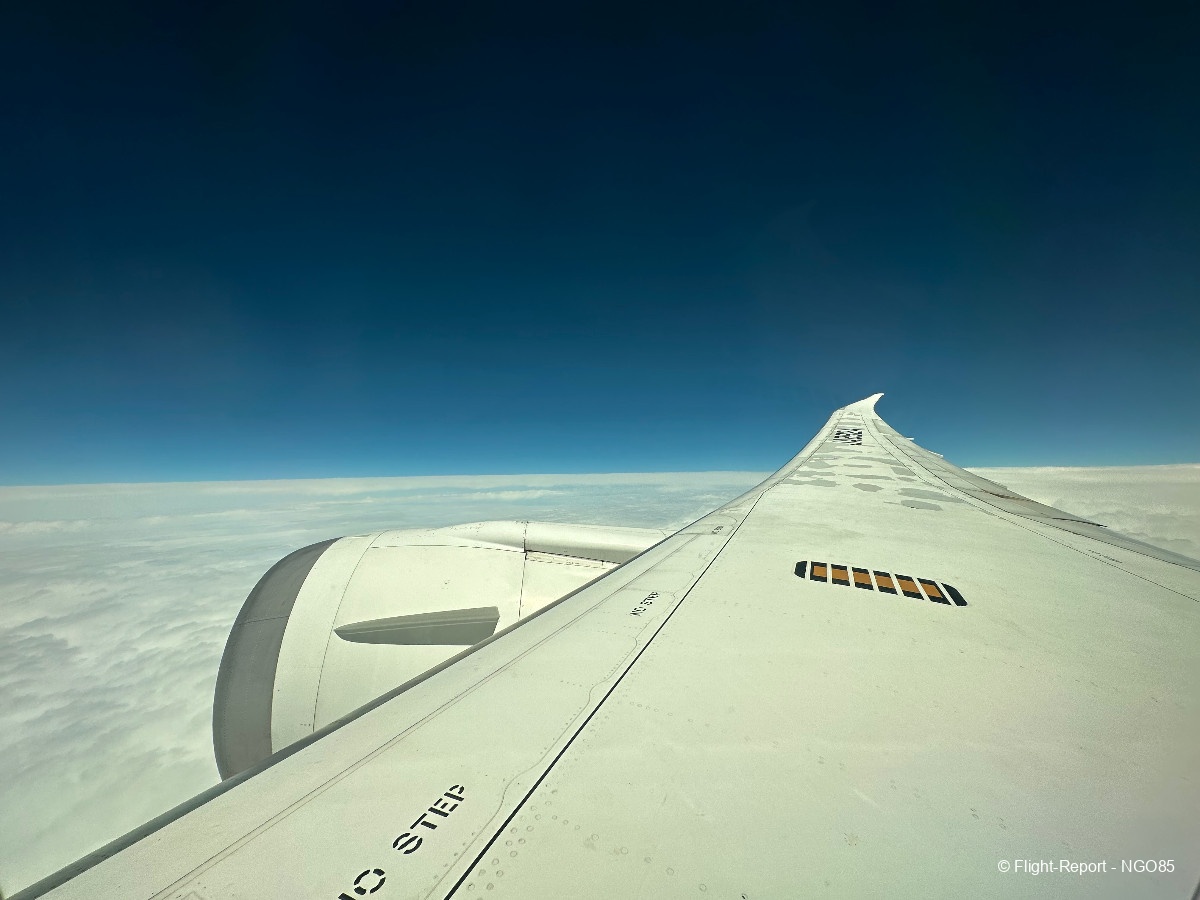
The meal tray as received, a little tacky that the foil was left on the main.
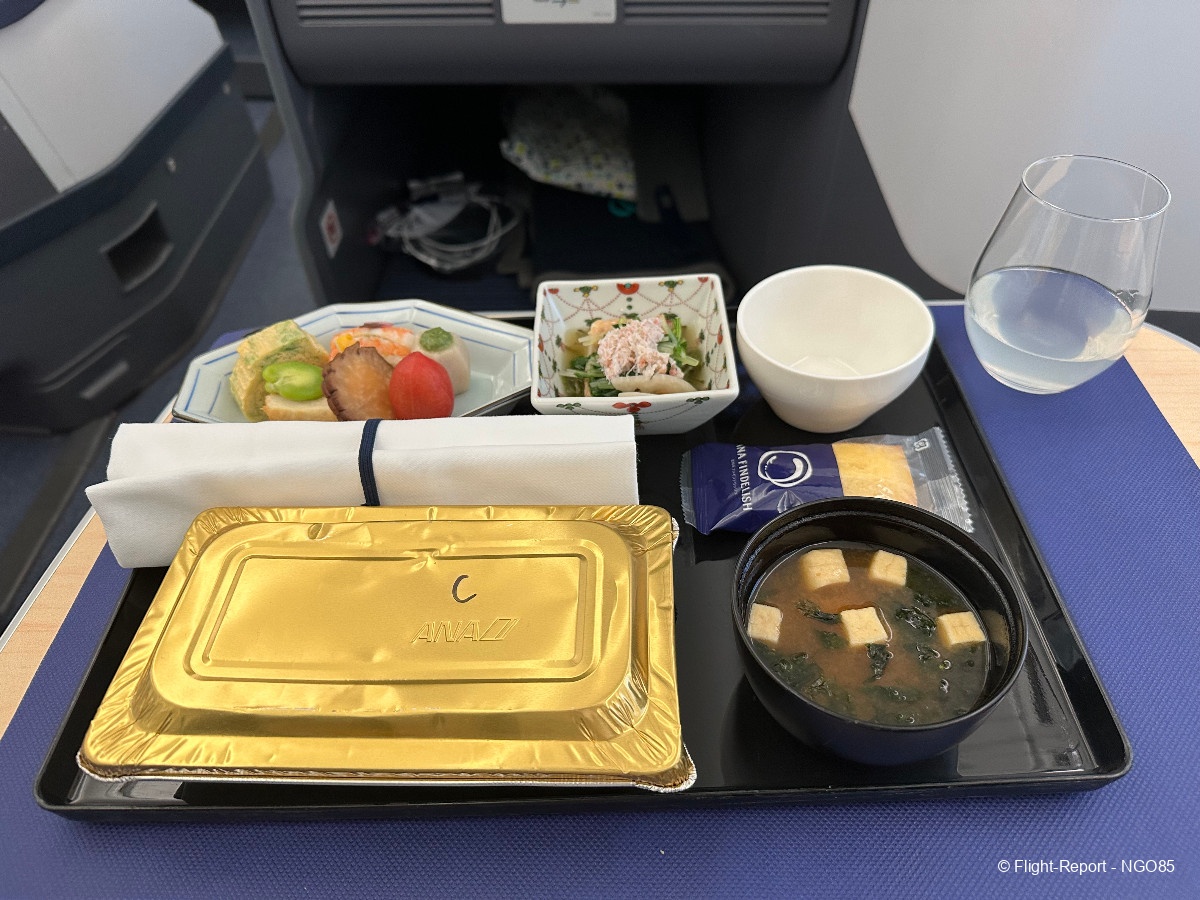
The zensai is well presented, but nothing remarkable, just a selection of cold morsels.

The kobachi was again the best item on the tray both visually and by taste.
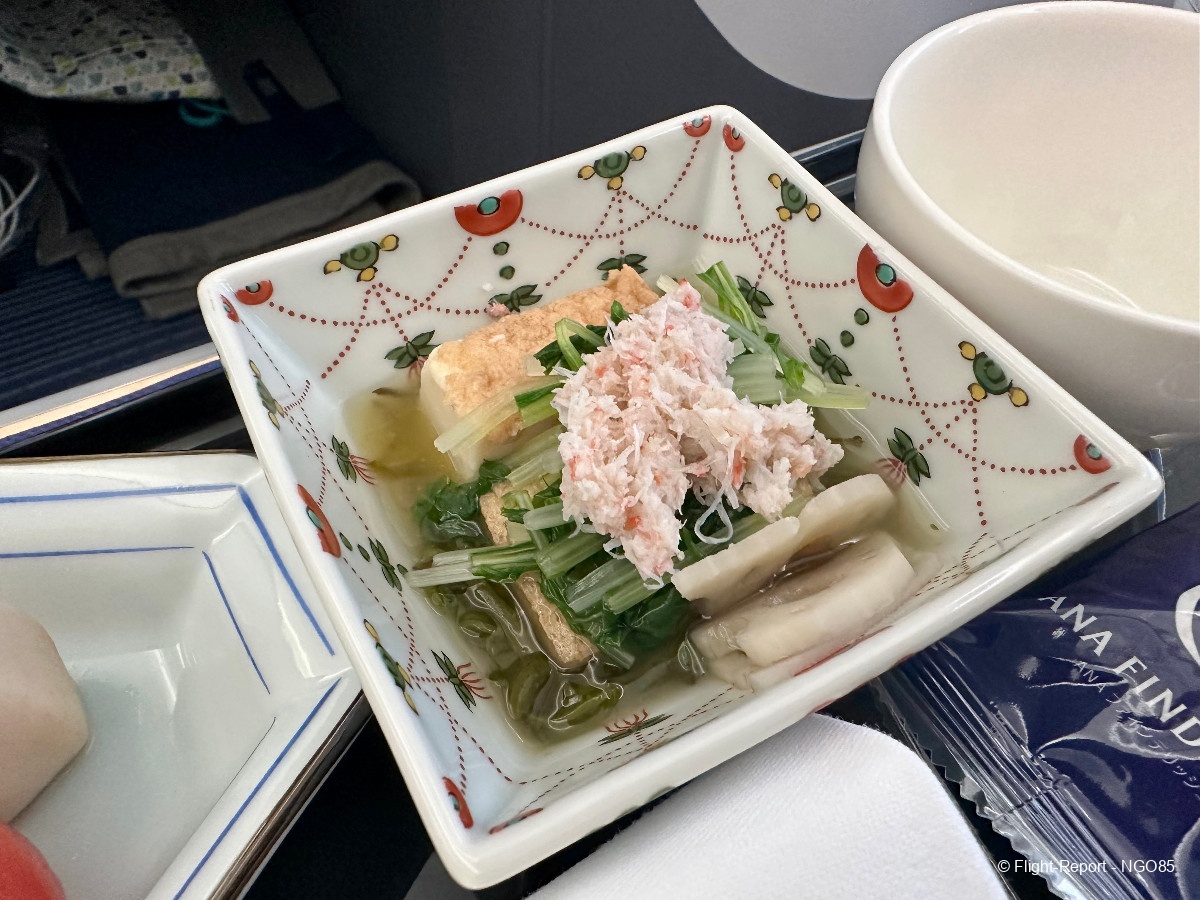
The miso soup.

The shusai uncovered. The beef was very tender and flavorful, but the portion size of protein is on the small side with only two pieces of meat. The packet on the left contains the steamed rice.
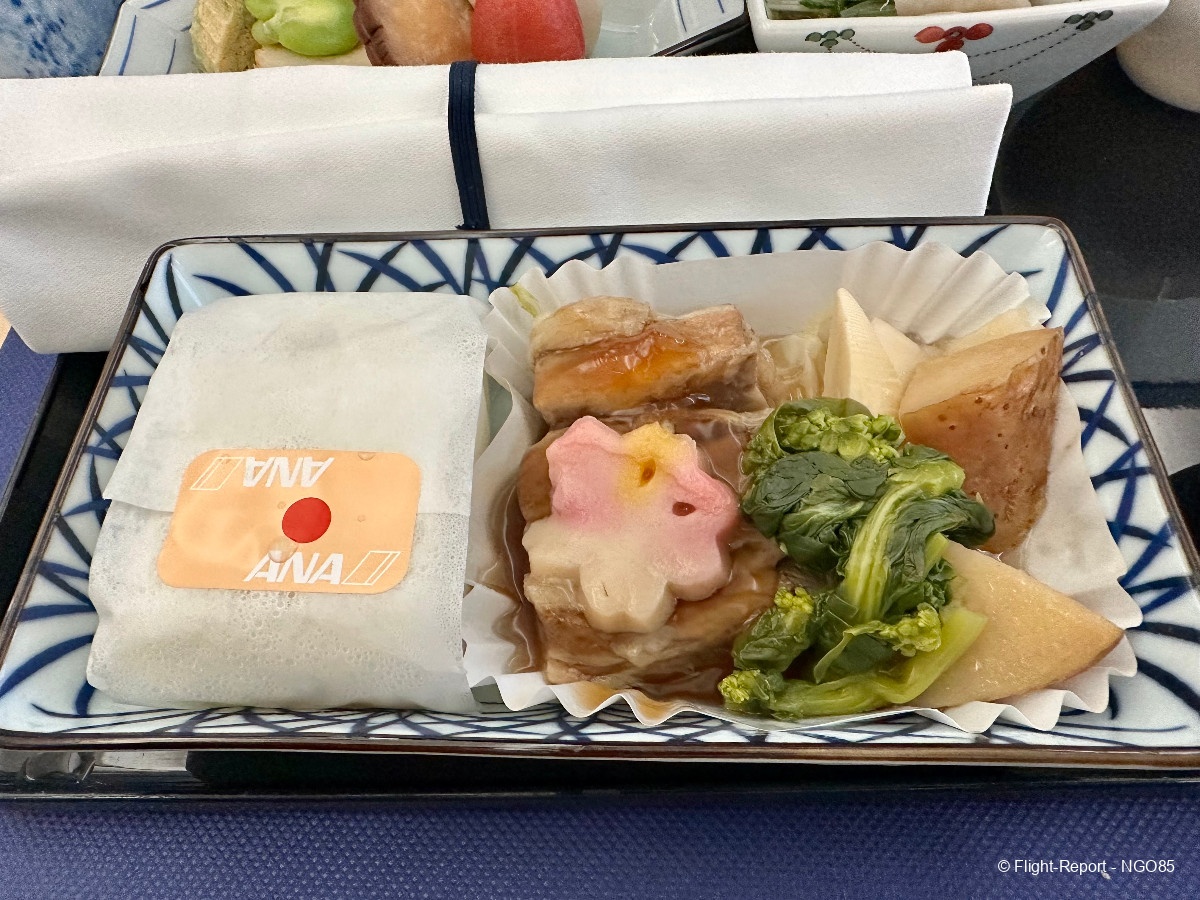
The tableware again is Noritake from my beloved Nagoya.

The cutlery is metal and the chopsticks are disposable wood with a blue paper hashioki.
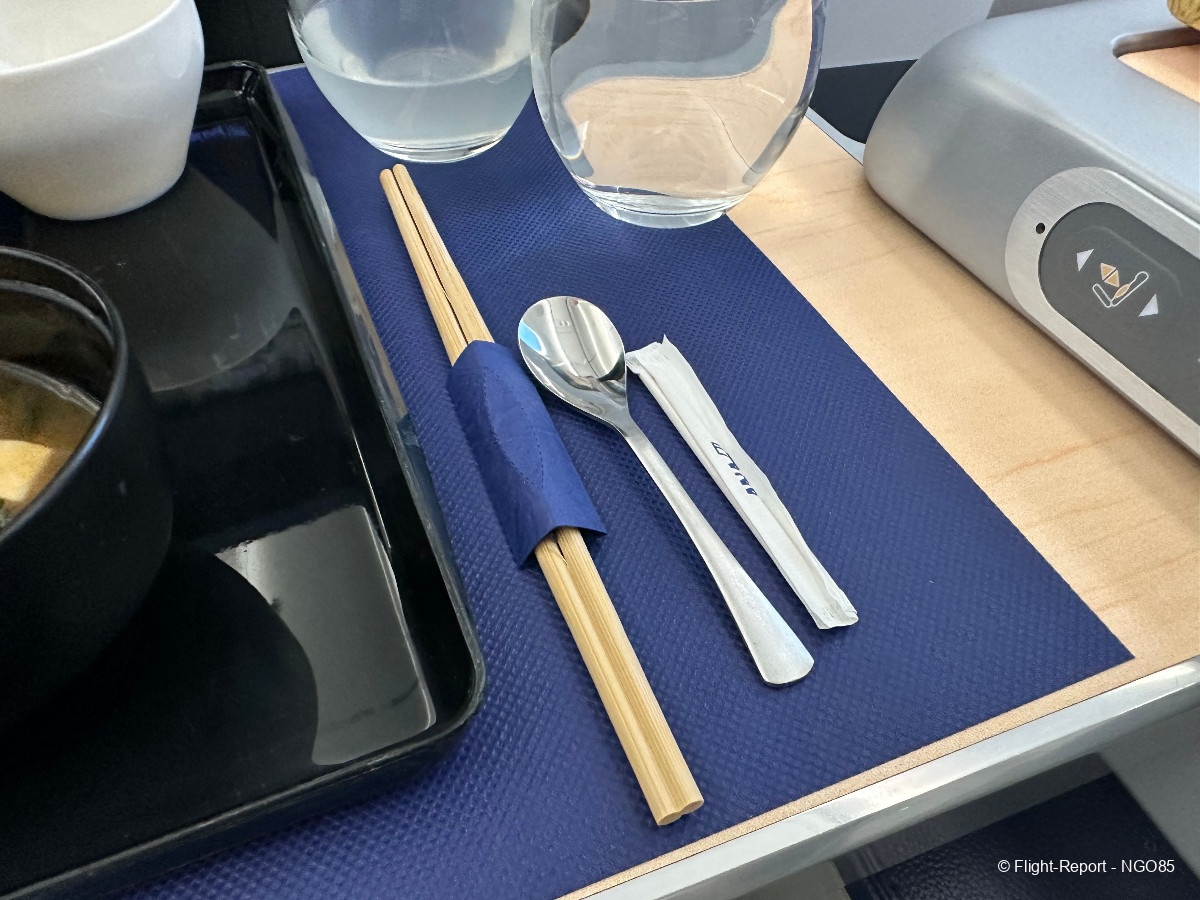
After delivering the trays, the FAs came down the aisle with a kettle offering hot green tea with the Japanese meals.

Meal service concluded as we crossed Hiroshima with coffee/tea service.
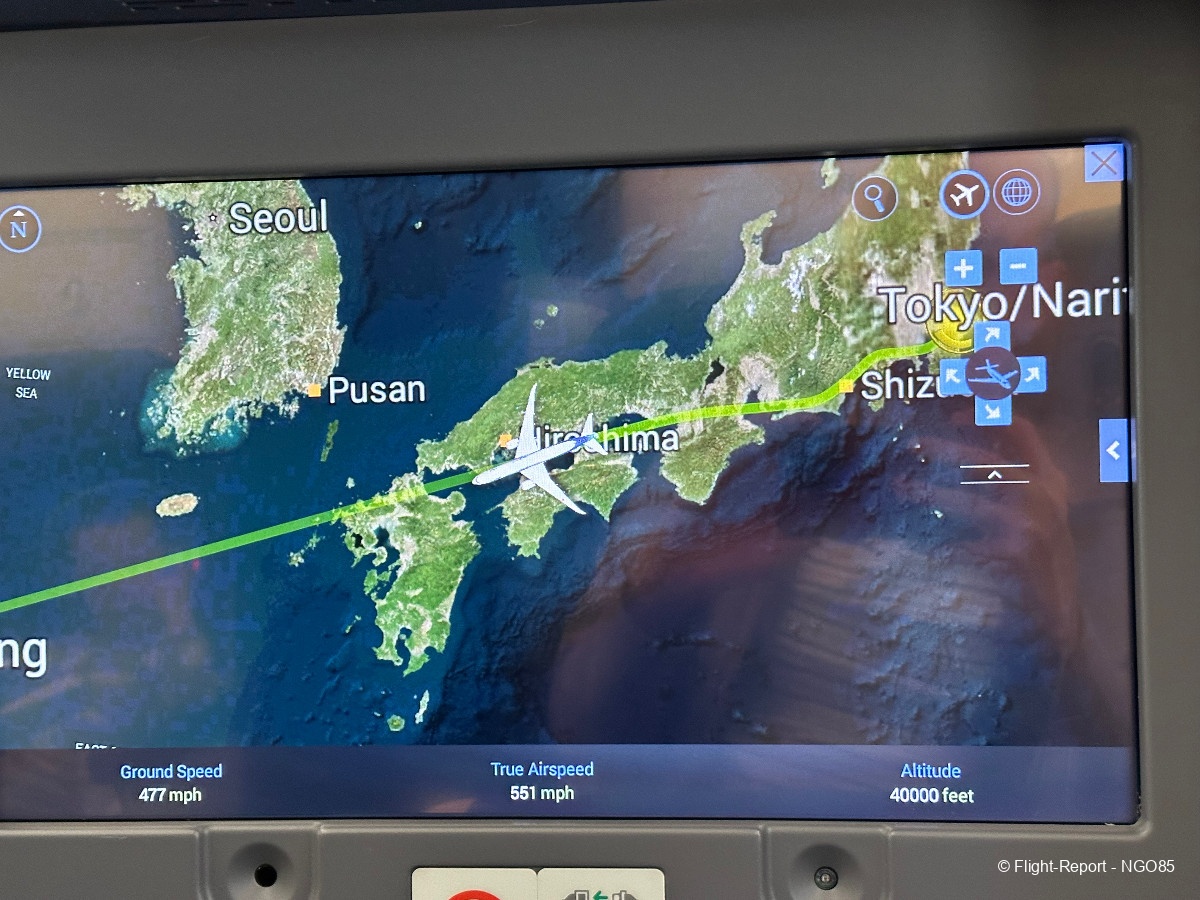
There is no formal dessert, only the small packaged cake pre-placed on the tray. Western meals get a proper dessert and the pistachio cake actually sounded good, but I opted not to ask the FA if there were any left to try.
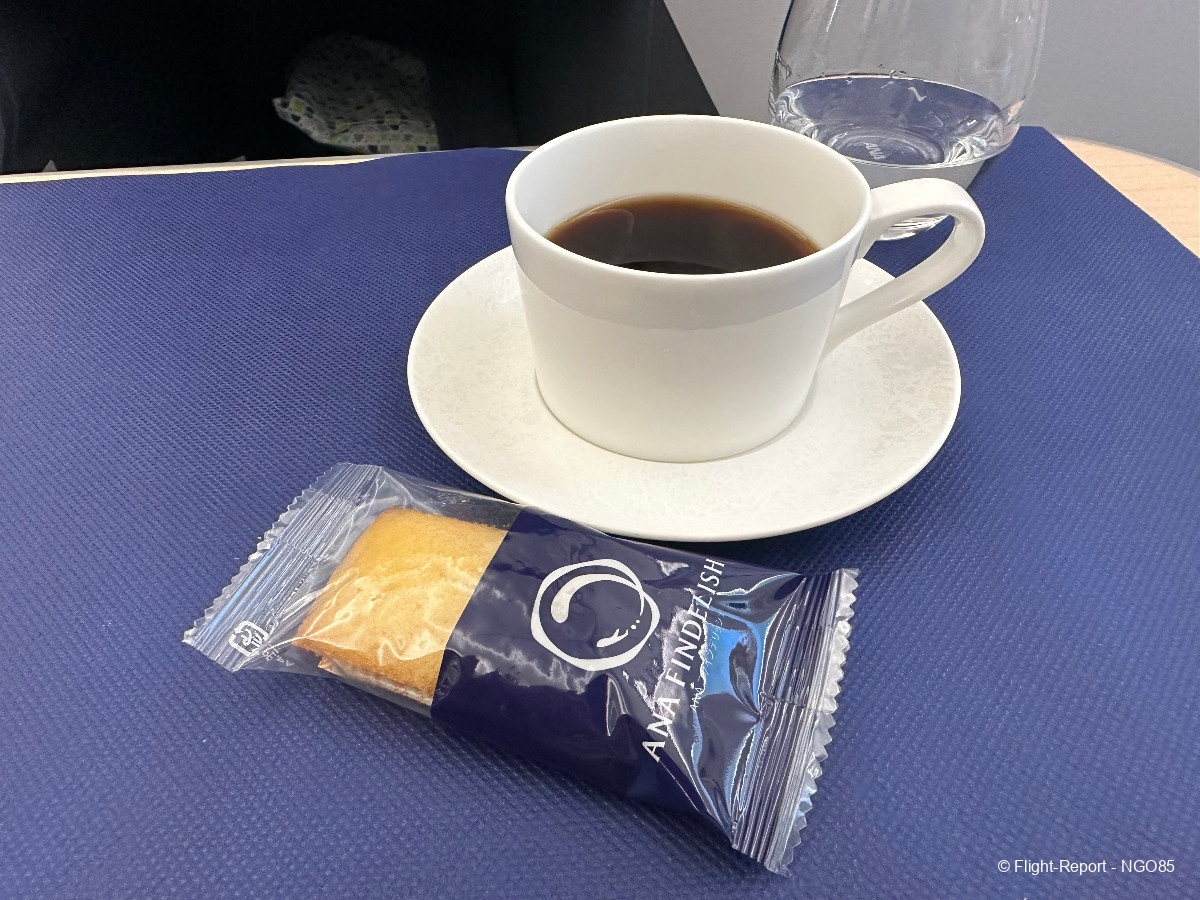
Picture of the cabin as meal service ended. Our cabin was very empty and quiet due to the aircraft swap, the forward J cabin on the other hand was ~60% full so we definitely made the right choice with seat selection.
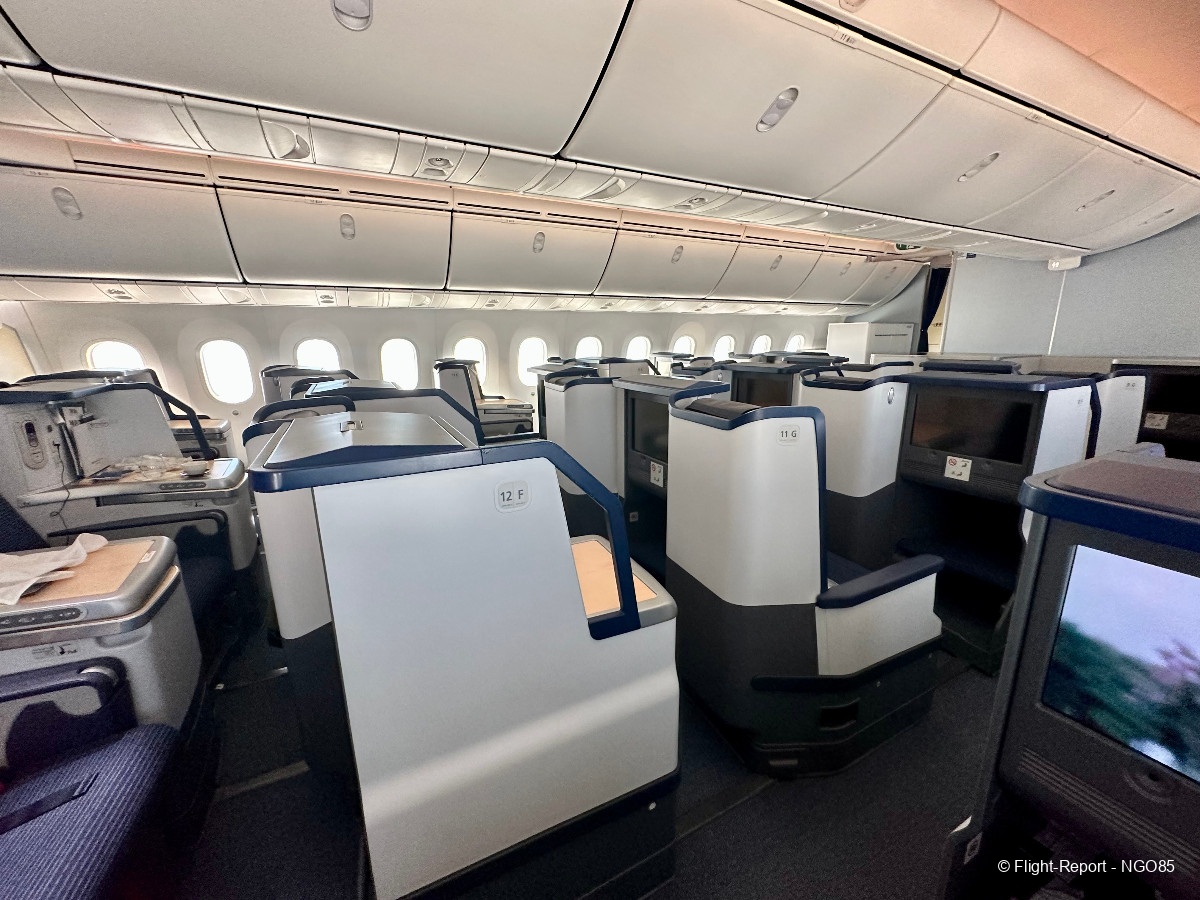
After the meal, I went up to use the bathroom near R2. The lavatory is a decent size and has bidet function, toiletries amenities, and a window.
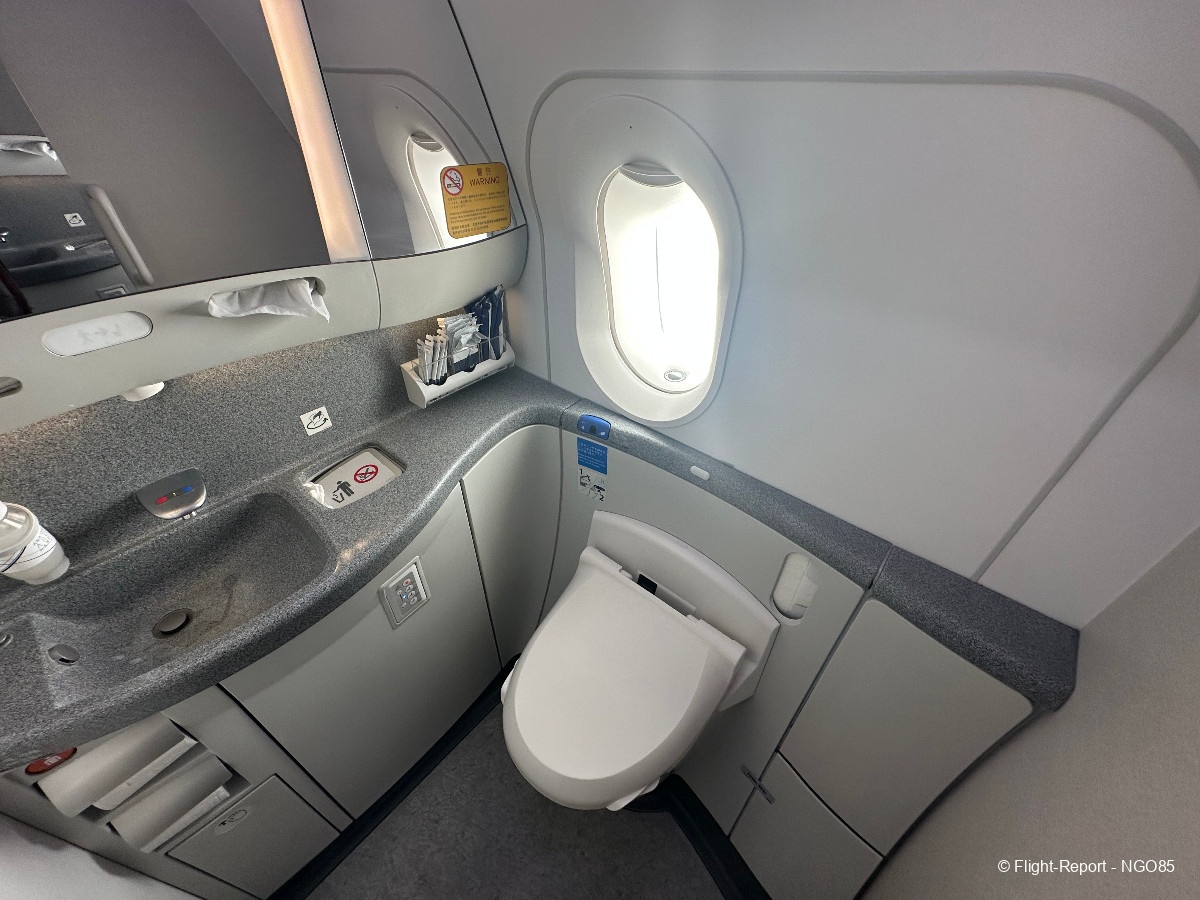
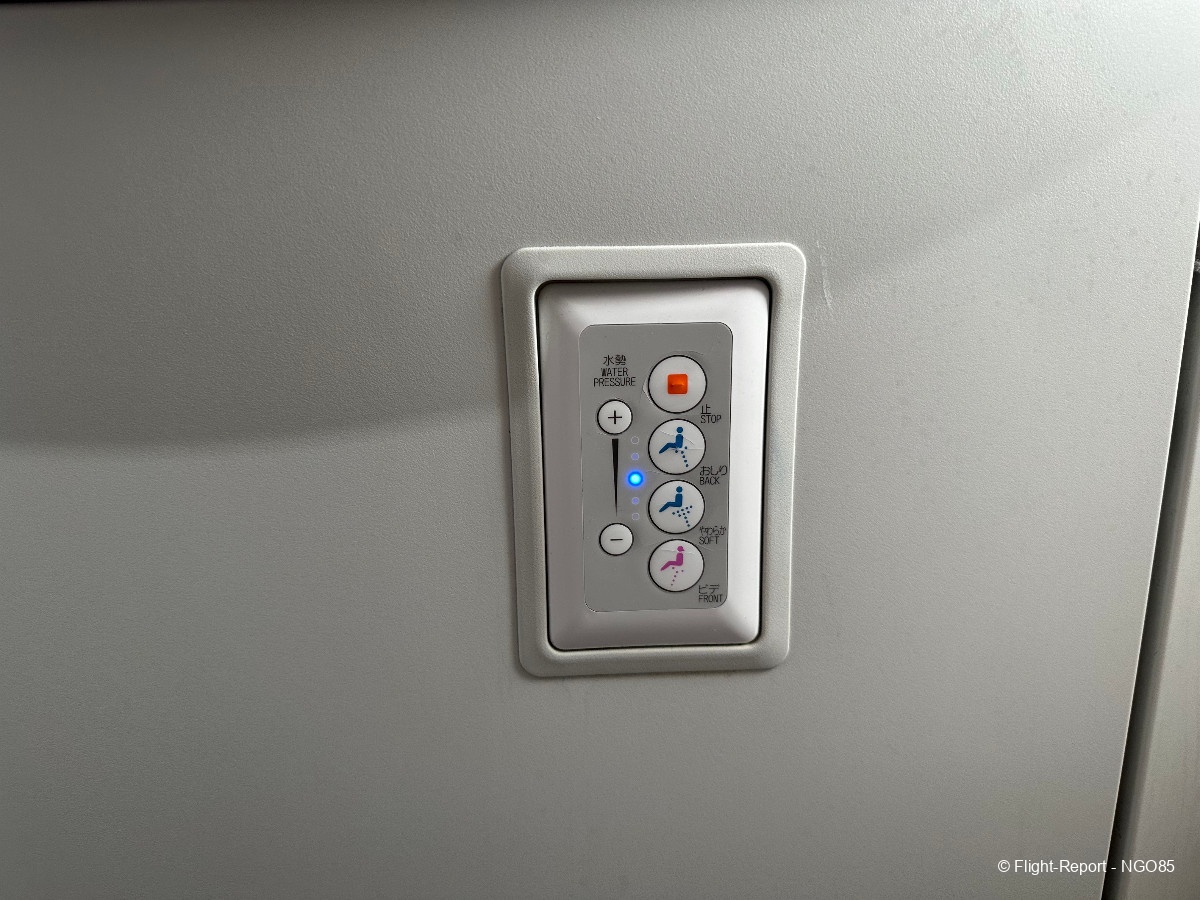

Lavatories almost always offer the best views on the plane.
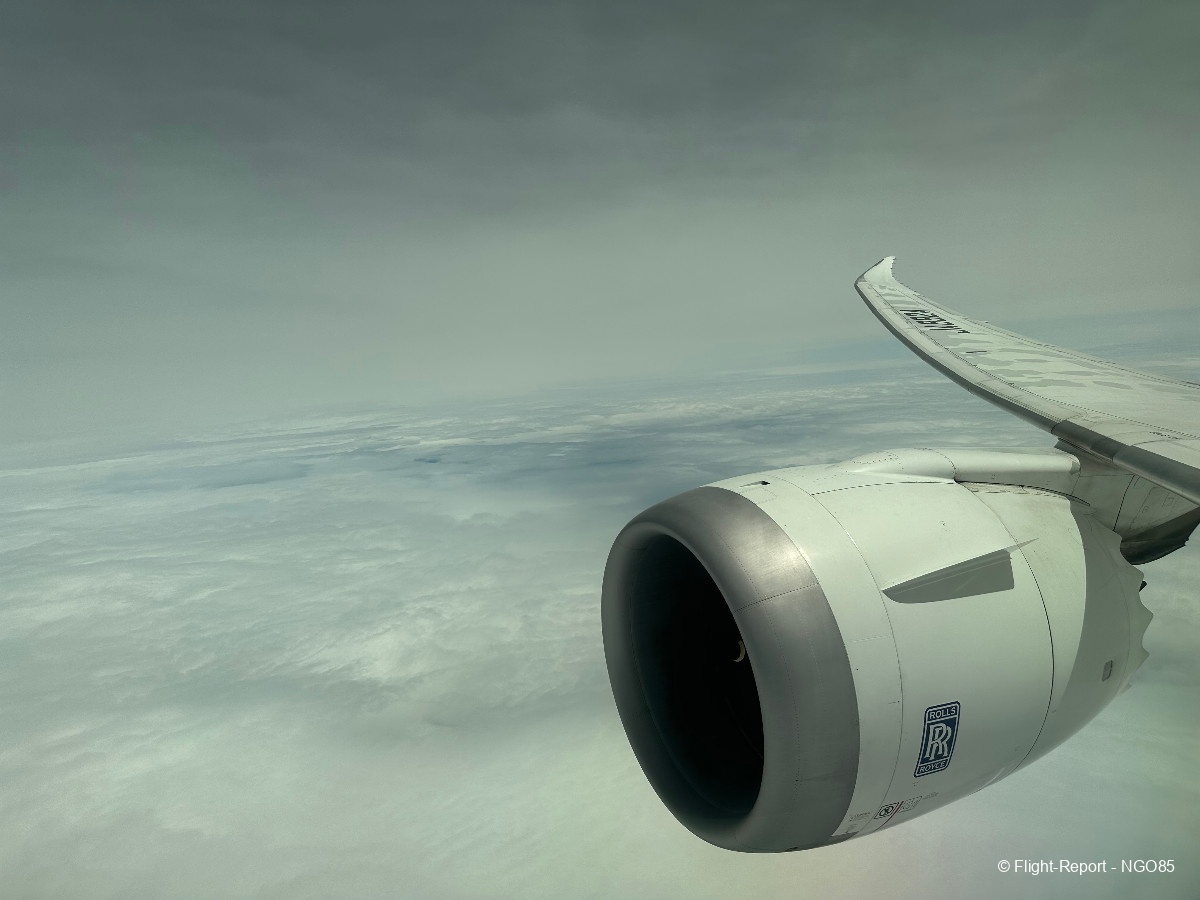
Back at my seat, the FA cleared my service items and asked if I wanted anything else. A shochu from Kagoshima to sip as we cross over its native Kyushu.

I lounged the rest of the flight and watched some Japanese dramas.
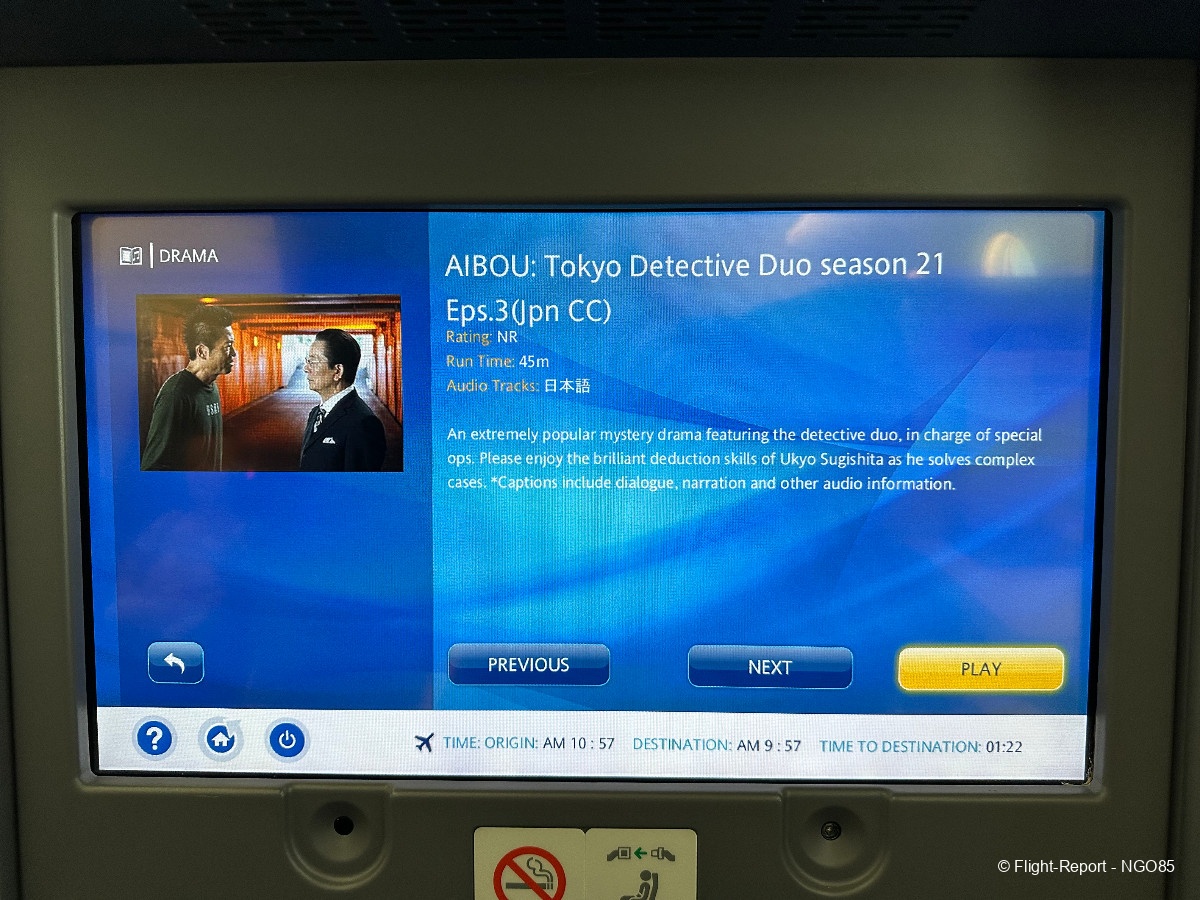
Pre-arrival announcements by the pilot were done 50 minutes out as we were crossing under Jeju.


The clouds finally broke as we started our short final into PVG from the south over the Hangzhou Bay.
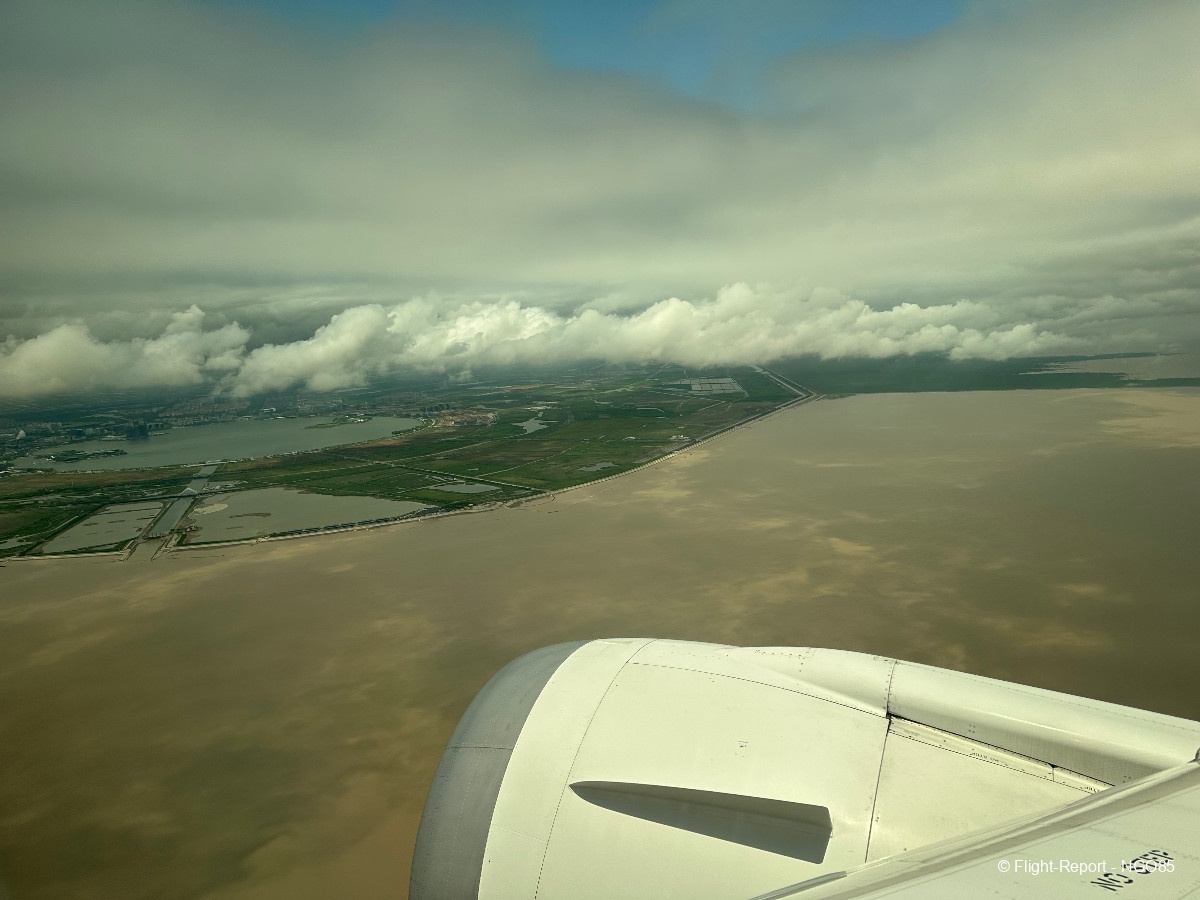
A gloomy day in Shanghai, but still good to see Chinese soil after 4 years.

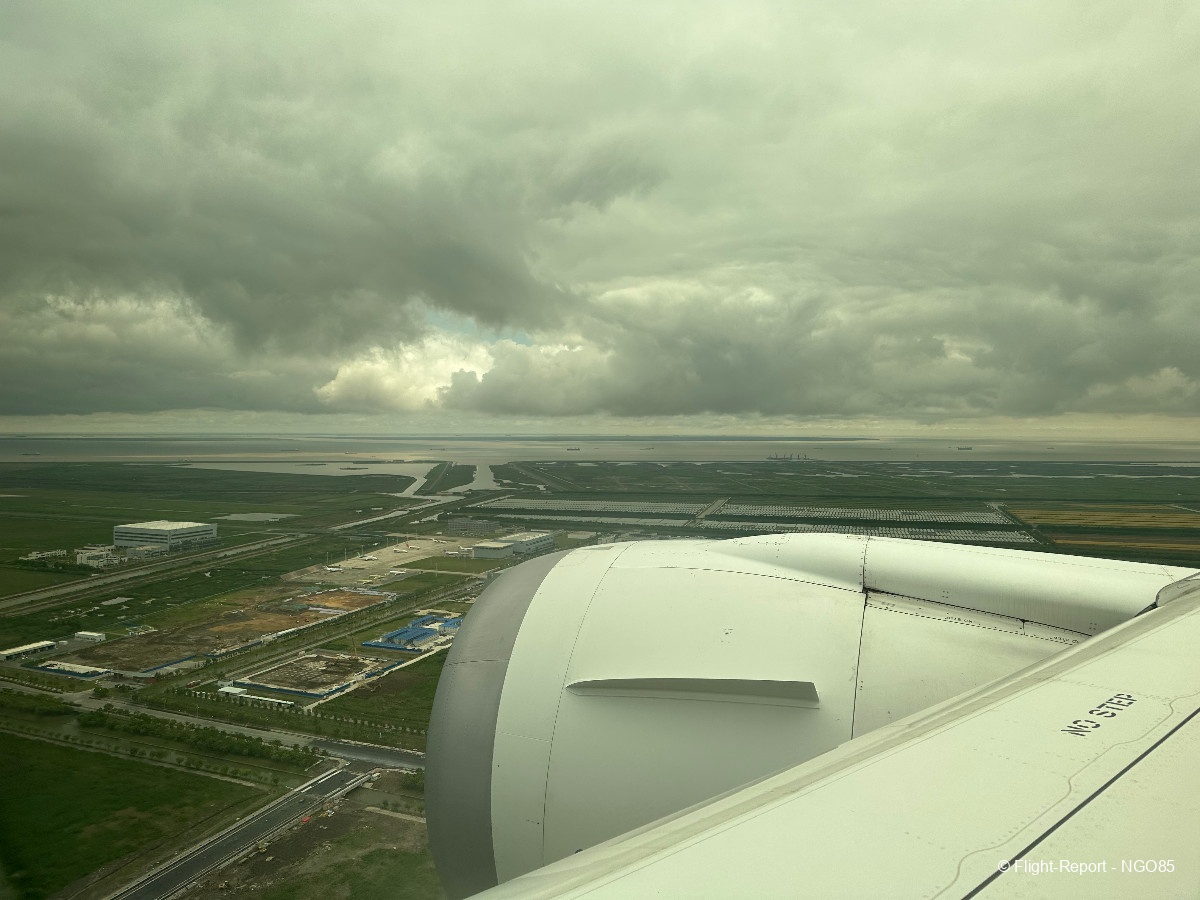
We had a hard landing on Runway 34R at 11:25 for an on-time arrival and started our short taxi over to T2.
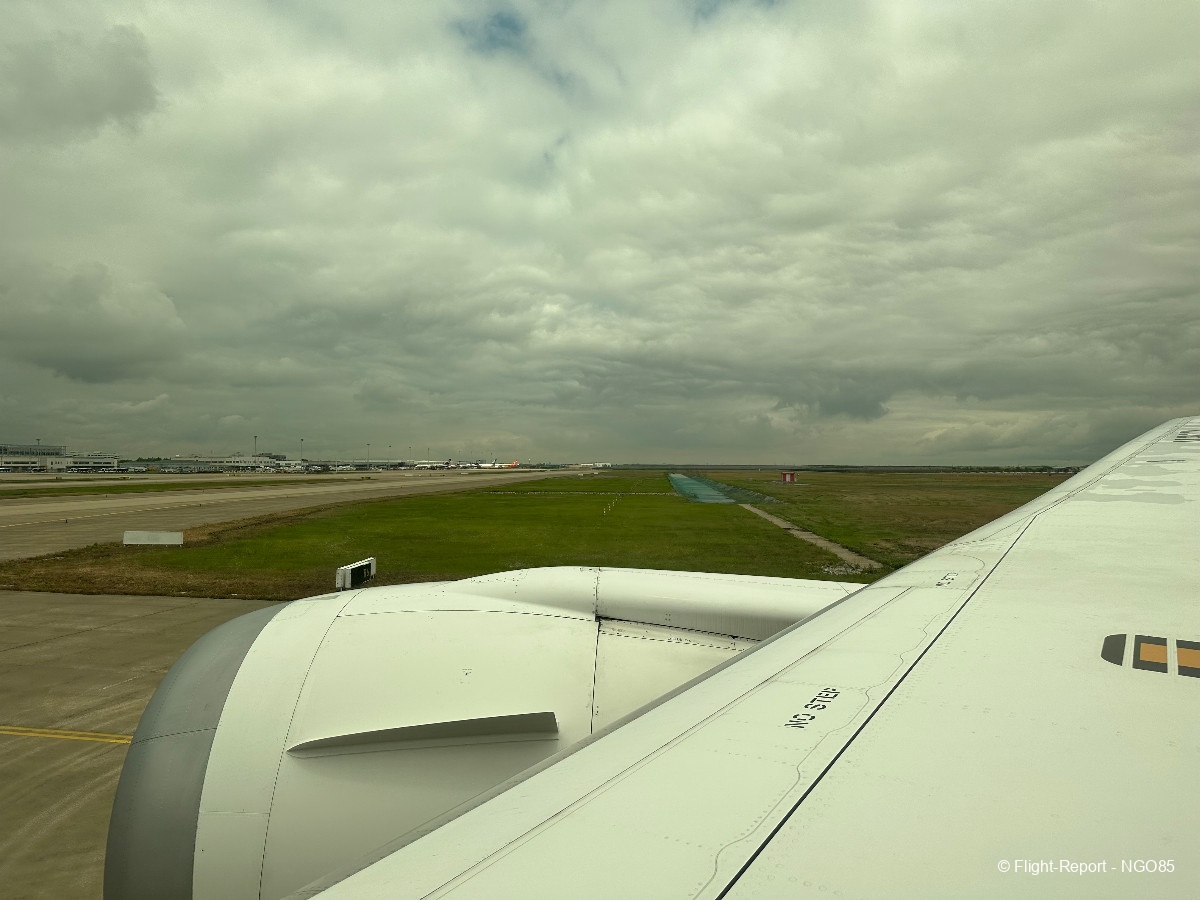
Some good diversity at T2 today. HU B789 and a crusty ~25 year old CX B773 (one of the few B773s back in service post-pandemic when they pulled them out of storage to operate these high volume regional routes).

AY A359 in OW livery.
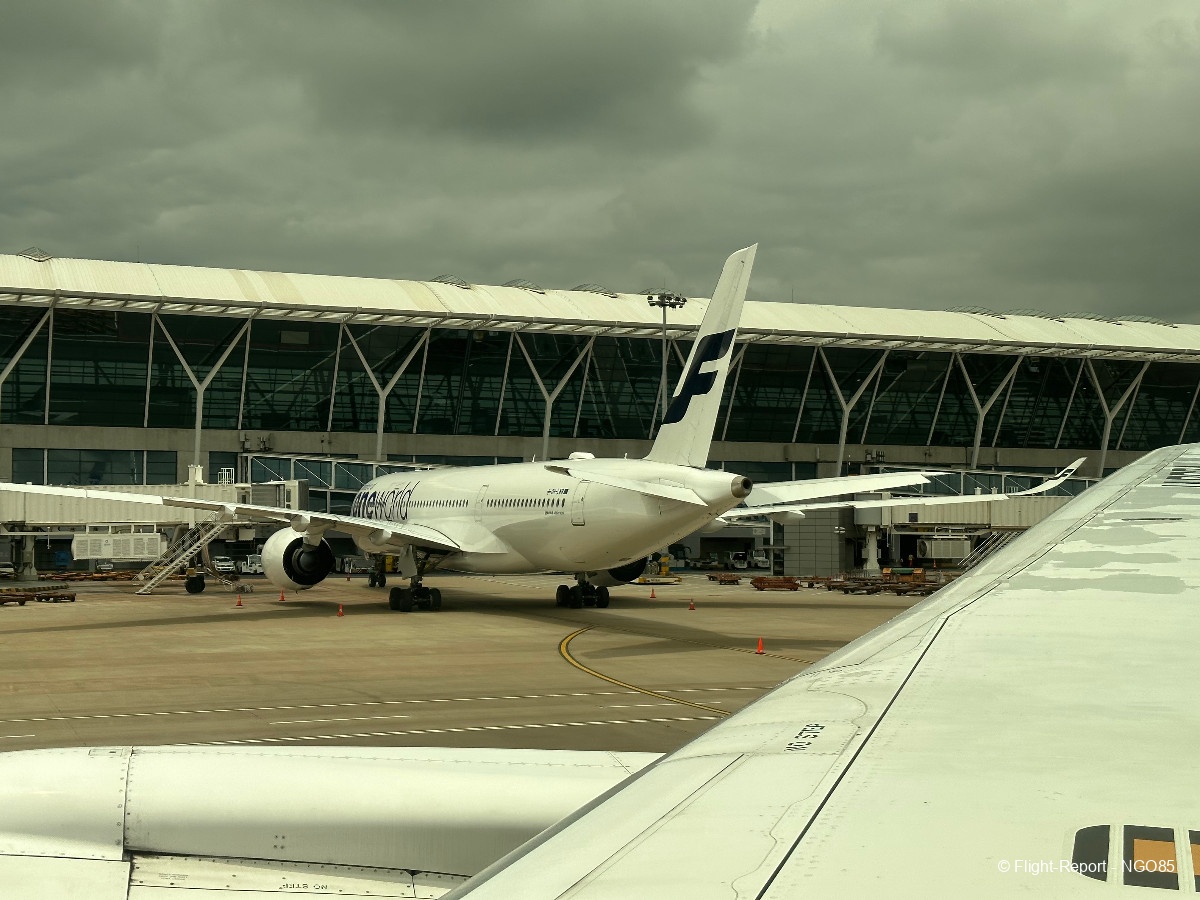
VS B789.
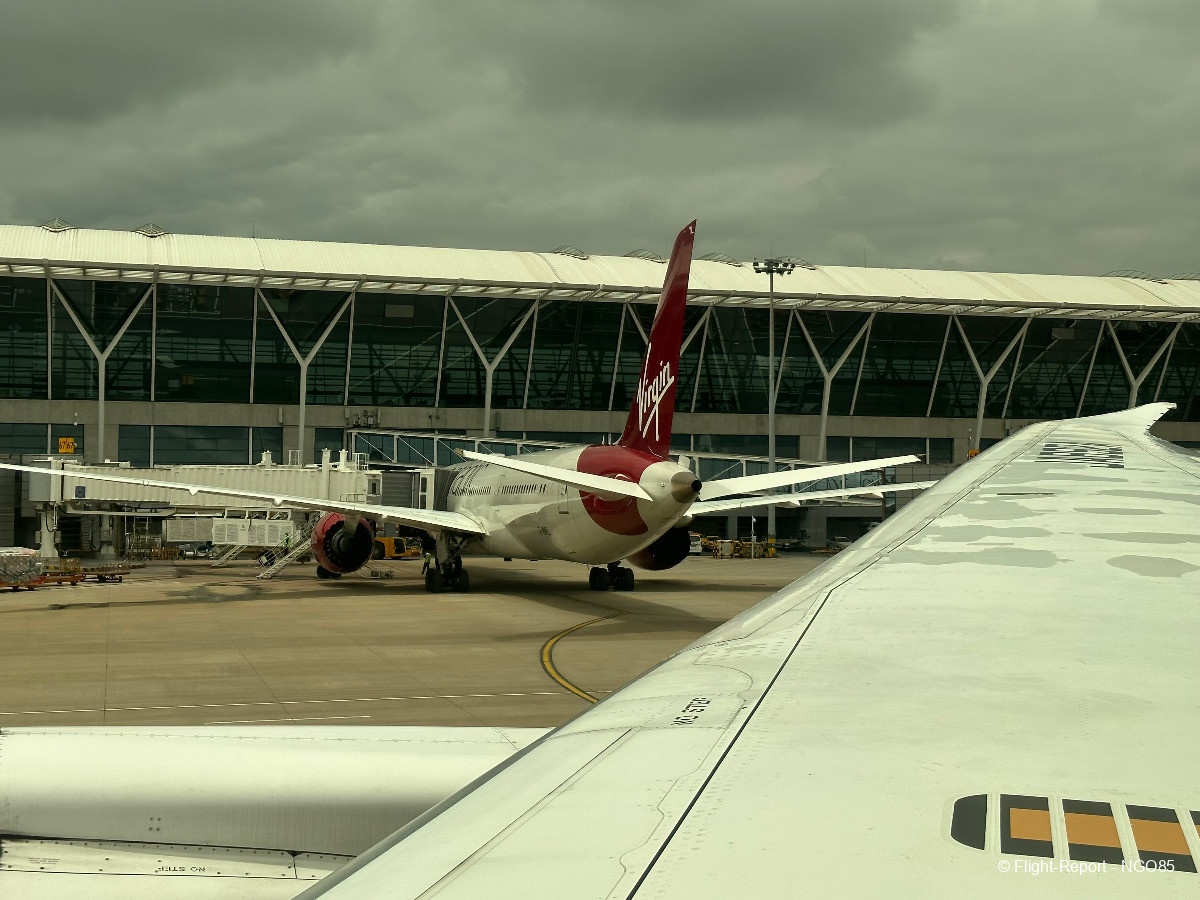
Welcome to Shanghai, long time no see…
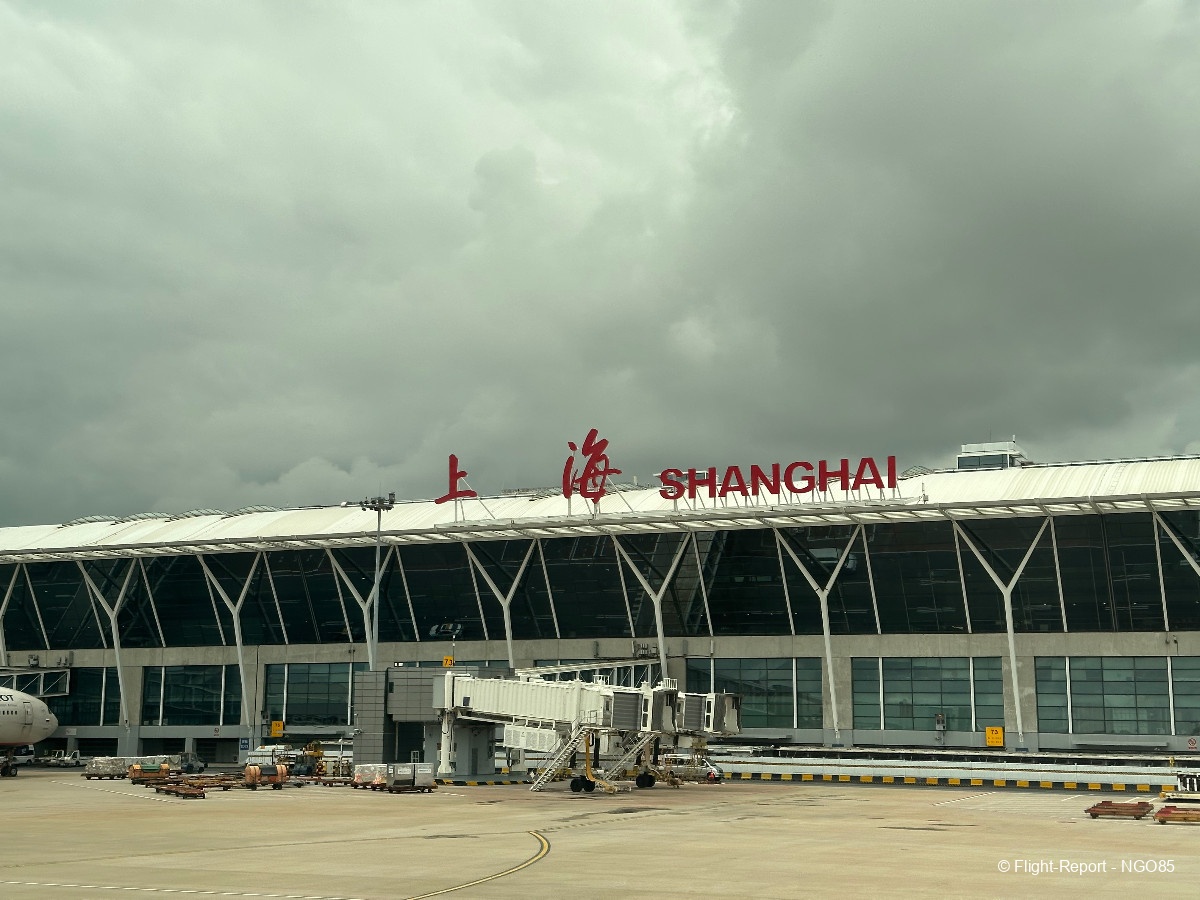
Where they let in some visitors we won't see elsewhere… SU B77W.

EY B789.
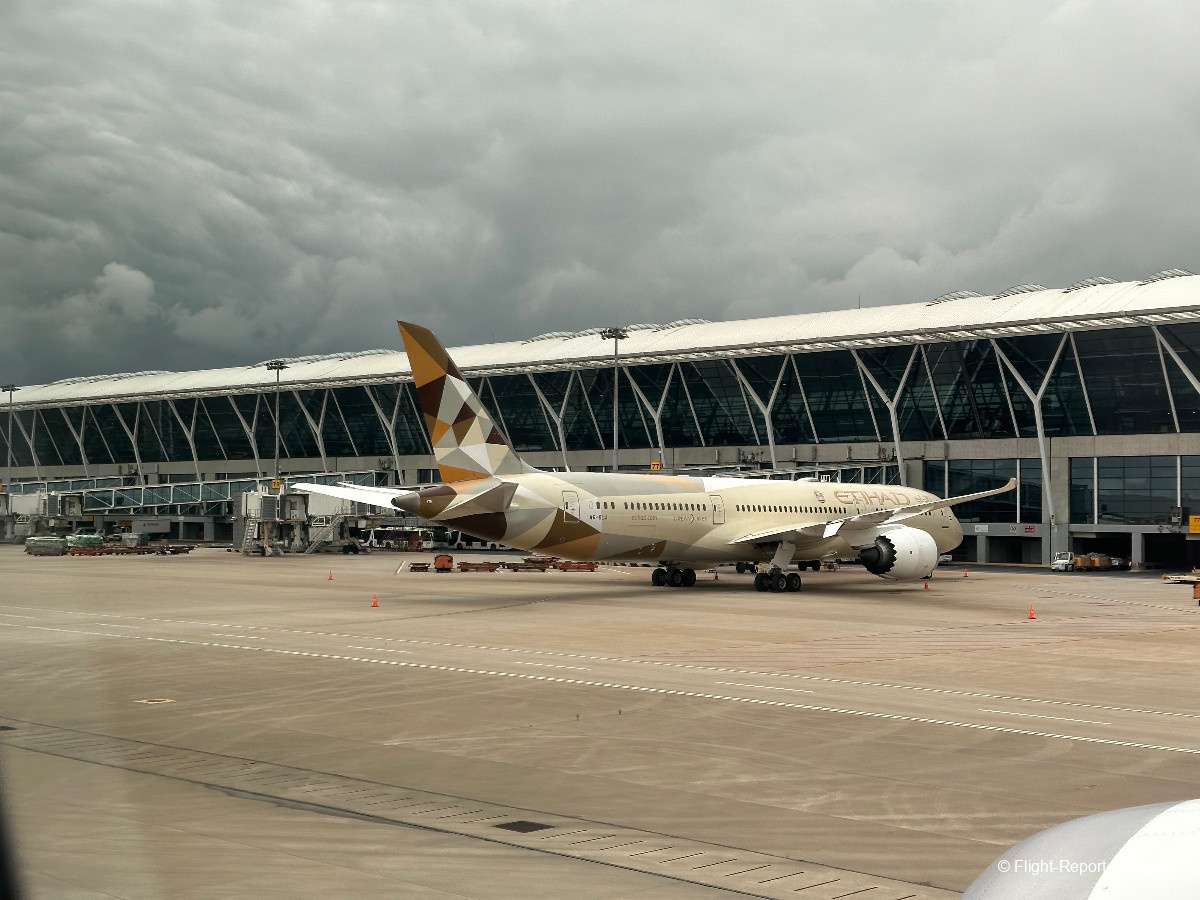
NZ B789.
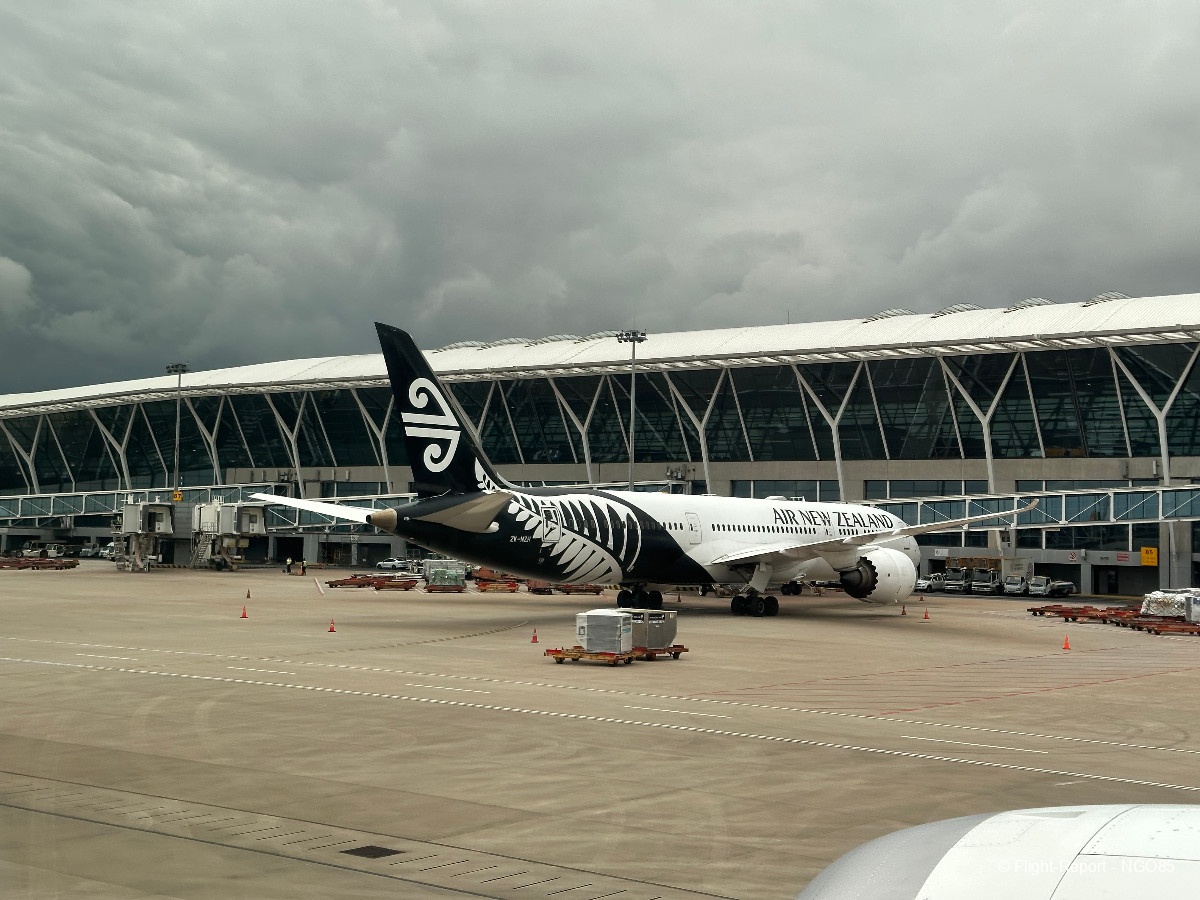
We will take our slot next to our B789 kin and the OZ A333 in from ICN.
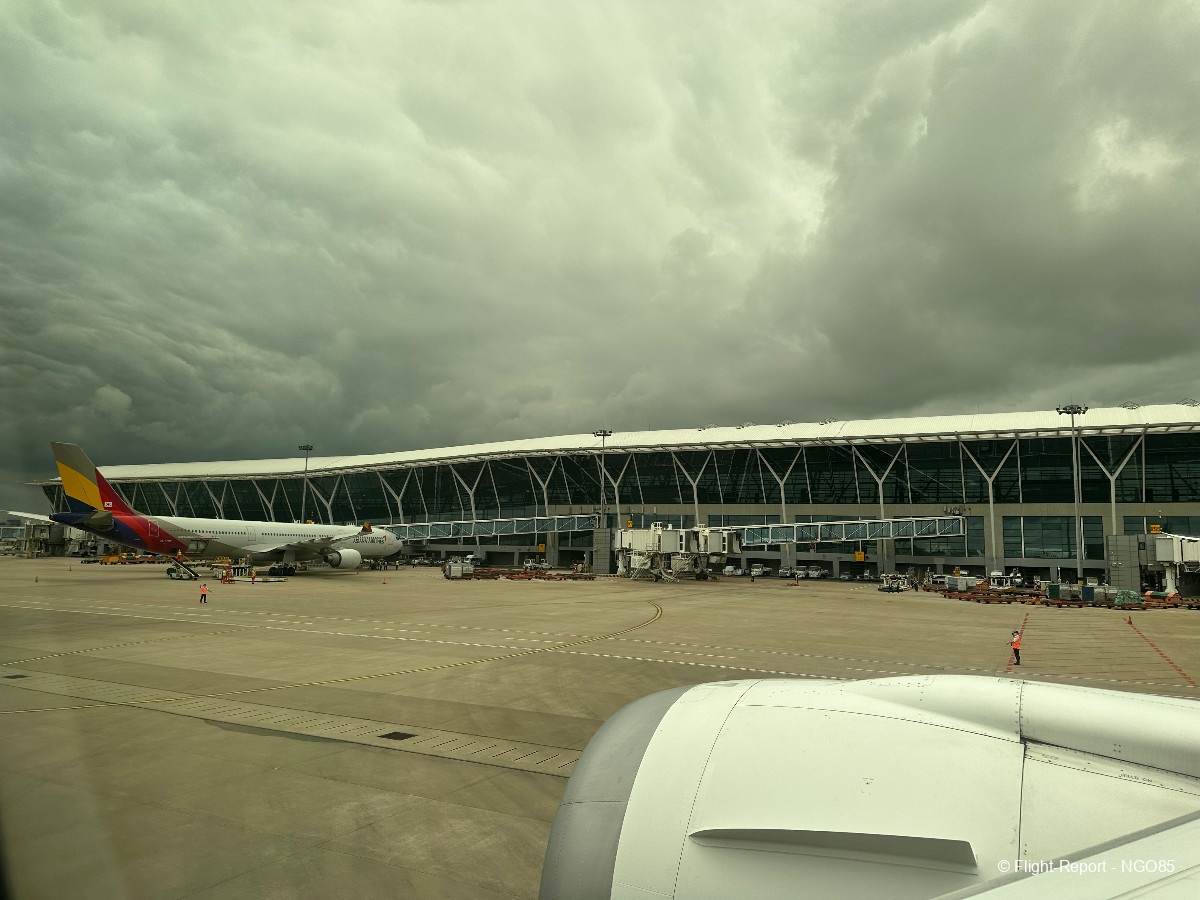

We come to a stop at 11:31. Can't complain about a 5 minute taxi at PVG.
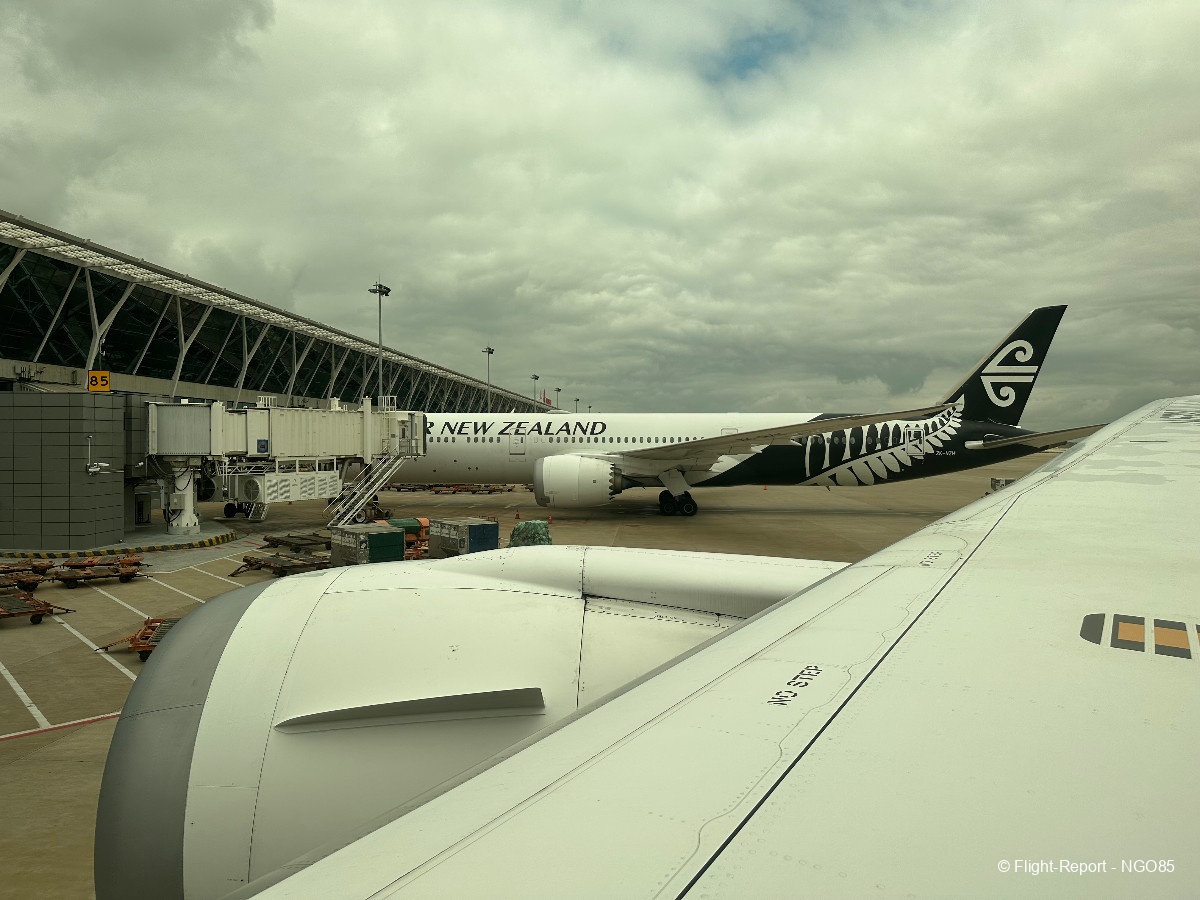
The jet bridges were quickly engaged and we were escorted out through L1. It wouldn’t be China without HSBC covered jet bridges up to the terminal.
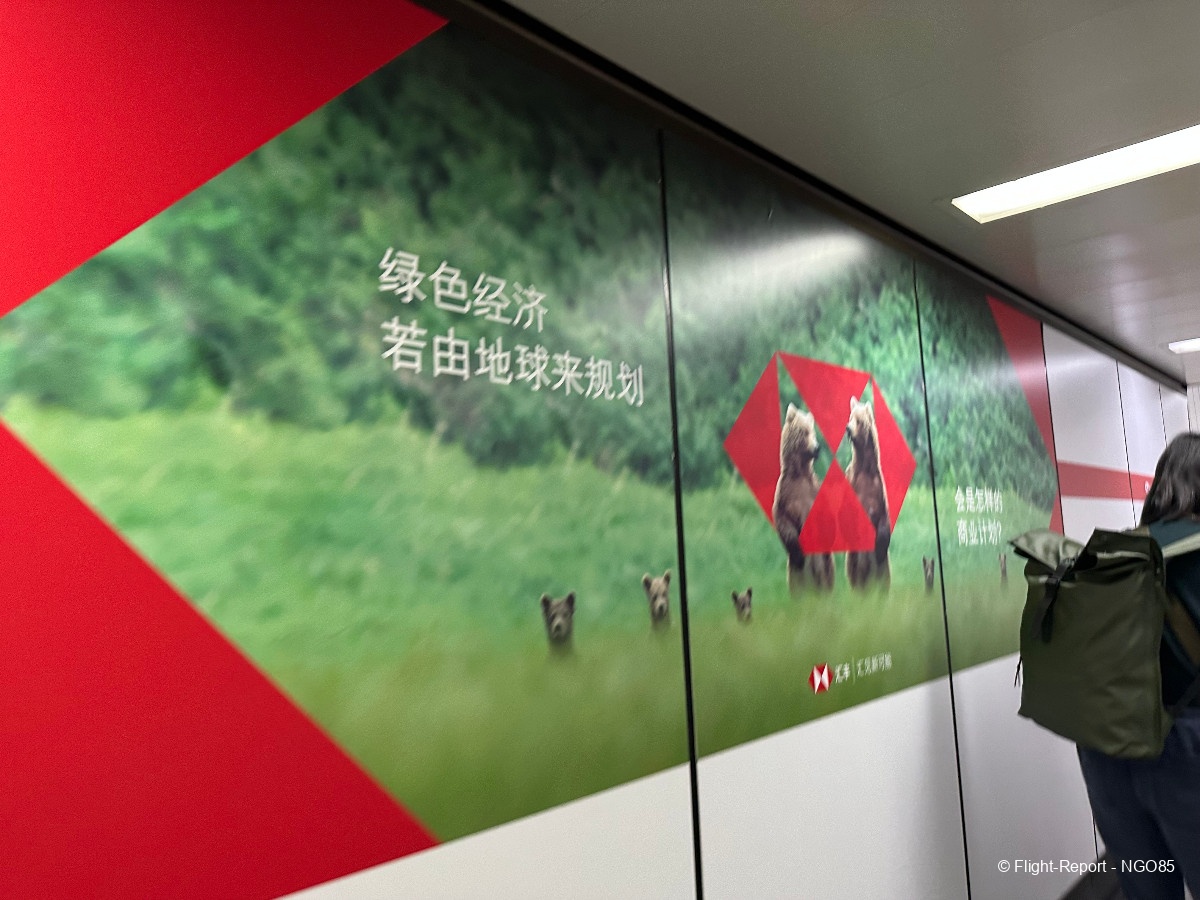
One last look at our plane before it turns around and heads back to NRT.
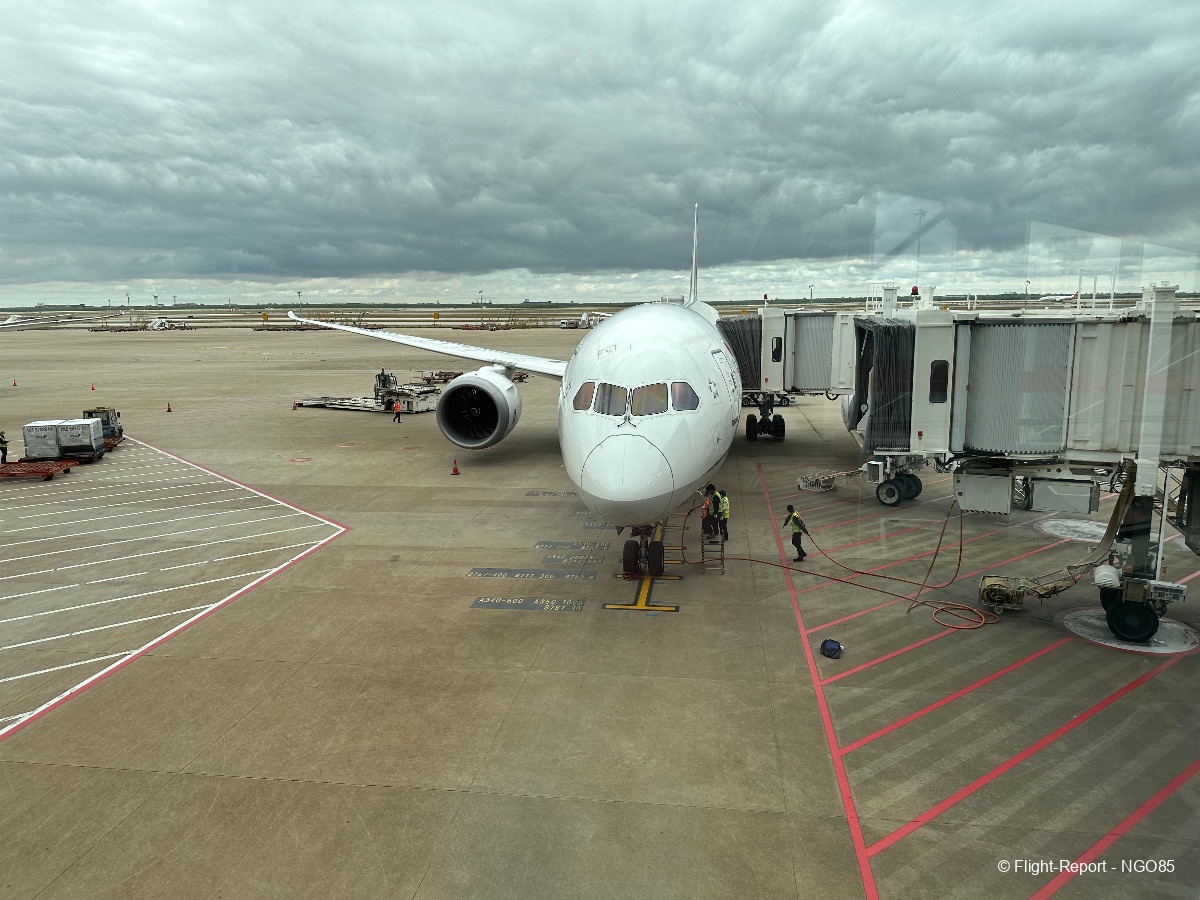
It was a long 400m walk to customs down T2 in an extremely muggy and hot terminal (clearly saving money by keeping the A/C off in the empty terminal). It was completely empty at immigration. Fingerprints, health checks (scan your QR code), and immigration were seamless and we were into the baggage claim by 11:45.

Bags were quickly off and circulating by 11:55 and priority tags were respected. PVG was eerily quiet. There was no line for taxis and we were heading out on the S1 by 12:05, probably a record from all of my previous PVG experiences. There were a couple of flights from HKG that landed behind us, but otherwise the international arrivals is quiet until the early afternoon when the European/North American flights arrive.
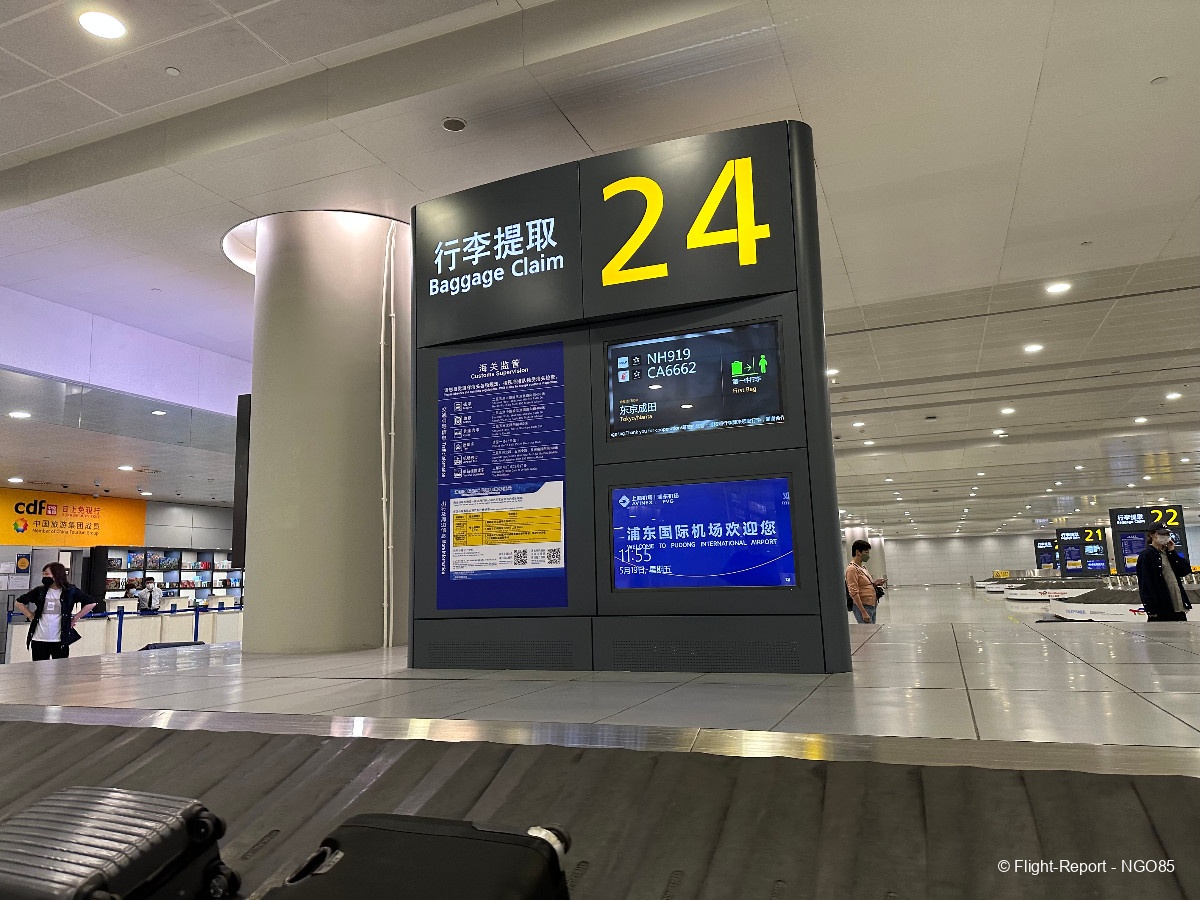
I'll leave off this series here as we begin our much anticipated visit to China. Thanks for stopping by!
flight details

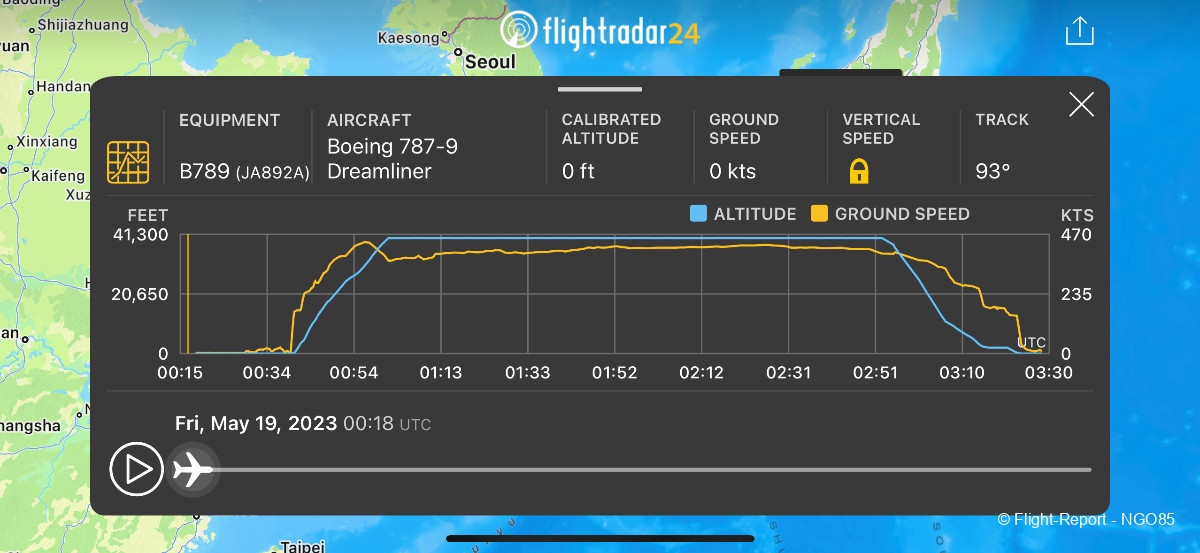

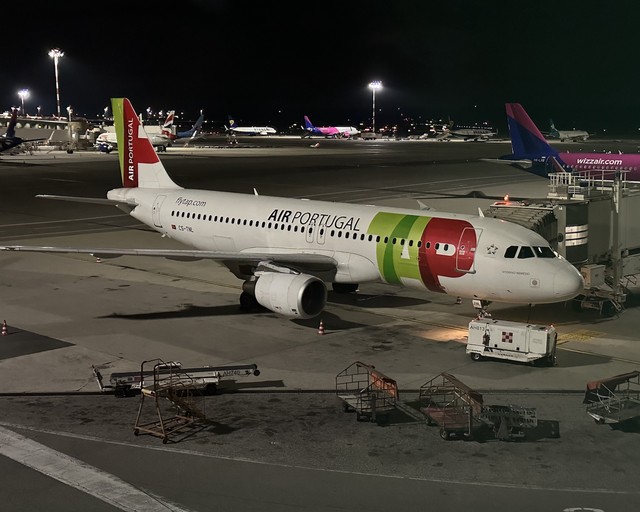
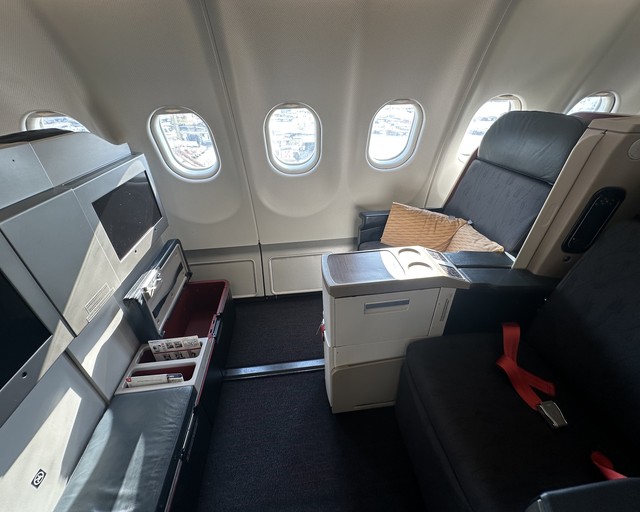
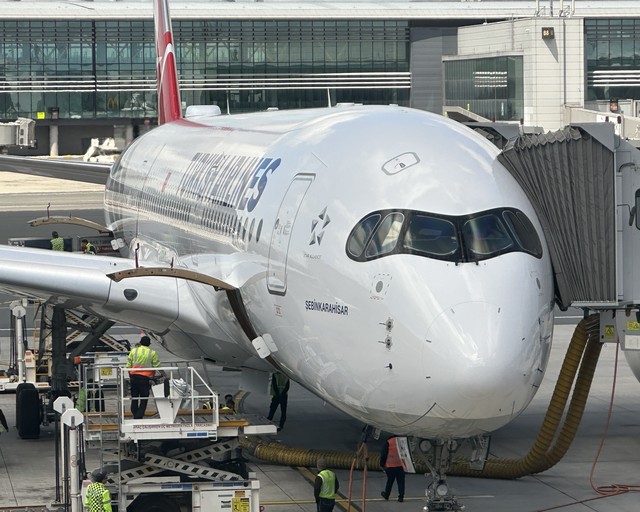
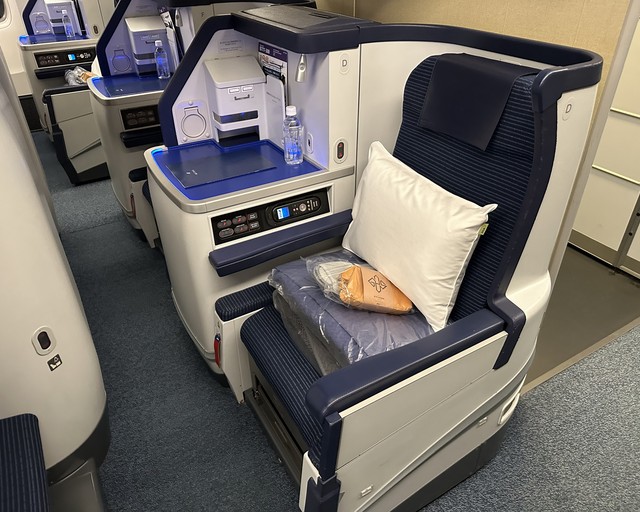
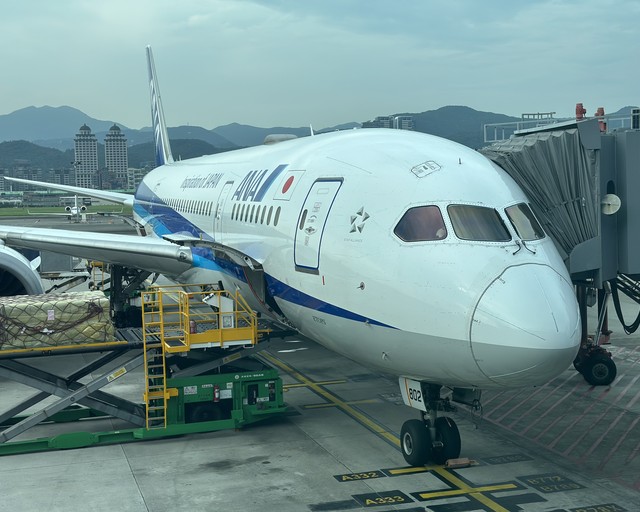

Good trip report! Thank you for sharing it with us! Took time to load the photos.
You’re welcome, thanks for stopping by!
Also, a 1-2-1 seat is always a plus. Concept is similar to SIA’s regional aircraft.
Coming from a 777, J seats are always noticeably narrower on 787 and A330, but still very nice of course.
While very similar, the updated model on the 787 is visually more modern and more attractive, mostly because of the better and bigger IFE, but the seats also look a bit less plasticky.
Once again the catering looks good, but not as good as JAL on a similar route—I don’t know about the Chinese carriers in comparison since there are so few reviews since Covid.
Overall a nice and consistent experience after a long haul TPAC J flight.
Thanks for sharing!
There is a stark contrast between NH's B788 and B789 cabins. The B788 has the more attractive staggered seating with alternating 1-2-1 and 1-1-1 (effectively 7 abreast) so they removed a seat compared to the 1-2-1 (effectively 8 abreast) on the B789 making it feel a lot wider. The B789 is definitely the least spacious of their current long-haul hard products.
From my experience, there is very little change in Chinese carrier service protocol from pre-pandemic times. CA/MU were already improving their catering, so it's not that different from what you would expect on other carriers in the region. When you compare to what BR offers on an analogous route, there is a drop-off in catering strength/amenities on NH.
Thanks for stopping by Kevin!